- Articles and Guides

11 Best Small Sailboat Brands: How to Choose Your Next Daysailer or Pocket Cruiser
12th oct 2023 by samantha wilson.

Sailing is a relaxing, invigorating pastime that allows you to harness wind and waves in a unique and historic way without requiring a 50-foot yacht to enjoy what’s special about the experience. In fact, small sailboats allow a delightful back-to-basics experience that often gets lost on larger, systems-heavy sailboats.
On a small sailboat you can connect with the sea, feeling the boat move beneath you. The boat is typically easy to rig, simple to sail, and can even be sailed solo. Small sailboats give you the freedom to trailer your or car-top your boat and go anywhere, and they’re perfect for learning the nuances of sailing. There are many excellent brands and models of small sailboat, each with their own appeal, and here we narrow down some of our favorite in the daysailer and pocket cruiser categories under 30 feet.
Difference Between a Daysailer and a Pocket Cruiser
While there are many different types of sailboat on the market and there is no single definition of either a daysailer or a pocket cruiser, they are used in a particular way, as the names imply. The term daysailer covers a huge array of sailboats, smaller and sometimes larger, and is generally defined as any day boat used for local sailing, with a simple rig, and easy to get underway. A pocket cruiser typically offers a cabin and head, and adequate accommodations for an overnight stay and sometimes longer cruises. Having said that, there is a large overlap between the two in many instances, so the lines may become blurred.
What Size is a Small Sailboat?
Small is a relative term of course, but in general—and for the purposes of this article—a small sailboat is one that could be sailed by a small crew, often with one or two people aboard. It will have a simple rig and be trailerable, and it might be either a daysailer or pocket-cruiser style vessel as above. Within those categories, there are many models and styles, but when it comes to length we consider a sailboat as small when it’s under 30 feet in overall length.
The Best Sailboats Under 30 Feet
Pocket cruiser: Beneteau First 27. The Beneteau First 27 is a modern example of a pocket cruiser, earning Cruising World ’s Boat of the Year award in the Pocket Cruiser category in 2022. With space for up to six people accommodated in a separated bow-cabin and open saloon, it offers families the chance to go farther, explore more, and cruise in comfort. There is a galley with freshwater and a head, adding to the interior home comforts. The sailboat itself is modern, fast, and stable, designed by Sam Manuard, and has been designed to be incredibly safe and almost unsinkable thanks to its three watertight chambers. The handling is also refreshingly intuitive, with a well-designed cockpit, simple deck controls, and double winches allowing it to be sailed solo, by two people, or a small crew.

Photo credit: Beneteau
Daysailer: Alerion 28. You’ll certainly turn heads cruising along in an Alerion 28, a daysailer whose forerunner by the same name was designed by Nathanael Herreshoff in 1912 and then updated with a modern underbody for fiberglass production by Carl Schumacher in the late 1980s. This pretty daysailer manages to combine a traditional silhouette and classic feel, with very modern engineering creating an excellent package. Over 470 of these sailboats were built and sold in the past 30 years, making it one of the most popular modern daysailers on the water. With a small cabin and saloon, complete with miniature galley area, it offers respite from the sun or wind and the option for a night aboard. The cockpit offers a beautiful sailing experience, with plenty of space for the whole family.

Photo credit: Alerion Yachts
The Best Sailboats Under 25 Feet
Pocket cruiser: Cornish Crabber 24. British manufacturer Cornish Crabber has been producing beautiful, traditional style small sailboats for decades, ensuring they honor their heritage both in the construction style and appearance of their boats. The Cornish Crabber 24 is the most iconic of their range and dates back to the 1980s. It offers a simple yet surprisingly spacious interior layout with cabin, galley, and head, and a good sized cockpit, as well as seating for up to six people. It’s the perfect family sailboat, with clever use of storage as well as just under 5000 pounds of displacement providing stability and easy tacking. Aesthetically the 24 is simply beautiful, with a traditional silhouette (combined with modern engineering), finished in hardwood trims.

Photo credit: Cornish Crabber
Daysailer: Catalina 22 Capri. Catalina sailboats need little introduction, and are one of the world’s best-known, most-respected brands building small sailboats. The Catalina 22 Capri (also available in a sport model) is a great example of what Catalina does so well. While we’ve classified it as a daysailer, it could easily cross into the pocket cruiser category, as it offers excellent sailing performance in almost all conditions as well as having a small cabin, galley, and head. Loved for its safety, stability, ease of handling and simple maintenance, it makes for a good first family boat for getting out onto the bay or lake.

Photo credit: Catalina
The Best Sailboats Under 20 Feet
Pocket cruiser: CapeCutter 19. This is another model that combines the beauty of the traditional silhouettes with modern-day advancements. The design originates from the classic gaff cutter work boats, but today offers excellent performance—in fact it’s one of the fastest small gaffers in the world. The interior is cleverly spacious, with four berths, two of which convert into a saloon, as well as a simple galley area. With quick rigging, it can be sailed solo, but is also able to accommodate small groups, making it a capable and hugely versatile pocket cruiser.

Photo credit: Cape Cutter 19
Daysailer: Swallow Yachts’ BayRaider 20. Classic looks with modern performance are combined in Swallow Yachts’ beautiful BayRaider 20. This is one of the most capable and safest daysailers we’ve seen, but also incredibly versatile thanks to the choices of ballast. Keep the ballast tank empty and it’s light and fast. Fill the tank up and you’ve got a stable and safe boat perfect for beginners and families. While it’s got an eye-catching traditional style, the engineering is modern, with a strong carbon mast and construction. While this is a true daysailer, you can use the optional spray hood and camping accessories to create an overnight adventure.

Photo credit: Swallow Yachts
The Best Sailboats Under 15 Feet
Pocket Cruiser: NorseBoat 12.5. Can we truly call the NorseBoat 12.5 a pocket cruiser? Yes we can! The sheer versatility of this excellent little sailboat has convinced us. These beautiful hand-crafted sailboats offer exceptional performance and are described by the manufacturer as ‘the Swiss Army Knives of sailboats’. The traditionally styled 12.5 can be sailed, rowed, and motored. It can be trailered, easily beached, and even used as a camp cruiser, allowing for overnight adventures. There is no end to the fun that can be had with this easy-to-sail and easy-to-handle boat, which makes it a dream to learn in. With positive flotation, lots of clever storage, and a full-size double berth for camp cruising, it really is the perfect mini pocket cruiser.

Photo credit: NorseBoats
Daysailer: Original Beetle Cat Boat 12: All across the bays of the US east coast cat boats have long been part of the ocean landscape. Able to access shallow rocky coves yet also withstand the strong coastal winds, these traditional New England fishing boats have an iconic shape and gaff-rigged mainsails. Beetle Cat have been producing elegant wooden cat boats for over 100 years – in fact they’ve made and sold over 4,000 boats to date. Their 12 foot Cat Boat 12 is one of their finest models, offering lovely daysailing opportunities. It has a wide beam and centerboard that lifts up, allowing it to access shallow waters, as well as a forward mast and single sail gaff rig in keeping with the traditional cat boats. To sail one of these is to be part of the heritage of New England and Cape Cod, and to honor the ancient art of hand-made boat building.
Beetle Cat official website

Photo credit: Beetle Cat
The Best Small Sailboats for Beginners
When it comes to learning to sail, it’s important to have a boat that is easy to handle. There’s no quicker way to put yourself or your family off sailing than to start off with a boat that is either too big or too complicated. When choosing your first boat we recommend the following characteristics:
- Small: The benefits of starting off with a small boat are many, as we’ve seen above. They’re easier to control as well as to moor, and they react more quickly to steering and sails. They can be trailered and launched easily, and the loads generated are much lower than on bigger, heavier boats.
- Easy to sail: You want a boat that is stable and forgiving of mistakes, doesn’t capsize easily, and isn’t too overpowered in a stronger breeze. Keep things simple and learn as you go.
- Simple sail configuration: Choosing a boat that can be rigged by one person in a few minutes, and easily sailed solo, makes it easier to take along inexperienced crews. With regards to the rig, all you need are a halyard to hoist the mainsail and a sheet to control the mainsail.
- Tiller steering: We recommend boats with tiller steering over wheel steering when starting out. The tiller allows you to get a real feel for the boat and how the rudder works as it moves through the water.
For more information on choosing the best beginner sailboat check out our full guide. There are many popular brands of beginner boats including Sunfish, Laser, and Hunter Marlow. Some of our favorites include;
Hobie 16: The classic Hobie catamaran has been a well-loved beginner sailboat for years, and the Hobie 16 started life back in 1969. Since then they’ve made and sold over a staggering 100,000 of the 16s. It has twin fiberglass and foam hulls, a large trampoline, and a pull-up rudder so it can be sailed straight onto the beach. The basic package comes with an easy to handle main and jib with plenty of extras available too such as a spinnaker and trailer. The Hobie 16 promises a great learning experience and lots of fun in a very nifty and inexpensive package.

Photo credit: Hobie
Paine 14: You’ll immediately fall in love with sailing when you step into a beautiful Paine 14. Made from seamless epoxy cold-molded wood, the P-14 is simply beautiful and offers the classic sailing experience with the design and innovation of a more modern hull and rig. Two people will be able to enjoy getting out on the water together and learning the ropes. The Paine 14 has a lead ballast keel that accounts for nearly half her weight, giving her the feel of a much larger boat, but is still trailerable and easy to manage offering the best of both worlds.

Photo credit: Chuck Paine
High-Performance Small Sailboats
Small sailboats generally become high performers if they are light, have a lot of sail area, or they have more than one hull. More recently, some of have been designed with foiling surfaces, as well. For the purposes of this article, we’d like to close by pointing out one model that is super fast and has versatile pocket-cruising capabilities.
Corsair 880 trimaran : The Corsair 880 trimaran is the grandchild of the company’s F27, a model that launched the popularity of trailerable leisure trimarans about 40 years ago. The 880 has taken the model to new heights and exemplifies the incredible space benefits you can achieve in a 29-foot sailboat. We’re talking an aft cabin, room to sleep 5 people, an enclosed head, and standing headroom in the galley and main saloon. It brings many of the opportunities that a much larger yacht plus the ability to cruise in extremely shallow water. Whether you want to cruise to the Bahamas or enjoy a high-adrenaline race, the Corsair 880 offers incredible performance and unlimited adventures in a truly pocket size.

Photo credit: Corsair
Written By: Samantha Wilson
Samantha Wilson has spent her entire life on and around boats, from tiny sailing dinghies all the way up to superyachts. She writes for many boating and yachting publications, top charter agencies, and some of the largest travel businesses in the industry, combining her knowledge and passion of boating, travel and writing to create topical, useful and engaging content.

More from: Samantha Wilson
Related Articles and Guides
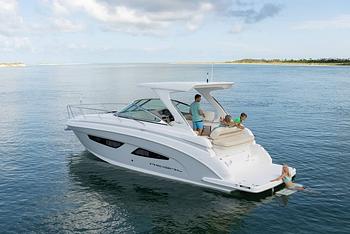
6th Sep 2024
The Best Mini Yacht Brands for Cruising and Luxury
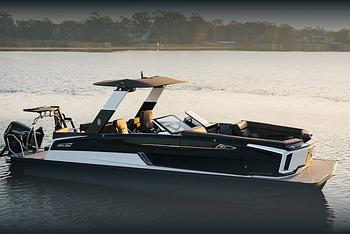
16th Aug 2024
Best Luxury Pontoon Boat Brands Have it All: Glamor, Speed, Fishing, Waterslides...
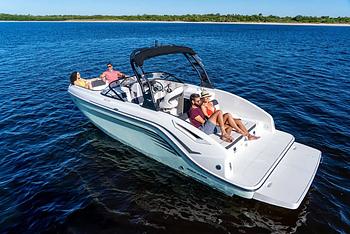
10th Aug 2024
Deck Boat vs. Bowrider: Which Runabout is Best?

19th Jul 2024
The World’s Best Yacht Brands

- Explore Rightboat
- Boats for Sale
- Boating Articles
- Buyers Guide
- About RightBoat
- Sell Your Boat
- Boat Selling Advice
- All manufacturers
- All categories
- Are you a broker/dealer?
- Learn more about the Rightboat:HUB
Enter your email to keep up to date with the latest news
Join for free
Sign up now for free and discover how easy it is to keep up to date with THE latest boats for sale. Find your right boat, and tailor your voyage to finding your next boat.
Benefits of becoming a member:
- Set up tailored alerts
- Personalise your experience
- Download full specifications and broker details
- Keep tabs on your favourite boats
Are you a broker? Join as a Broker
Rightboat - join for free.
Do you have an account already? Login
Save this search
Save your search and receive new boats in your email..
You can unsubscribe from your alerts whenever you like. By pressing the button you accept the Legal Terms and conditions
Better Sailing
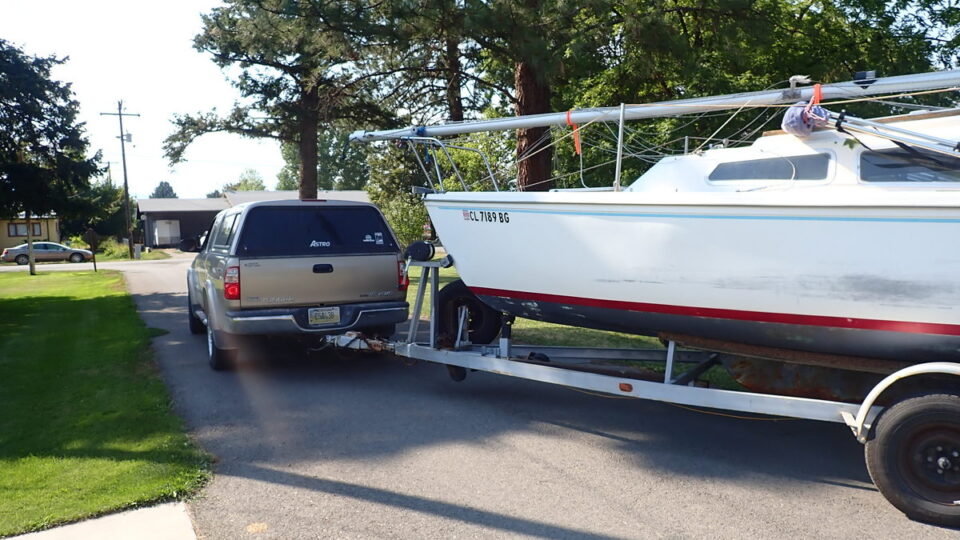
Best Small and Trailerable Sailboats
Cruising with a trailerable sailboat means that you can voyage in a small and comfy sailboat with the advantage of saving some serious costs. Having a trailerable sailboat saves you money for storage fees, boatyard haulout, and boat insurance, among others. There are two main categories of trailerable sailboats; performance-oriented boats and all-round pocket cruisers. So, if you’re a part-time sailor but still want to experience the joys of sailing continue reading this article so as to find out which are the best small and trailerable sailboats on today’s market. Know that there are many decent trailerable sailboats that managed both offshore and coastal cruising. So, keep reading and find the one that suits you best!
Catalina 22 Sport – The Best Trailerable Sailboat
Catalina brand is one of the most constructed sailboats in the US and has manufactured a great deal of capable and robust sailboats. The Catalina 22 Sport is one of the most preferred pocket and race cruisers since 2004. The model pioneers for the one-piece hull liner that has become standard in most high volume small boats. Furthermore, it has enough trim along with a well-proportioned rig and a hand-laid fiberglass hull construction. Other great features include a retractable lead keel, a roomy cabin, a spacious cockpit, and a fractional rig with a mainsail and a roller-furling jib. You can get a used Catalina 22 for as low as $5,000 and a brand spanking new one for around $40,000.

>>Also Read: Beneteau vs. Catalina: Which Is a Better Sailboat?
West Wight Potter 15
The West Wight Potter 15 is one of the best small trailerable and seaworthy 15-foot sailboats of all time. It’s easy to handle and great for both coastal and offshore cruising. She has an aluminum mast and tiller, a small cabin that comfortably sleeps a couple and also we can’t miss referring to her elegant design. Furthermore, it can be easily stored, it’s relatively cheap to buy and can be purchased both as a new or used boat, as many sailors prefer it for stepping up from a dinghy to a pocket cruiser.
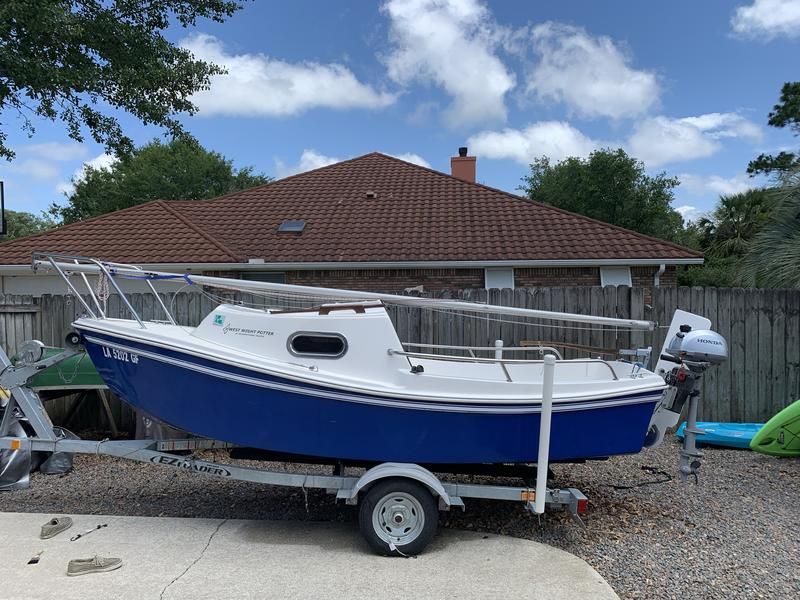
>>Also Read: Best Pocket Cruisers Under 20 Feet
This small trailerable boat features a modern design and can be a top choice for many sailors, both for beginners or even for experienced ones. She surprisingly manages well in different weather conditions and she’s also relatively easy to handle. As a result, she has earned by right the title of a truly seaworthy small cruising vessel. Moreover, her robust design from the masthead to keel design is proven to be highly durable and comes with a mainsail and 110% genoa. A great feature of this model is the comfy and interior layout that offers a great amount of space for her size.
And that’s why the Hunter 27 is a great liveable sailboat having enough storage space, 6ft of standing headroom, berths, as well as plenty of counter space and seatings. Lastly, as a true trailer sailor, she has a shoal draft of under 4ft and a displacement of less than 8,000lbs. You can find her in today’s market as a used or brand-new model with a price ranging from $20,000 to $45,000.
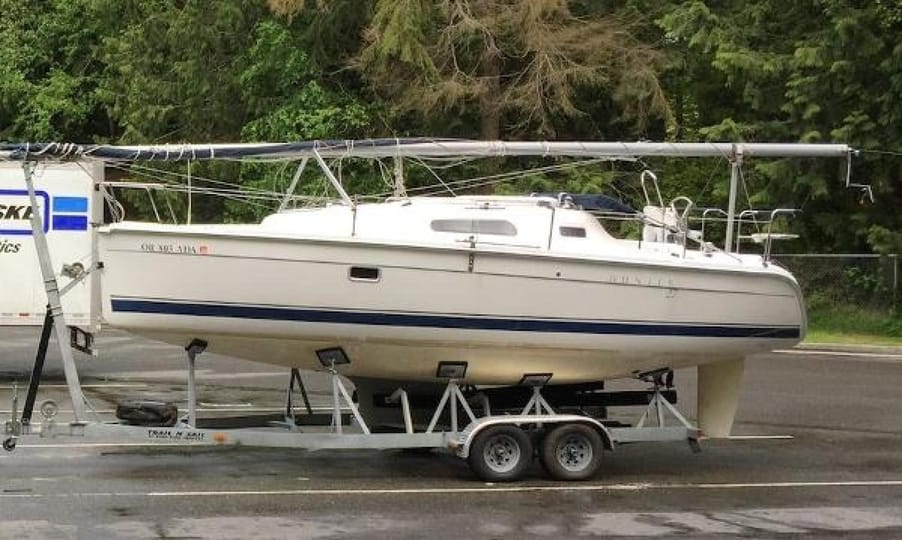
>>Also Read: Best Sailboats Under 100k
BayRaider
The BayRaider from UK’s Swallow boats is a somehow newcomer to the small trailerable boat market in the US. She features a large and open cockpit, is ketch-rigged, and has a gunter-style mainmast. As for the topmast and mizzen, they’re both carbon-fiber; you can also apply this to the mainmast. This model can be sailed with a dry hull in lighter weather conditions or if you want to maximize its stability you can do so by removing the 300lbs of water ballast. The water ballast offers great performance in light to medium winds and makes the boat suitable for different sailing or weather conditions and levels of experience. Lastly, as she has the centerboard and hinged rudder raised she can be maneuvered even in the thinnest water. She has a self-tacking rig and is easy to trailer; all these features make her a great choice for novices.
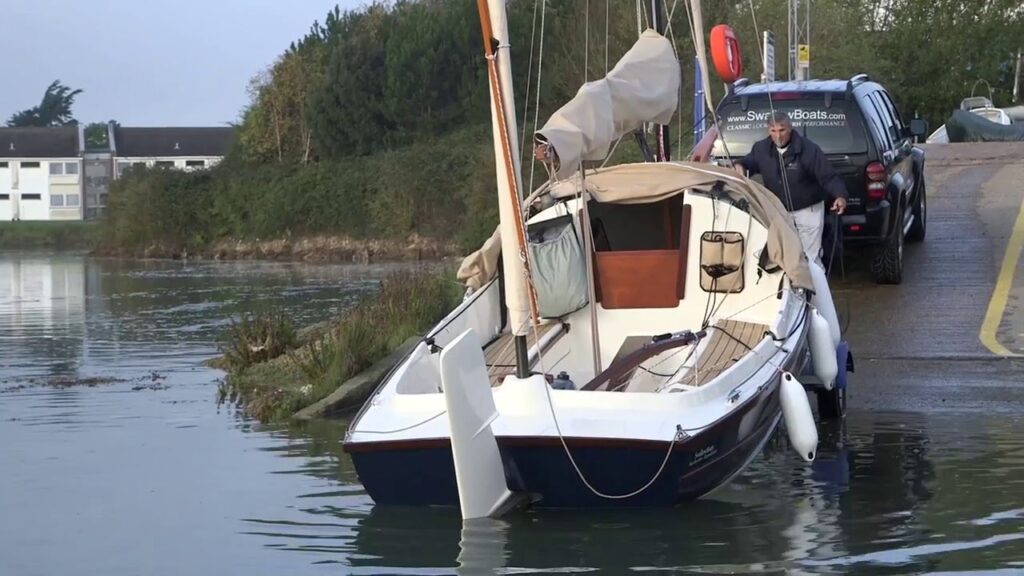
>>Also Read: Most Popular Sailboats
Contessa 26
The Contessa 26 is an all-time-classic and small trailerable sailboat. Even if this vessel is quite small she has proven her seaworthiness and is still preferred as an ideal pocket cruiser. She has a roomy cabin and comfortable cockpit, so there’s no need to worry about below deck space. As for the rigging, it’s quite easy to handle and is rigged as a masthead sloop. Also, her construction comprises of a deep keel and hull-mounted rudder; and that’s why she was also used as a racer. The main downside is her narrow beam which contributes to heeling although she stiffens up quickly and becomes easy to sail. In any case, there are many who admit that she’s one of the most reliable sailboats in the mid-size category.
The Hunter 22 is a great daysailer and features an open-transom cockpit and sloop rig, making her the ideal choice for friends and family outings. Moreover, the considerable amount of below-deck space has twin bunks, a roomy cabin, and a portable toilet. Rigging also includes an asymmetric spinnaker and a mainsheet traveler in case you’re keen on racing. Her construction is made out of laminated fiberglass hull and deck, molded-in nonskid, and a hydraulic lifting centerboard. Last but not least, she’s fast, stable, responsive, and is, therefore, an ideal starter-boat for novices.

Islander 24
The 24-foot Islander is a classic choice in the small trailerable sailboat market. This fiberglass model features a sturdy design and has proven her seaworthiness for coastal and family-day cruising. This model was first built in 1961 but is still available on the used market. She has a masthead sloop rig, simple overall rigging, and is appropriate for single-handing. As for below-deck space, she has a spacious cabin for two with a V-berth, and space for a head. Last but not least, many sailors admit that she’s a lot more capable than many of the later model boats in this size range.
>>Also Read: Best Sailboats Under 30 Feet
Macgregor 25
This trailerable cruising sloop is a safe, easy-handling, and robust sailboat for 2 persons; perfectly suitable for coastal cruising. The boat has a spacious cabin and great safety features like foam flotation as well as the ability to self-right. Its innovative design features a retracting keel, pop-up rudder, and an easy mast-stepping system that enhances its cruising performance. Moreover, it has a large foredeck and cockpit and its lifelines and shrouds are equipped with handholds. You can easily find a Macgregor 25 on the used market with just $9,500.

>>Also Read: Best Small Sailboats To Sail Around The World
Cape Dory 28
The Cape Dory 28 is a popular trailerable sailboat known for its great performance both offshore and inland. Even though it has a small size it offers comfortable living spaces below the deck. In addition, she has proven to be more capable than other larger sailboats. It’s designed with a well-balanced deck arrangement along with a full-length keel with an attached rudder, a low freeboard, and a well-proportioned traditional trunk cabin. These sailboats were originally rigged as sloops with self-tending and club-footed jibs. This sail plan is really great for stiff weather conditions. Lastly, it can be easily hauled-out and transported regardless of its 28ft size. Ideal for salt-water cruising and for tighter coastal waters you can find a used model for $12,900.
>>Also Read: How Much Do Sailboats Weigh?
The Newport 27 is an all-time-classic that was first built in 1971 and is still considered a common choice for small sailboats amongst sailors. Although it has a small size it doesn’t lack interior space. The standing headroom is just over 6ft, there’s a V-berth, a head, and a hanging locker forward of the bulkhead. Also, settees measure 6ft in length and extend to either side of the saloon. Some variations include a fixed dinette with raised seating fore and aft, a starboard quarter berth, and an aft-placed head. You can find them on the used market from $10,000 to $18,000, depending on their condition and any possible upgrades. Even though it’s not a really robust offshore cruiser, the Newport 27 is still a capable trailerable sailboat and if upgraded and equipped accordingly it can definitely offer decent coastal cruising to a singlehander or a couple.
>>Also Read: What Are The Best Beginner Sailboats?
Trailerable sailboats are a great choice for beginner sailors as well as for couple and family outings. Keep in mind that the aforementioned boats are not the only options on today’s market. I recommend these boats because they’re easy to handle, small but roomy, easy to trailer, and have an overall robust design. Generally, a trailer sailor will save you costs for purchasing but also for marina fees. Keep in mind that many sailors choose to sail overseas with a trailerable sailboat, so there are suitable models for a long-passage voyage. Lastly, small sailboats can offer different kinds of sailing adventures; weekend cruising, coastal cruising, island hopping, and sometimes an offshore voyage. I hope that you enjoyed reading this article and that it will help you out in order to pick the right trailerable sailboat for your needs.
Peter is the editor of Better Sailing. He has sailed for countless hours and has maintained his own boats and sailboats for years. After years of trial and error, he decided to start this website to share the knowledge.
Related Posts

The Ultimate Guide to Choosing the Best Fishing Line for Trolling

Lagoon Catamaran Review: Are Lagoon Catamarans Good?

Best Inboard Boat Engine Brands

Are O’Day Sailboats Good? A Closer Look at a Classic Brand
- Buyer's Guide
- Destinations
- Maintenance
- Sailing Info
Hit enter to search or ESC to close.
Yachting Monthly
- Digital edition

25 of the best small sailing boat designs
- Nic Compton
- August 10, 2022
Nic Compton looks at the 25 yachts under 40ft which have had the biggest impact on UK sailing

There’s nothing like a list of best small sailing boat designs to get the blood pumping.
Everyone has their favourites, and everyone has their pet hates.
This is my list of the 25 best small sailing boat designs, honed down from the list of 55 yachts I started with.
I’ve tried to be objective and have included several boats I don’t particularly like but which have undeniably had an impact on sailing in the UK – and yes, it would be quite a different list if I was writing about another country.
If your favourite isn’t on the best small sailing boat designs list, then send an email to [email protected] to argue the case for your best-loved boat.
Ready? Take a deep breath…

Credit: Bob Aylott
Laurent Giles is best known for designing wholesome wooden cruising boats such as the Vertue and Wanderer III , yet his most successful design was the 26ft Centaur he designed for Westerly, of which a remarkable 2,444 were built between 1969 and 1980.
It might not be the prettiest boat on the water, but it sure packs a lot of accommodation.
The Westerly Centaur was one of the first production boats to be tank tested, so it sails surprisingly well too. Jack L Giles knew what he was doing.
Colin Archer

Credit: Nic Compton
Only 32 Colin Archer lifeboats were built during their designer’s lifetime, starting with Colin Archer in 1893 and finishing with Johan Bruusgaard in 1924.
Yet their reputation for safety spawned hundreds of copycat designs, the most famous of which was Sir Robin Knox-Johnston ’s Suhaili , which he sailed around the world singlehanded in 1968-9.
The term Colin Archer has become so generic it is often used to describe any double-ender – so beware!
Contessa 32
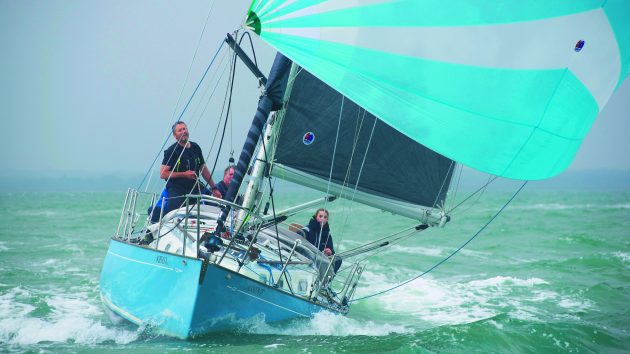
Assent ‘s performance in the 1979 Fastnet Race makes the Contessa 32 a worth entry in the 25 best small sailing boat designs list. Credit: Nic Compton
Designed by David Sadler as a bigger alternative to the popular Contessa 26, the Contessa 32 was built by Jeremy Rogers in Lymington from 1970.
The yacht’s credentials were established when Assent , the Contessa 32 owned by Willy Kerr and skippered by his son Alan, became the only yacht in her class to complete the deadly 1979 Fastnet Race .
When UK production ceased in 1983, more than 700 had been built, and another 20 have been built since 1996.
Cornish Crabber 24

It seemed a daft idea to build a gaff-rigged boat in 1974, just when everyone else had embraced the ‘modern’ Bermudan rig.
Yet the first Cornish Crabber 24, designed by Roger Dongray, tapped into a feeling that would grow and grow and eventually become a movement.
The 24 was followed in 1979 by the even more successful Shrimper 19 – now ubiquitous in almost every harbour in England – and the rest is history.
Drascombe Lugger
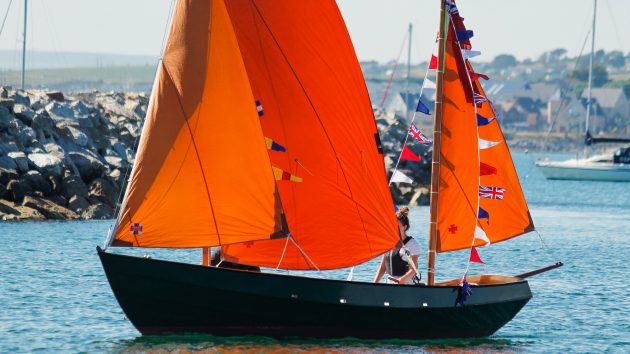
Credit: David Harding
There are faster, lighter and more comfortable boats than a Drascombe Lugger.
And yet, 57 years after John Watkinson designed the first ‘lugger’ (soon changed to gunter rig), more than 2,000 have been built and the design is still going strong.
More than any other boat, the Drascombe Lugger opened up dinghy cruising, exemplified by Ken Duxbury’s Greek voyages in the 1970s and Webb Chiles’s near-circumnavigation on Chidiock Tichbourne I and II .

The 26ft Eventide. Credit: David Harding
It’s been described as the Morris Minor of the boating world – except that the majority of the 1,000 Eventides built were lovingly assembled by their owners, not on a production line.
After you’d tested your skills building the Mirror dinghy, you could progress to building a yacht.
And at 24ft long, the Eventide packed a surprising amount of living space.
It was Maurice Griffiths’ most successful design and helped bring yachting to a wider audience.

You either love ’em or you hate ’em – motorsailers, that is.
The Fisher 30 was brought into production in 1971 and was one of the first out-and-out motorsailers.
With its long keel , heavy displacement and high bulwarks, it was intended to evoke the spirit of North Sea fishing boats.
It might not sail brilliantly but it provided an exceptional level of comfort for its size and it would look after you when things turned nasty.
Significantly, it was also fitted with a large engine.

Credit: Rupert Holmes
It should have been a disaster.
In 1941, when the Scandinavian Sailing Federation couldn’t choose a winner for their competition to design an affordable sailing boat, they gave six designs to naval architect Tord Sundén and asked him to combine the best features from each.
The result was a sweet-lined 25ft sloop which was very seaworthy and fast.
The design has been built in GRP since the 1970s and now numbers more than 4,000, with fleets all over the world.

Credit: Kevin Barber
There’s something disconcerting about a boat with two unstayed masts and no foresails, and certainly the Freedom range has its detractors.
Yet as Garry Hoyt proved, first with the Freedom 40, designed in collaboration with Halsey Herreshoff, and then the Freedom 33 , designed with Jay Paris, the boats are simple to sail (none of those clattering jib sheets every time you tack) and surprisingly fast – at least off the wind .
Other ‘cat ketch’ designs followed but the Freedoms developed their own cult following.
Hillyard 12-tonner

The old joke about Hillyards is that you won’t drown on one but you might starve to death getting there.
And yet this religious boatbuilder from Littlehampton built up to 800 yachts which travelled around the world – you can find them cruising far-flung destinations.
Sizes ranged from 2.5 to 20 tons, though the 9- and 12-ton are best for long cruises.

The innovations on Jester means she is one of the best small sailing boat designs in the last 100 years. Credit: Ewen Southby-Tailyour
Blondie Hasler was one of the great sailing innovators and Jester was his testing ground.
She was enclosed, carvel planked and had an unstayed junk rig.
Steering was via a windvane system Hasler created.
Hasler came second in the first OSTAR , proving small boats can achieve great things.

Moody kicked off the era of comfort-oriented boats with its very first design.
The Moody 33, designed by Angus Primrose, had a wide beam and high topside to produce a voluminous hull .
The centre cockpit allowed for an aft cabin, resulting in a 33-footer with two sleeping cabins – an almost unheard of concept in 1973 –full-beam heads and spacious galley.
What’s more, her performance under sail was more than adequate for cruising.
Finally, here was a yacht that all the family could enjoy.
Continues below…

What makes a boat seaworthy?
What characteristics make a yacht fit for purpose? Duncan Kent explores the meaning of 'seaworthy' and how hull design and…

How boat design is evolving
Will Bruton looks at the latest trends and innovations shaping the boats we sail

How keel type affects performance
James Jermain looks at the main keel types, their typical performance and the pros and cons of each

Boat handling: How to use your yacht’s hull shape to your advantage
Whether you have a long keel or twin keel rudders, there will be pros and cons when it comes to…
Nicholson 32

Credit: Genevieve Leaper
Charles Nicholson was a giant of the wooden boat era but one of his last designs – created with his son Peter – was a pioneering fibreglass boat that would become an enduring classic.
With its long keel and heavy displacement, the Nicholson 32 is in many ways a wooden boat built in fibreglass – and indeed the design was based on Nicholson’s South Coast One Design.
From 1966 to 1977, the ‘Nic 32’ went through 11 variations.

Credit: Hallberg-Rassy
In the beginning there was… the Rasmus 35. This was the first yacht built by the company that would become Hallberg-Rassy and which would eventually build more than 9,000 boats.
The Rasmus 35, designed by Olle Enderlein, was a conservative design, featuring a centre cockpit, long keel and well-appointed accommodation.
Some 760 boats were built between 1967 and 1978.

Credit: Larry & Lin Pardey
Lyle Hess was ahead of his time when he designed Renegade in 1949.
Despite winning the Newport to Ensenada race, the 25ft wooden cutter went largely unnoticed.
Hess had to build bridges for 15 years before Larry Pardey asked him to design the 24ft Seraffyn , closely based on Renegade ’s lines but with a Bermudan rig.
Pardey’s subsequent voyages around the world cemented Hess’s reputation and success of the Renegade design.

Would the Rustler 36 make it on your best small sailing boat list? Credit: Rustler Yachts
Six out of 18 entries for the 2018 Golden Globe Race (GGR) were Rustler 36s, with the top three places all going to Rustler 36 skippers.
It was a fantastic endorsement for a long-keel yacht designed by Holman & Pye 40 years before.
Expect to see more Rustler 36s in the 2022 edition of the GGR!

It was Ted Heath who first brought the S&S 34 to prominence with his boat Morning Cloud .
In 1969 the yacht won the Sydney to Hobart Race, despite being one of the smallest boats in the race.
Other epic S&S 34 voyages include the first ever single-handed double circumnavigation by Jon Sanders in 1981

Credit: Colin Work
The Contessa 32 might seem an impossible boat to improve upon, but that’s what her designer David Sadler attempted to do in 1979 with the launch of the Sadler 32 .
That was followed two years later by the Sadler 29 , a tidy little boat that managed to pack in six berths in a comfortable open-plan interior.
The boat was billed as ‘unsinkable’, with a double-skinned hull separated by closed cell foam buoyancy.
What’s more, it was fast, notching up to 12 knots.

Credit: Dick Durham/Yachting Monthly
Another modern take on the Contessa theme was the Sigma 33, designed by David Thomas in 1979.
A modern underwater body combined with greater beam and higher freeboard produced a faster boat with greater accommodation.
And, like the Contessa, the Sigma 33 earned its stripes at the 1979 Fastnet, when two of the boats survived to tell the tale.
A lively one-design fleet soon developed on the Solent which is still active to this day.

A replica of Joshua Slocum’s Spray . Credit: Alamy Stock Photo
The boat Joshua Slocum used for his first singlehanded circumnavigation of the world wasn’t intended to sail much further than the Chesapeake Bay.
The 37ft Spray was a rotten old oyster sloop which a friend gave him and which he had to spend 13 months fixing up.
Yet this boxy little tub, with its over-optimistic clipper bow, not only took Slocum safely around the world but has spawned dozens of modern copies that have undertaken long ocean passages.

Credit: James Wharram Designs
What are boats for if not for dreaming? And James Wharram had big dreams.
First he sailed across the Atlantic on the 23ft 6in catamaran Tangaroa .
He then built the 40ft Rongo on the beach in Trinidad (with a little help from French legend Bernard Moitessier) and sailed back to the UK.
Then he drew the 34ft Tangaroa (based on Rongo ) for others to follow in his wake and sold 500 plans in 10 years.

Credit: Graham Snook/Yachting Monthly
The Twister was designed in a hurry.
Kim Holman wanted a boat at short notice for the 1963 season and, having had some success with his Stella design (based on the Folkboat), he rushed out a ‘knockabout cruising boat for the summer with some racing for fun’.
The result was a Bermudan sloop that proved nigh on unbeatable on the East Anglian circuit.
It proved to be Holman’s most popular design with more than 200 built.

Credit: Alamy Stock Photo
Laurent Giles’s design No15 was drawn in 1935 for a Guernsey solicitor who wanted ‘a boat that would spin on a sixpence and I could sail single-handed ’.
What the young Jack Giles gave him was a pretty transom-sterned cutter, with a nicely raked stem.
Despite being moderate in every way, the boat proved extremely able and was soon racking up long distances, including Humphrey Barton’s famous transatlantic crossing on Vertue XXXV in 1950.
Wanderer II and III

Credit: Thies Matzen
Eric and Susan Hiscock couldn’t afford a Vertue, so Laurent Giles designed a smaller, 21ft version for them which they named Wanderer II .
They were back a few years later, this time wanting a bigger version: the 30ft Wanderer III .
It was this boat they sailed around the world between 1952-55, writing articles and sailing books along the way.
In doing so, they introduced a whole generation of amateur sailors to the possibilities of long-distance cruising.
Westerly 22

The origins of Westerly Marine were incredibly modest.
Commander Denys Rayner started building plywood dinghies in the 1950s which morphed into a 22ft pocket cruiser called the Westcoaster.
Realising the potential of fibreglass, in 1963 he adapted the design to create the Westerly 22, an affordable cruising boat with bilge keels and a reverse sheer coachroof.
Some 332 boats were built to the design before it was relaunched as the Nomad (267 built).
Enjoyed reading 25 of the best small sailing boat designs?
A subscription to Yachting Monthly magazine costs around 40% less than the cover price .
Print and digital editions are available through Magazines Direct – where you can also find the latest deals .
YM is packed with information to help you get the most from your time on the water.
- Take your seamanship to the next level with tips, advice and skills from our experts
- Impartial in-depth reviews of the latest yachts and equipment
- Cruising guides to help you reach those dream destinations
Follow us on Facebook , Twitter and Instagram.

- Catalina 12.5 Expo
- Catalina 14.2
- Catalina 14.2 Expo
- Catalina 16.5
- Catalina 22 Sport
- Catalina 22 Capri
- Catalina 275 Sport
- Catalina 315
- Catalina 355
- Catalina 385
- Catalina 425
- Catalina 445
MAINSHEET MAGAZINE
- TRUE NORTH YACHTS

A legacy built on precision, innovation and unmistakable American craftsmanship.
Elevate your sailing experience with a touch of true American Luxury.
CHEERS! TO OUR OWNERS, DEALERS & TEAM
A key to our success and longevity is the relationship and communication with our owners, dealers and team. For more than 50 years they have propelled us forward as America’s largest sailboat builder.
We are a Catalina family.
MEET OUR FLEET
We’re not just building sailboats; we’re creating experiences that resonate with the essence of American Luxury. Our fleet is a testament to a legacy built on precision, innovation, and the spirit of adventure, with the unmistakable touch of American craftsmanship.
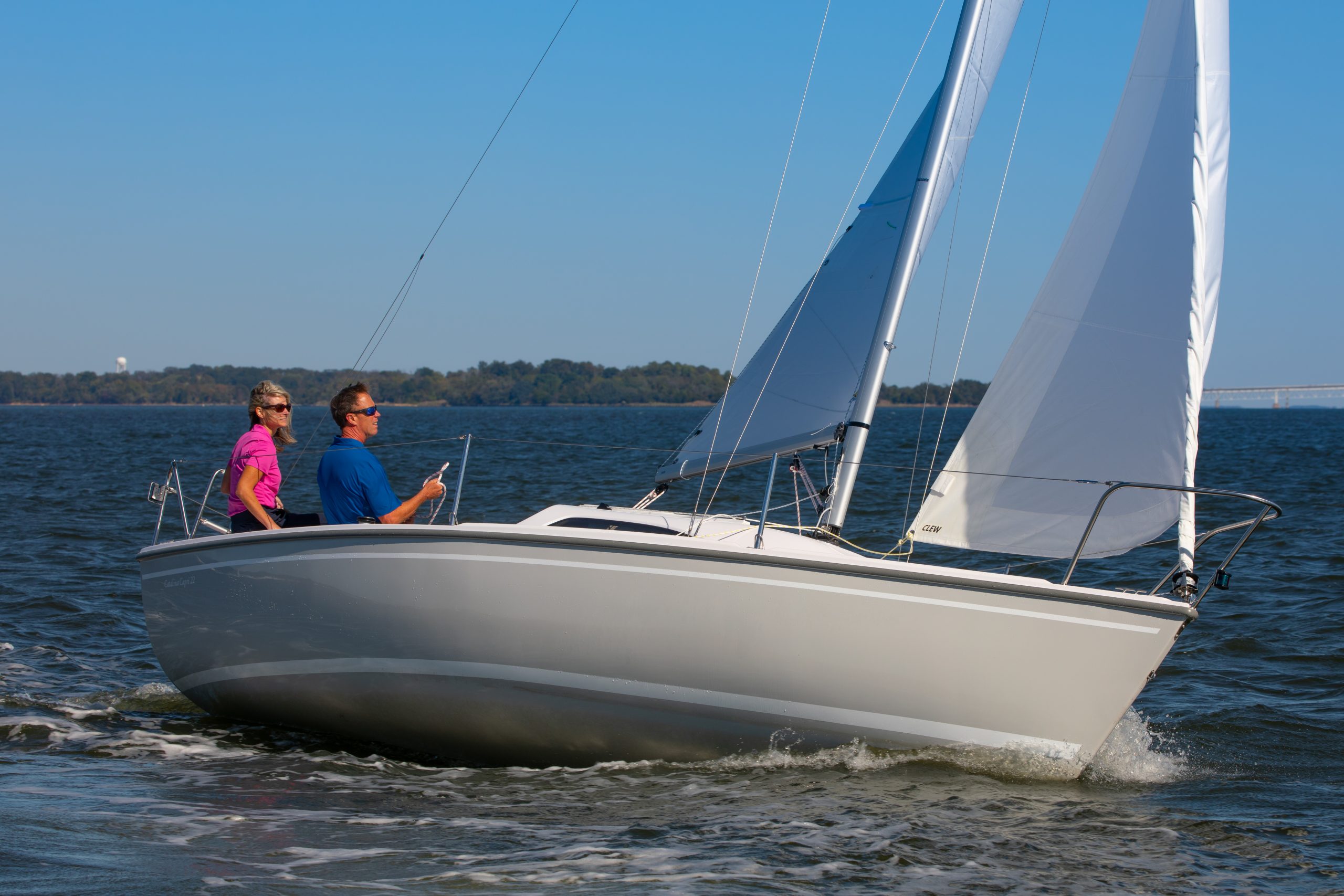
SPORT SERIES
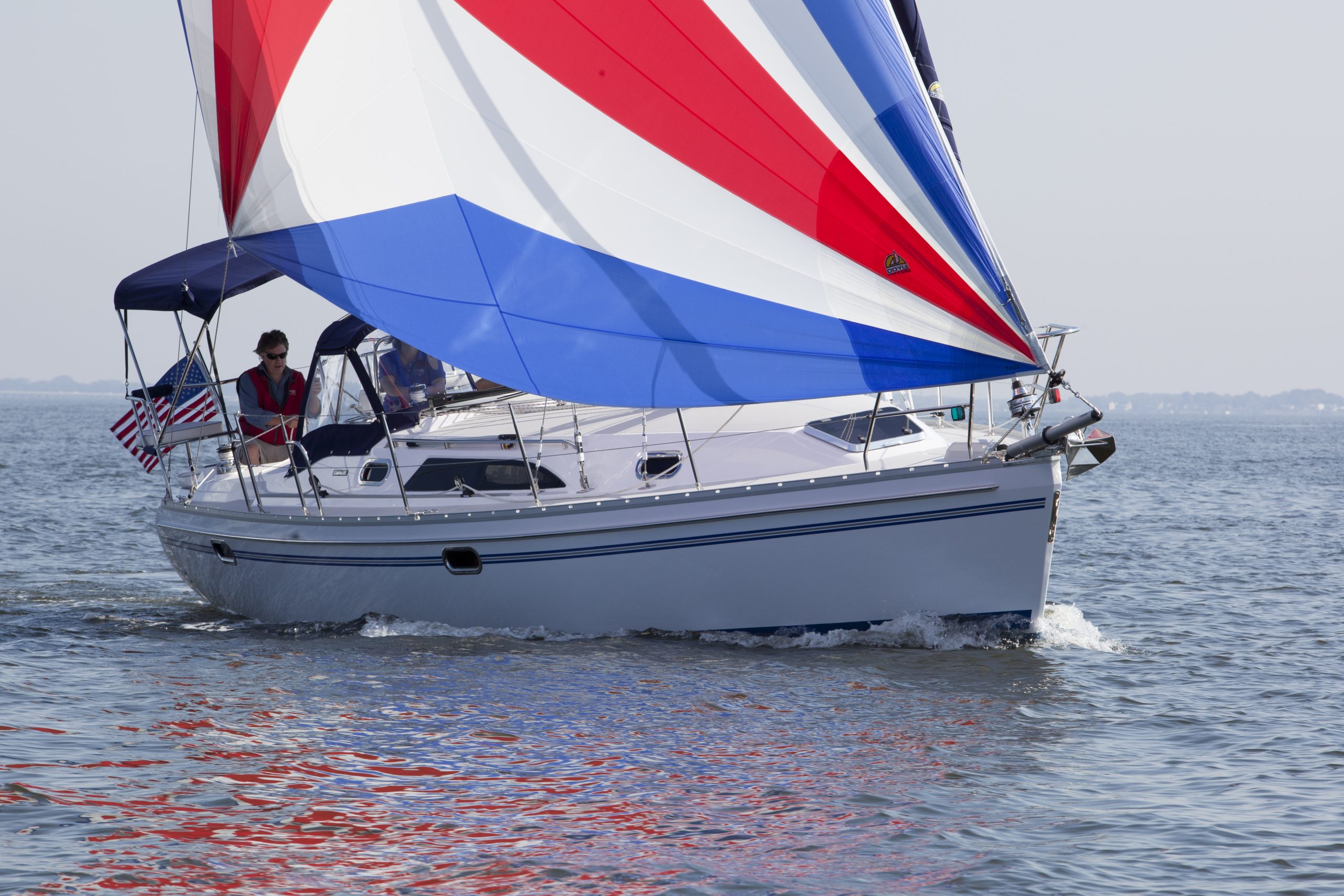
CRUISER SERIES
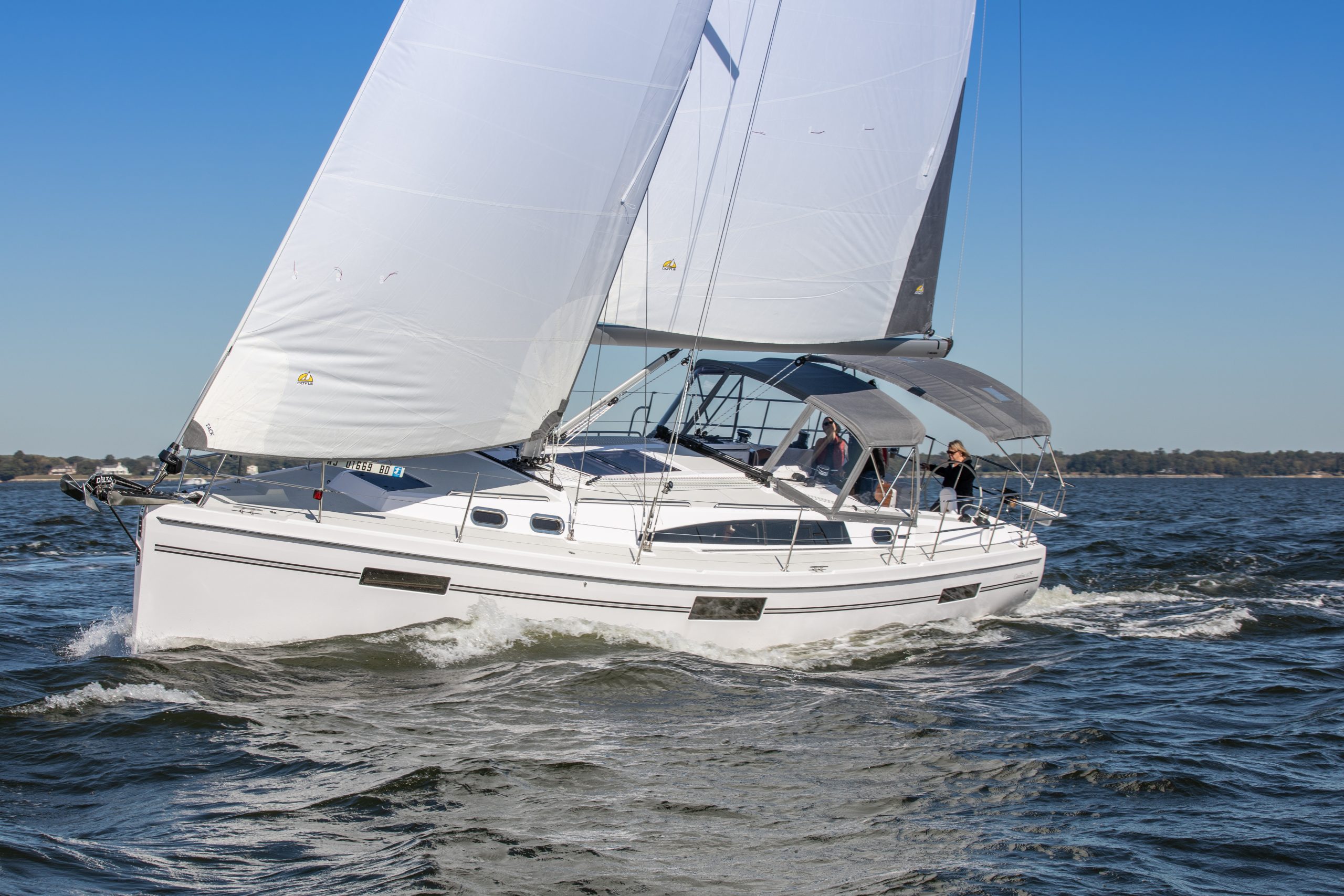
OCEAN SERIES
Find your dealer.
We have a roster of dealers across the country who represent the Catalina fleet and there’s a good chance they’re planing a show, event or open house to showcase their in-stock Catalina models.
CATALINA YACHTS STORE
CATALINA YACHTS OFFICIAL RETAIL PARTNER
Performance hardware, sails, custom apparel, mats, sheets and much more!

The official publication for thousands of Catalina Yachts sailboat owners around the world.
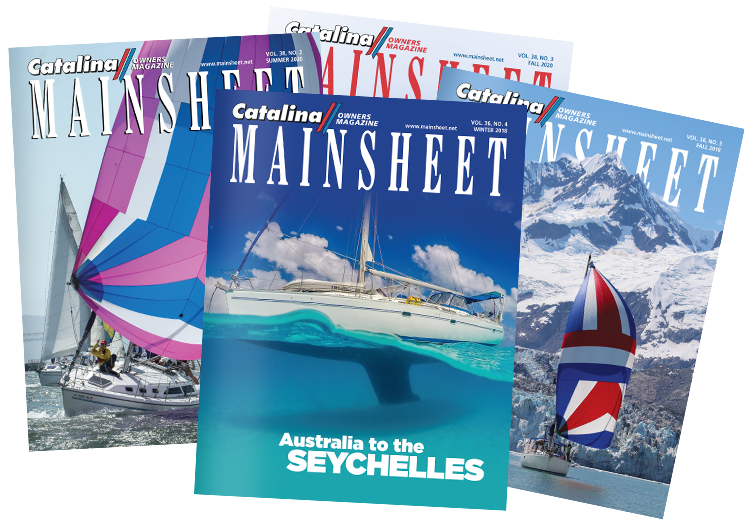
FORGING AHEAD
From the past 50 years, and to the next 50, Catalina is devoted to providing owners and dealers with quality and value that has made Catalina America’s largest sailboat builder.
Frank Butler’s vision and philosophy carries forward with Sharon Day, who worked alongside Frank for 48 years, at the helm of a veteran leadership team.
TRUE NORTH BY CATALINA
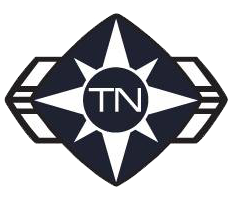
True North initiates Catalina’s entry into the growing market segment of Downeast-style powerboats and promises traditional style with great performance and Catalina value.
PROUDLY OWNED, DESIGNED & BUILT IN AMERICA
Additional resources.
- Brochure Archives
- Associations
PARTS & TECH SUPPORT
727-544-6681
7200 Bryan Dairy Rd
Largo, FL. 33777

[{{{type}}}] {{{reason}}}
{{texts.summary}} {{#options.result.rssIcon}} RSS {{/options.result.rssIcon}}
{{{_source.title}}} {{#_source.showPrice}} {{{_source.displayPrice}}} {{/_source.showPrice}}
{{{_source.displayUrl}}}
{{{_source.displayDate}}}
{{{_source.description}}}
{{#_source.additionalFields}} {{#title}} {{{label}}}: {{{title}}} {{/title}} {{/_source.additionalFields}}

Welcome to American Sail
Builder of small sailboats, catamarans, and daysailers.
Small sailboats are our specialty! We've made fun family sailboats for over 40 years.
American Sail got its start over 40 years ago in 1976 with the purchase of the Aqua Cat catamaran. Over the years we have grown to offer many more sailboats in our line including a larger version of the Aqua Cat and four daysailers that are the Aqua Finn Daysailer, Pennant Daysailer, American 14.6, and American 18 Daysailer.
If you're looking for the best small sailboats you've come to the right place. All of our family daysailers are designed for fun and not hard-core racing. Any of our boats can be rigged by one person in under 20 minutes.
We are factory direct. If you have any questions regarding pricing or parts orders please do not hesitate to give us a call at 800-844-2399 or use our CONTACT FORM .

Best Small Sailboats for Beginners
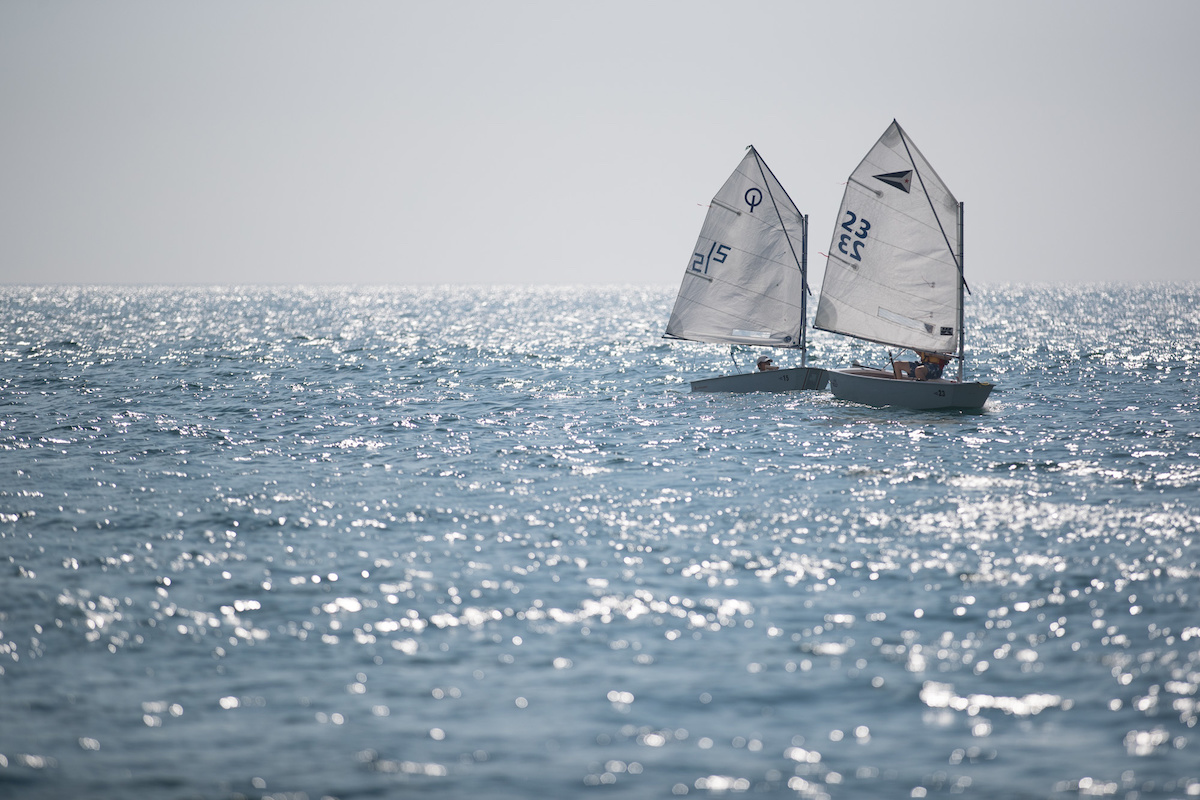
There are a number of classic trainers used by yacht club youth programs as well as techie new designs. Without mentioning specific models and brands, it’s difficult to outline which small boats are best but here are things to look for in good teaching boats.
Some of the best small sailboats for beginners include:
- Boats with tillers steering
- Boats with no winches
- Sailing dinghies
- Small sloops
- Small catamarans
- Rotomolded boats
- Trailerable sailboats
Explore All Sailboat Types
Boats with Tiller Steering
Steering by tiller (rather than a wheel) can make a difference when learning. Tillers are directly connected to the rudder that manages the boat’s direction. Tillers provide quick feedback about the strength and direction of the wind as well as the boat’s turning agility at various speeds.
Boats with No Winches
Boats that require no winches to manage the sheets and halyards are best for youngsters and new sailors. These boats usually don’t experience the same forces on the sails and rigging as larger boats, which can be a handful when the wind starts to blow. Winches are usually replaced with cam or jam cleats, which are easy to use.
Sailing Dinghies
Sailing dinghies are usually rigged with one mast and one sail and offer kids and new sailors simplicity so it’s easy to learn the ropes. Less overwhelming than boats with two sails, dinghies are light and responsive. They also have a shallow draft due to side or centerboards so they can be sailed just about anywhere. In some cases (whether from a wind gust or sudden crew weight shift) sailing dinghies can capsize so students should wear lifejackets and know how to swim. Sailing dinghies are usually sailed by one or two people.
Small Sloops
Small sloops with a mast that carries head and mainsails are the next step so students learn how sails work together. Headsails can be hanked on or attached to a small roller furler. These boats may have some or no winches, which also makes them easier to maintain. These boats can usually be sailed with one to four people.
Some sloops can scale up, providing a more challenging experience for sailors as they develop skills. Certain models can carry spinnakers and larger headsails to teach sail combinations and new sail trim techniques. Others offer the ability to hike out (shift crew weight well outboard to balance the boat against the wind pressure in the sails). This kind of sailing is more advanced.
Small Catamarans
Small catamarans provide extra stability for those who may be nervous about capsizing or aren’t fond of heeling (tipping while sailing). With two hulls providing a wide and stable base, catamarans area ideal for beginners, which may be why they’re often used by resorts as their beach sailing tourist boats. Rigged with one or two sails, small cats are tiller steered and usually have a trampoline that the students sit on and sail.
Rotomolded Boats
Small rotomolded boats are very forgiving due to their durable construction. Unlike fiberglass or wooden boats, rotomolded (a type of plastic construction technique) trainers can bounce off docks or other boats and cause or sustain little damage. Dinghies and catamarans can both be made via rotomolding.
Trailerable Sailboats
Finally, small sailboats that can be trailered to different locations add variety and that makes learning fun. Students can learn to sail in different wind and water conditions and enjoy their boats differently on vacation or with new friends.
Learning to sail involves all the senses and requires a level head and lots of practice and although it can be learned in many ways, the best way is to start with a boat that’s small, simple, safe and durable.
Read Next: Small Boats: What Are My Options?
You Might Also Like:
- Sailing Basics: 10 Nautical & Sailing Terms to Know
- Learning the Basics of Sailing
- Why Sailing?
- Find the Right Boat for Your Lifestyle
- Explore Sailboat Brands
Join Our Newsletter!
Get community news, buying bargains, and how-to guides at your fingertips.
- Skip to main content
- Skip to secondary menu
- Skip to primary sidebar
- Skip to footer

Crow Survival
Outdoor Discovery
12 Perfect Small Sailboats
Jonathan Holmes 5.0 5.0 out of 5 stars (based on 40 reviews)

Thank you for reading our post, please rate this article at the end.
Last Updated on August 23, 2024 by Jonathan Holmes
Easy to rig, simple to toe, compact, manageable, maintainable, and affordable, all the perfect small sailboats have one thing in common: they always provide an adventurous tour in the sea.
So, either you are looking for something light on the pocket or just an adventure enthusiast wanting some safe daytime ride, the perfect small sailboats are the sole good means to fulfill your call.
After all, honestly, everybody does not need large 30 ft sailboats for cruising. However, large boats offer a lot of features like bunks, refrigeration , entertainment, and electronics. But are these features necessary for just boating? Well, I guess not.
When cruising, you only require a boat, a sail, a rudder, and a mast. Thus, nothing can offer you the ultimate adventures of coastal cruising better than small sailboats. Small sailboats not only provide you a breezy feel in the water but also offer you the opportunity to sense every change in trim instantaneously.
Table of Contents
12Best Small Sailboats
The market has a wide variety of small sailboats that measure less than 20 ft in size. Moreover, they are quite hit products as they offer great fun in the water.
With this guide, you may equip yourself with all the necessary information about the top 12 small sailboats. My top picks are just perfect as they’re simple to sail, easy to rig, and time-tested. Thus, if you were looking for a listing of the perfect small sailboats, you’re certainly on the right post.
Keep scrolling to read on for the best small sailboat picks.
Hunter 22 is a clever boat for a very fair price. It retains the hull of its predecessor- Hunter 216, featuring an open transom and a large cockpit. However, it is made of fiberglass with balsa-cored topsides and a solid bottom section.
Furthermore, the deck is a bit changed, having a 40 sq. ft. larger rig. Similar to Hunter 216, it, too, features a hydraulic ballast keel. The Hunter 22 is primarily designed to offer a thin line between “go-fast mini-sport boat” and “fun family daysailer and weekender”.
You can select between either half of them according to your requirements.
The cruising package features a simple electrical system, a portable toilet, and a V-berth in the small cuddy cabin. Whereas, the performance package offers an asymmetric spinnaker, a retractable bowsprit, mid-cockpit traveler, hiking grips, and straps in the cockpit.
- Hunter 22 is a daysailer.
- It offers a portable toilet.
- The manufacturers offer an optional electrical system with Hunter 22.
- The boat features a large cockpit and open transom.
- It offers a cuddy cabin and twin bunks.
- It features a hydraulic lifting centerboard and laminated fiberglass deck and hull.
- Comfortable
- Fair priced
- Easy for trailing
- Faster than most of the other boats available in the market
- Versatile and family-friendly
- Might need some replacement parts
Catalina 22 Sport
The retractable keel and basic amenities allow the Catalina 22 Sport to be trailered easily. Basically, the Catalina 22 Sport is an updated design of its predecessor Catalina 22.
The large cockpit is enough to seat a crowd. It offers a fractional rig with a mainsail and a roller-furling jib, a cabin that provides bedding for four with a forward hatch for ventilation, and a retractable lead keel.
In essence, the Catalina 22 Sport is more of a family-friendly racer. Also, it offers an alternative to choosing an older boat.
Besides, the Catalina 22 Sport offers the value and quality Catalina has come to expect since 1970. It is simple to rig and an excellent sail to step up from dinghy sailing to budget cruising.
- Catalina 22 Sport is a daysailer.
- It offers an adjustable outboard motor bracket.
- The boat features a comfortable cockpit with contoured coamings.
- It has an anodized aluminum mast and boom.
- It offers low stretch halyards and internal halyards.
- Catalina 22 offers a complete standing and running rigging.
- Many interior features, including Fiberglass Hull Liner, molded Headliner, and Low Glare Texture.
- Easy for trailing with its swing keel
- Family-friendly
- Simple to rig without a complicated setup
- Fast in speed
- Stability and reliability
- Features spacious cabin
- If you choose some old models, you will need some replacement parts.
- Not much trendy considering the interior and upholstery
Hobie Cat 16
The legendary Hobie Cat 16 has revolutionized boating . Firstly, it belongs to a proud watersports lineage, which within a few years of the foundation was loved by thousands.
Secondly, The Hobie Cat 16 is either used as a daysailer or a racer. The double banana-shaped hulls easily cut through the water, and the boat gets going fast even in light winds, as the aluminum alloy frame and two sails catch wind considerably.
Thirdly, there would certainly be no complete roundup of fun, trailerable, and small sailboats without any mention of the venerable Hobie Cat 16. The large trampoline provides a spacious platform to move about. Moreover, it offers many optional features, including a beach dolly, trailer, douse kit, a spinnaker, and a main and a jib.
In essence, it is a classic boat; enthusiasts and collectors covet it alike. Undoubtedly, it has the pedigree to prove that it is the red Ferrari in the world of cruising.
- The mast is 26 ft 6 inches tall and weighs about 320 pounds.
- The boat is 16 ft 7 inches in length and 7 ft 11 inches in width.
- Two color options are available.
- The dual-trapeze rig offers you harness its sheer power.
- The asymmetrical fiberglass hulls offer lift
- Low maintenance sailboat
- Reasonably priced
- Perfect for a Small Crew
- Easy to trailer
- Simple to rig
- Sailing may be hard when you’re alone.
Norseboat 21.5
In essence, the Norseboat 21.5 offers everything an expensive trailer-sailer does. It features a sensible centerboard arrangement, contemporary, good fit and finish, high-quality construction, and sea-kindly underbody.
The value of Norseboat 21.5 lies in its charm. You will easily fall under its spell if you are into the idea of a solid and easy-to-sail boat . The price tag looks much higher for a small 21 ft boat. However, the hype of Norseboat 21.5 tells you that it’s worth it.
Moreover, the NorseBoat 21.5 offers several configurations: one with a small cockpit and cabin that has a double berth for two adults and an optional berth for children, and another with an open cockpit and smaller doghouse.
Each of them comes with a ballasted stub keel and centerboard and carries the brand’s exclusive carbon fiber gaff-rigged mast. Also, the lightweight design of the Norseboat 21.5 offers easy rowing and a simple trailer.
- Norseboat 21.5 offers a lightweight design.
- It offers two different configuration options.
- Norseboat 21.5 has rowing stations.
- It features an electric outboard.
- The hull and deck are of fiberglass with a wood core.
- Comfortable and versatile
- Expensive compared to the other sailboats on the list
Barney Lehman and W.D. Schock designed the Lido 14. It is an American sailing dinghy that was built in 1958 for the very first time.
In essence, the Lido 14 is a classic sailboat that proves to be a perfect pick to suit small boats, especially for the owners who are still learning the ropes of boating.
The Lido 14 is just perfect for shorthanded racing, single-handed sailing, and solo sailing. It offers seating arrangements for about six people at most.
In the first year of its launch, two hundred Lido 14 boats were ordered. And, around 6300 Lido 14s had been built for 40 years. Today, a new Lido 14 boat is not available in the market; however, you will not regret ever getting a functional used boat.
Thus, the Lido 14 makes your investment worth it and serves you well throughout the journey.
- It offers a retractable centerboard raised with stainless steel straps.
- The hull features a near-vertical transom, a spooned plumb stem, and a transom-hung rudder controlled by a tiller.
- It has a fractional sloop rig with a loose-footed mainsail and anodized aluminum spars.
- Non-intimidating
- Has the car top capability
- Easy in handling
- New models not available
RS Sailing is primarily known for its line of racing dinghies. It built the 16-ft, 4-in sized Venture, which is such a perfect training and cruising dinghy.
The Venture offers a large, self-draining cockpit that can accommodate a group of friends or a family. Whether you are just messing about with your family or friends, club sailing , or just up for casual racing, RS Venture delivers the best with all its features. It is among the most versatile and nimble dinghies for sailing the masses.
In addition, the RS Venture can carry up to eight people in its self-draining cockpit. The excellent performance makes it adventurous; the multiple equipment options allow several boat configurations.
Moreover, the RS Venture is the winner of multiple awards. The excellent stability makes the boat ideal on coastal water, offering an advantage to those learning the sport.
More importantly, The RS Venture has the potential to carry more people in it than its dinghy rivals.
- The RS Venture offers a spacious platform.
- It features a rear back storage.
- The boat also offers reverse transmission.
- It has an open cockpit with high buoyancy.
- The exterior is composed of plastic and dual carbide.
- Can be car toped
- Versatile and stable
- Simple to handle
- Good looking
- A bit expensive
Super Snark
The Super Snark is a simple, lightweight, lateen-rigged daysailer, marketed as the “Super Sea Snark.” It is fun sailing, easy to learn, unsinkable, and simple to set up, and transport. Most of the people who get it find it satisfying to their sailing requirements.
Moreover, Super Snark is highly portable and storable. It can easily load onto your vehicle due to its construction and light-weight. In addition, the roof racks with slide-out loading bars make moving much easier.
Termed as unsinkable, the Super Snark is built with EPS foam, with the external hull and deck, which is vacuum-formed to the deep with ABS. polymers. The Super Snark weighs approximately 50 lbs having a capacity load of 310 lbs. It can carry two people at once.
- It has the capacity for two people.
- The internal hull leaves no void as it is filled with EPS foam, making the boat unsinkable.
- Mast, spar, and boom are of aluminum.
- It is made of recycled plastic.
- It weighs approximately 50 lbs
- Lightweight
- Car top-able
- Recyclable construction material
- Easy to learn
- Simple to setup
- Not family-friendly
The Laser is one of the most popular single-handed racing sailboats available in the market. With its simple rigging and simple design, Laser started single-handed racing 50 years ago when it came out. Interestingly, with over two lacs made, it is the most popular race boat in the world.
Everyone enjoys the Laser, from club racers to Olympians. It is a simple vessel to own and rig, which rewards practice and good sailing techniques. The Laser is built with updated foils and sail controls.
Moreover, a three rigs system allows the sailors to enjoy boating. It offers a seating capacity for two people. This boat is a fiberglass lightweight model easy for capsize and recovery.
- It has the capacity for two people seating.
- Includes the upgraded Vang, Cunningham, and Outhaul controls
- The boat features heavy fiberglass hull construction with aluminum spars.
- It has a small rudder with a lower boom.
- Worldwide popular and recognized racer
- Car top capability
- Stable and easy to handle
- A bit hard to sail
If you are looking for a good looking sailboat with excellent performance, the Paine 14 is here for you. It features a contemporary fin keel and spade rudder, which makes it more agile and faster.
In essence, Paine 14 is an old-time appeal with its varnished gunnels and transoms. However, it offers all the modern features every updated boat has. You can rig this boat with a gaff or a Marconi rig and can trailer it behind a vehicle.
In fact, Paine 14 can sail under mainsail alone due to the large flotation compartments fore and aft. The rig is simple, with an unstayed carbon-fiber mast and a mainsail bent onto its spars.
Overall, the Paine 14 feels like a favorite classic daysailer when you sit in it. The bronze hardware, the slatted-wood cockpit sole, and the varnished trim; all of these are elegantly designed. The cockpit ergonomics are seamless, and the sail controls fall perfectly to hand.
- It features a modern fin keel and spade rudder.
- The boat is built in seamless epoxy cold-molded wood construction.
- It has parallelly fitted fiberglass battens to the luff, which extend from the leech to the foot of the sail.
- Easy for trailing with its fin keel
- Good prevention of slippage
- Features spacious platform
- Not much trendy in looks
FAR EAST 18
The FarEast 18 is a low maintenance 19-ft vessel that offers high speed cruising in the sea.
Equipped with an open deck, the Far East 18 offers excellent performance. It offers great safety and stability due to its design. The hull has a beautiful shape that can be easily handled.
The lifting keel and the removable rig makes it easy to transport by a trailer. It takes a square-top fixed mainsail and an asymmetrical spinnaker, which is a driving force for buoy racing. The Far East 18 can compete with six crew but also offers bedding for three people when you are staying out overnight.
Moreover, this vessel features an updated bulb keel with carbon structure, vacuum-infused foils, and fiberglass hull. Best of all, a single person can easily rig and launch FarEast 18. Moreover, you can trailer this boat easily with a displacement below 1500 pounds.
All in all, Far East 18 is an excellent little sailboat available in the market.
- Small cabin instead of a reduced deck
- It features an updated bulb keel.
- The boat features a spacious cockpit.
- It has a lightweight structure.
- It is constructed with a vacuum infused polyester sandwich.
- Not too brutal on the pocket
- Comfortable and low maintenance
- Modest Price
- Does not perform well in strong wind
The Sage 17 was designed in 2009 by Jerry Montgomery. It is a small, stable, go-anywhere vessel, featuring a transom with a balsa core, a carbon fiber deck, and a cabin roof.
The Sage 17 is a 1300 pound vessel. It comes with a loose-footed main and a working jib that sheets inside the lifelines. There is a kick-up rudder, a 120-lb centerboard, and a 400-pound lead keel that will not strand while cruising through shallow water.
In addition, this boat is simple enough for beginners and sophisticated enough for experienced sailors. It is manufactured to handle your adventures with safety. It comes with a non-skid covering on the horizontal surfaces, a bow pulpit, transom-mounted boarding ladder, and a self-draining cockpit.
Moreover, this model is hand-built with vinyl ester resin, fiberglass, and carbon fiber in a lapstrake style to offer you enhanced strength. The cabin and deck are made of a balsa core and carbon fiber.
The Sage 17 sails fast in light air and provides unruffled travel as the wind blows more strongly. You will definitely enjoy hindrance free comfort in the airy open cabin. And, you can get customized cabin cushions that are available in different colors.
- Jib downhaul lead for the cockpit
- Cabin-top mounted winches and jib tracks
- Internal halyards
- Single reef main and working jib, with running rigging
- Complete mast and stainless-steel standing rigging
- Fiberglass and vinyl ester lapstrake hull with a carbon fiber
- Carbon fiber and vinyl ester deck with a balsa core
- A variety of options available to choose from
- Simple enough for beginners
- Safe and durable
- Quite reasonably priced, considering all the features
- Might require some replacement gears
Montgomery 17
The Montgomery 17 was designed for Montgomery Boats by Jerry Montgomery in conjunction with Lyle C. Hess. It was manufactured with centerboard and keel models.
The Montgomery 17 offers more stability than most of its rivals. And, when it comes to comfortability, the Montgomery 17 again stands above the rest.
This boat has the capability of going about moderate offshore passages. You can easily trailer it as it is small enough in size.
Moreover, it is designed with a masthead and toe rail that fits most of the foresails. It has a proper amount of storage area, a DC power, an optional shore, and seating arrangements for two people offering a headroom, a pair of bunks, and a portable toilet.
Overall, the Montgomery 17 is among the giant-killers of the market when it comes to performance. Though small in size, it makes its way past its larger rivals and excels in the extremes.
That is not just it; using a four-part gear, you can easily uplift the deck-stepped mast.
- The hull type is swing keel.
- A flush deck version is also available.
- Some versions feature a fixed keel.
- There are three types of keel configurations available; retractable keel, shallow draft fixed keel, and a shallow draft fixed keel in conjunction with a centerboard.
- Comfortability
- Quite faster than its rivals
- Outstanding racing record
- Favorable handicap
- Not suitable for deep sea
The Wrap Up
Hitting the water with the right sailboat can be an overwhelming task for many. To ease this process, the list above has narrowed down the 12 perfect small sailboats.
While there are infinite sailboats available in the market, the sailboats, as mentioned above, will serve you right and make you enjoy the ride.
However, in my opinion, the best of all is none other than the Catalina 22 Sport as it is the most moderate pick of all. You don’t have to compromise on either the quality or affordability.
In my opinion, you must not spend too little or much for too low or too high quality. A moderate model will serve as the perfect pick for you. Thus, Catalina 22 Sport being moderately robust and not-so-expensive wins my heart.
Related Posts

- Affiliate Disclosure
Our Love for this stuff, unfortunately, does not pay the bills. Our audience supports us. We may earn an affiliate commission when you purchase through links on our site. This does not mean your purchase price will be higher. Sometimes, it could be lower due to our relationship and volume with the merchant. So shop with confidence. You are getting a good deal!

Terms and Conditions - Privacy Policy

RS Sailing was born from a passion to use the latest design and technology to create inspiring boats. Evolving from our heritage in flat-out racing classes, the RS Sailing range has grown to include boats for beginners, families, clubs and schools, developed using that same desire to move the game forward.
We’re proud that RS Sailing designs have built some of the most vibrant class communities, been chosen by leading organisations globally and that from our humble beginnings we’ve become the world’s largest small-sailboat brand. We hope you will love an RS as much as we do!
SELECT YOUR SAILING PASSION

Classes with fantastic event schedules, vibrant communities and action packed lifestyles
User friendly boats to build confidence and promote rapid progression to sparkling performance
From starter boats to inspirational and enjoyable international racing classes
Get the family on board in an RS designed to make sailing attainable and fun

Boats for the sailing adventures you would love
PARA SAILING
Modern, exciting boats with specialist equipment that bring great sailing to everyone
Beautifully refined racing and training keelboats
Durability, convenience and fun are the hallmarks of the RS CATs
#sailitliveitloveit
Culture, community and trust.
The idea behind RS was born when a small group of sailors sat on a Cornish sea-wall and discussed the opportunity to move the game forward. It was driven forward by our passion use the latest in design and technology to make higher performance more viable for most of us – to inspire more sailors.
We just hoped that if we developed boats that we’d love to sail, then people like us would love them too. And that if we built exciting events and made a load of RS sailing friends then the other RS sailors would make new friends too. We honestly didn’t foresee what would happen.
SUSTAINABILITY
Pin it on pinterest.
The Top Sailboat Manufacturers (According to Sailors)
Whether you are buying or chartering a boat, or whether you simply want to stay informed, you might be asking the question: who are the top sailboat manufacturers? As is the case with most 'who's the best' questions, the answer isn't simple. So this article takes a stroll among the crowds and asks - “who's your favorite?” .
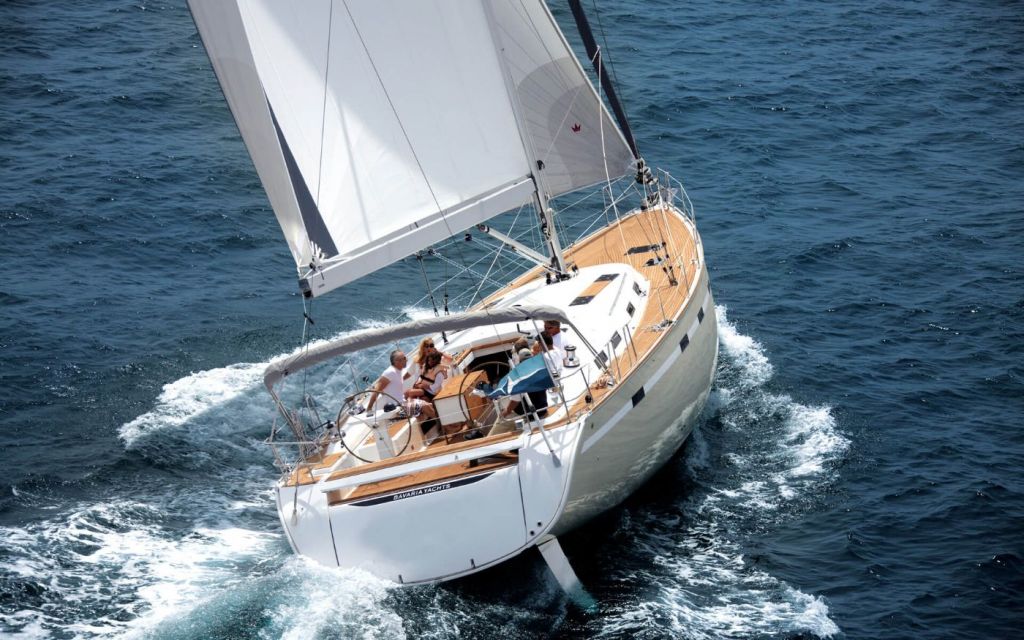
What are the top sailboat manufacturers?
Groupe beneteau.
This is the ultimate all-star list. Now let’s see why.
First of all - I want to make this lineup relatively short. There are tens of names that bounce around when you ask about favorite manufacturers, and if I had made this a long list, in the end, it wouldn’t represent the famous all-stars that really stand out in the eyes of the people. If you want a longer, less detailed list, check out our article about 50 popular sailboat brands . This time though, we are looking only at the manufacturer champions of the ‘popular choice’ contest.
“This is a loaded question!”, the internet forums yell, “there are thousands of options!”, they cry, enraged, “it’s not about the boat, but about the crew!” they scream. But we don’t give up and continue, determined to find out who you all like the most.
Cover Image : Bavaria Cruiser 55 - Copyright BavariaYachtbau under CC BY-SA 4.0
I know, I know, I hear you. Let’s start with the cons of these boats to quench the thirst of the bloodthirsty critics. Yes, Wallys are very costly, they go all the way up to tens of millions of dollars and so won’t be more than a bedroom poster for most of the readers.
That’s about it when it comes to the negatives, though. The reason they made it on this list despite their price tag is that they are pioneers in many aspects. Visually they are beyond gorgeous, and their price allows for exquisite build quality. The cost of these hi-end racer/cruisers means they aren’t particularly user friendly since most users won’t be able to use them, but just as Rolls Royce belongs on the list of the best cars, Wally belongs on the list of the best boats. They are the brainchild of Luca Bassani, founder and chief of the brand, a stylish Italian man who knows what’s right.
And it is this poster worthiness that gained them popularity among the crowds. A video of a simple Atlantic crossing on a 100 foot Wally has millions of views not necessarily because that particular journey would be exciting, in fact, it is quite an uneventful one, but because it is on a boat that makes the design junkies salivate. The Wally designs alone were the reason these boats made it into Hollywood feature films and series, and if you look at one, you’ll understand why. This is what happens when extravaganza meets good taste and has all the money in the world to realize the idea.
What do they make in terms of sailboats? Superyachts around 100 ft long, each focused on sporty cruising, design, and comfort. They only make custom sailboats, no factory models here. Buying a used one is a safe situation, they hold up even after a long time both in terms of quality, performance as well as design. During their existence, Wally only made a handful of boats, so if you ever stumble upon one, take a selfie. It is like meeting a celebrity.
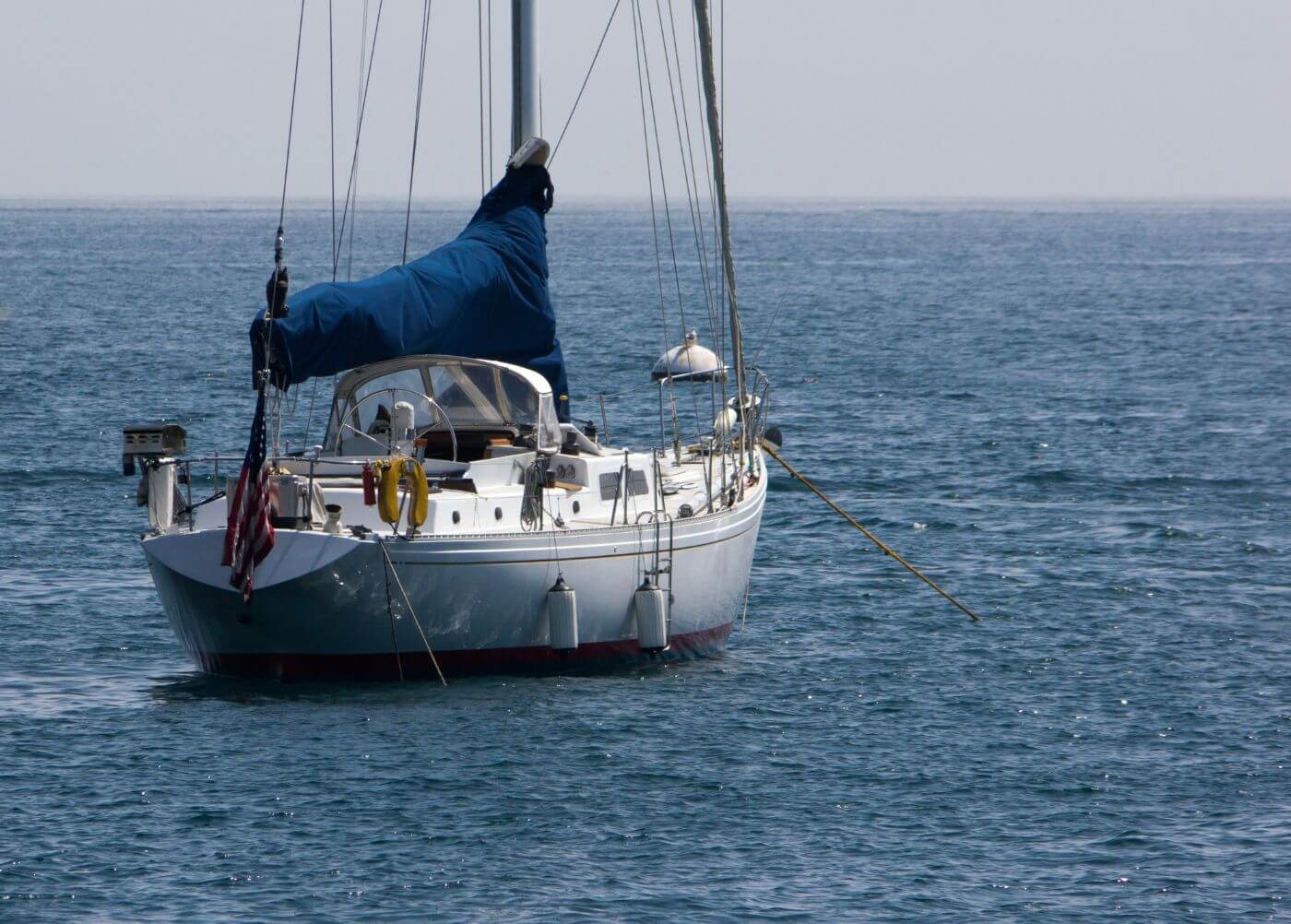
To level the scales, let’s now jump at the opposite side of the spectrum and have a look at Catalina, the people pleaser. If Wally was the Rolls Royce of the boating world, Catalina is the Ford, making, as they say, “honest, sturdy boats that hold up to real-world conditions, perform well and cost less to maintain”. The mission of this company then seems to be to make boats as practical as possible for the common folk. That means: a practical interior layout, practical handling, and last but definitely not least, a practical price.
And this strategy has worked out well - according to experiences of hundreds of thousands of sailors, Catalinas stand up to their reputation of a boat that’s got your back. It is one of the largest boat producers in the world, with over sixty thousand of its boats sailing the world. Boat manufacturers oftentimes go through quite a lot of rough patches, that turn into bankruptcy for many, it isn’t an easy business to be in, but Catalina has been on a roll for decades. And this success has come with its perks - the business stability allowed for some impressive manufacturing facilities, which helps mass production, which in turn helps drive the price down. So with Catalina, you’ll likely be getting more bang for your buck than from their competition.
They make boats ranging from tiny daysailers all the way to 50-foot seaworthy vessels. What made them the most famous though are their mid-sized cruisers - the staple of the classical American sailing fan. Whether you like it or not, slow and steady is the name of the game when it comes to mainstream, and that is precisely what Catalina understands so well. They don’t take large risks. Their models are long-running with slight tweaks and facelifts, concepts that don’t surprise or insult, but offer stability. This conservativeness has been what some sailors hold against Catalinas, which is easy to understand when looking at many other brands that offer more in terms of fanciness, but this is the Catalina way, and it has worked out splendidly for them.
The long years of experience make for a great manufacturer that makes boats which won’t be the fastest, won’t be the prettiest or the boldest in terms of design or technological innovation, but they will do precisely what they are made to do - their job.
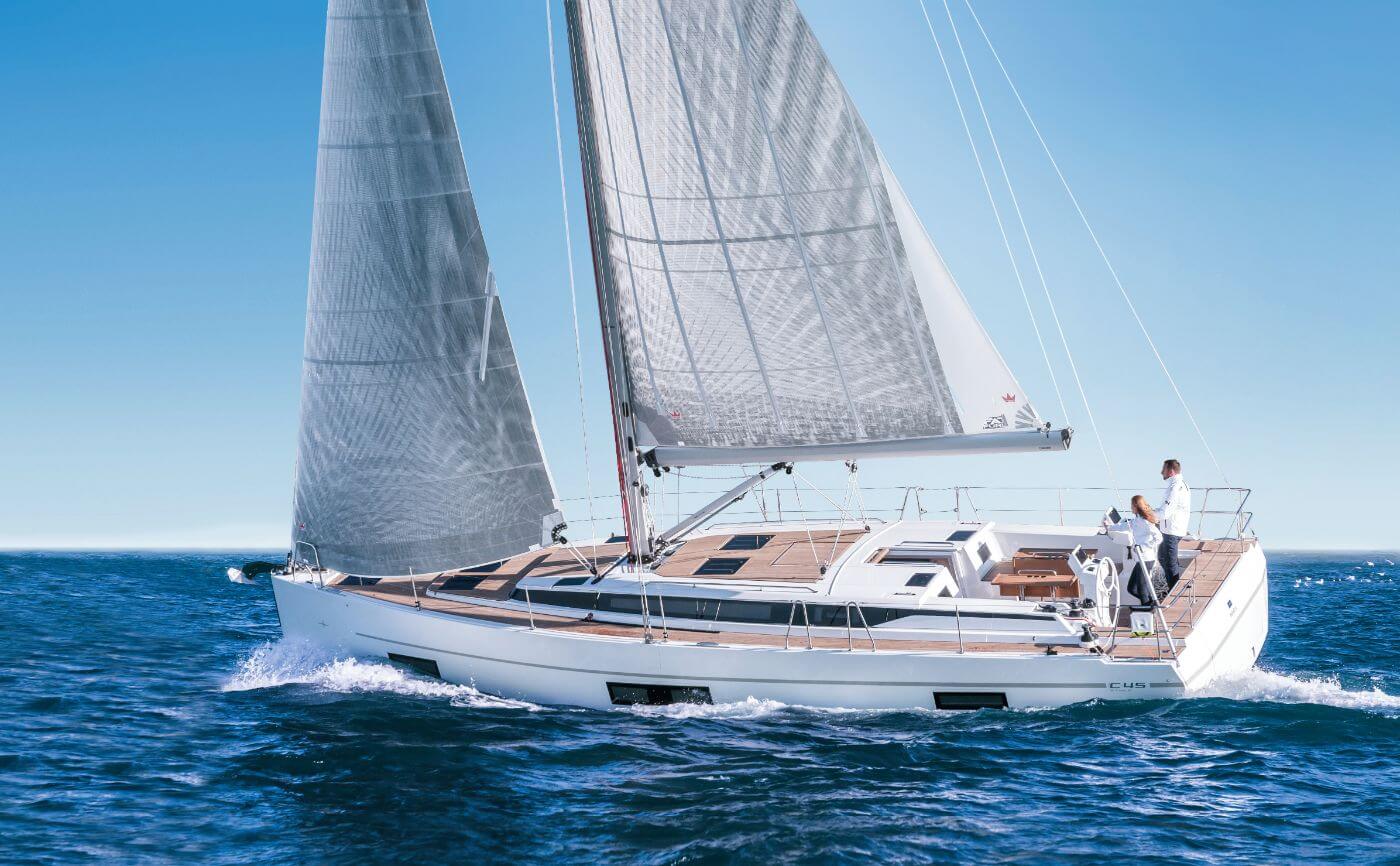
Bavaria is to Europe what Catalina is to the United States. Affordable, practical, nothing special, but does what it’s supposed to. It is the main diet of many Mediterranean sailors. To stay with the cars equivalent, just because I like it so much, if Catalinas were the Ford, Bavarias would be the Volkswagen. They are generally cheaper than Catalinas but don’t see that as an indicator, sailors can’t seem to find one or the other significantly worse or better in build quality. There are of course a few voices rooting for one or the other, but that can be assigned to fandom rather than to actual benefits. The price difference is there partly due to a different manufacturing process, the Bavaria factories are more efficient (they are German after all), and the production is more streamlined, allowing cutting costs without cutting corners.
Reliability, ease of use, and affordability are aspects that lead the design decisions here - which is what makes them so prevalent in charter companies. Even a nonexperienced sailor can get on a Bavaria and operate it with relative ease. But as I’ve been told by the boss of an unnamed charter company, after five or so years, you will start to feel the lower price tag as their reliability starts to go down unless money is put into repairs. With an older Bavaria, you will feel its age more than with other manufacturers. As one owner puts it, they tend to get “quite exhausted”.
So in case you belong among the Bavaria fans and have your eye on a used one, keep the above sentences in mind and when shopping, make sure you understand the ‘health’ of the boat in question. Moreover, be aware of the difference between a boat that was used by a handful of sailors over the years versus one that was chartered to more people than you could count. In other words, you wouldn’t want to buy a few-year-old rental car because who knows what the poor thing had to suffer, - especially since you can bet that many of the clients weren’t particularly good sailors due to generous sailing license policies in Croatia, which allows virtually anybody to ‘become a sailor’ within hours for a friendly fee.
What can you expect when you get on one? Good things - the manufacturers know what their products are used for, and that is why Bavarias are designed as easy comfortable cruisers. Everything you need to have within reach will be within reach, to the point of you having something to hold on almost all the time wherever you go through the boat - Bavaria knows well that many of its users won’t have their ‘sea legs’ and act accordingly. Even smaller models have generous amounts of space because it is the smaller models that are charter kings - Bavaria gives a lot of attention to them. The layouts will be comfy, so Bavarias make good boats for longer voyages - pair that with reliability and price and you will understand why the vox populi speaks so fondly of them.
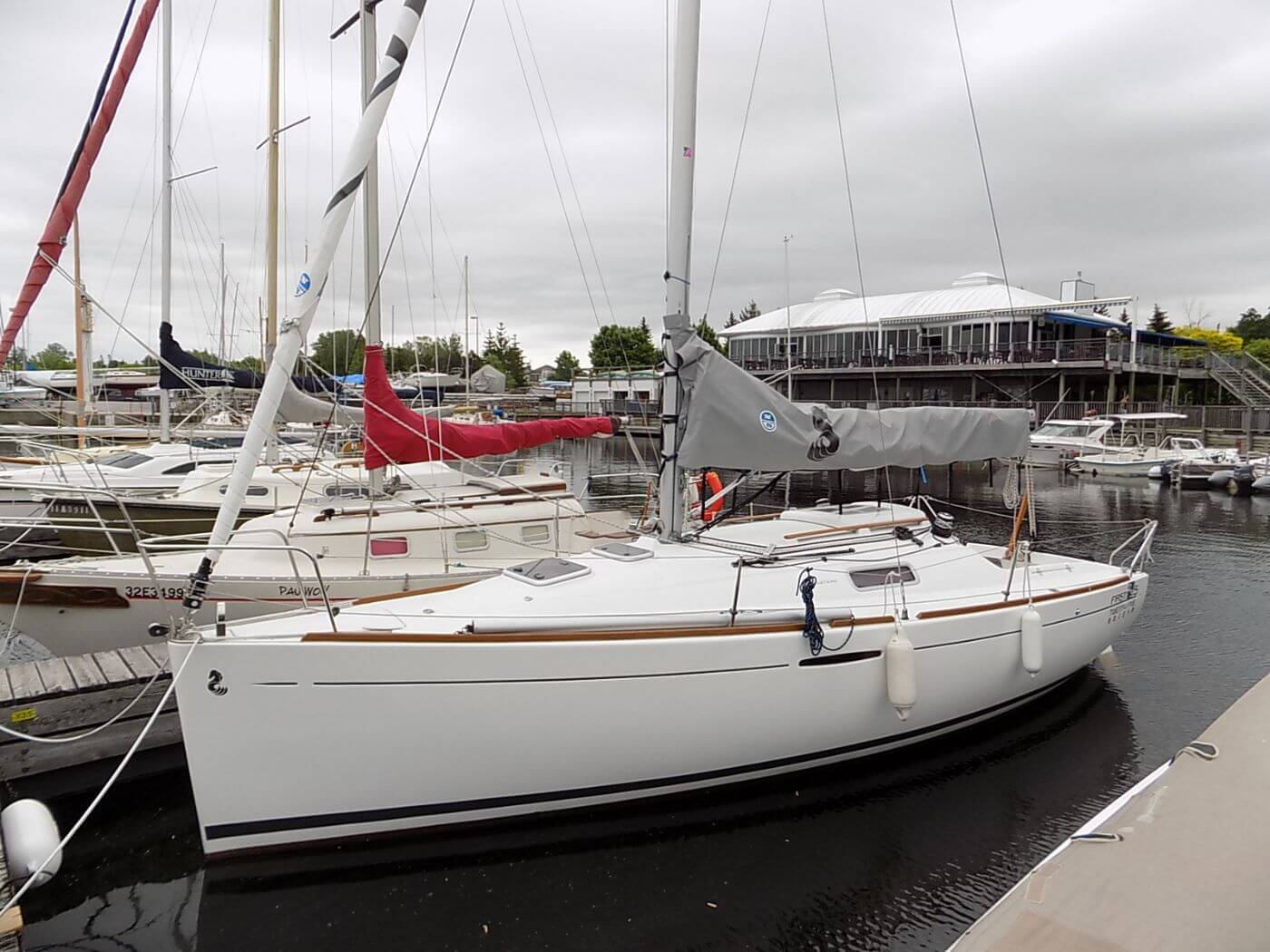
The reason I am mentioning the name of the parent company here is that they own both Beneteau and Jeanneau, brands that are distinguishable on the surface, but if you look close enough, you will find them pretty similar, down to the fact that they are produced in the same factory. So since both Beneteau and Jeanneau are very popular sailor’s choices, both deserve a place on this list, but dedicating a subchapter to each would feel like making a duplicate.
By the way, Groupe Beneteau also owns Lagoon, a renowned catamaran maker, Prestige, luxury yacht manufacturer, Monte Carlo Yachts, CNB Yacht builder, the semi-custom sailboat maker, Four Winns, Glastron, Scarab, Wellcraft, Excess, and Delphia… some of these make motor yachts only, but if you combine fans of all of these, you get a sizable crowd. This company has figured out what people of various tastes want and serves quite a few of these niches.
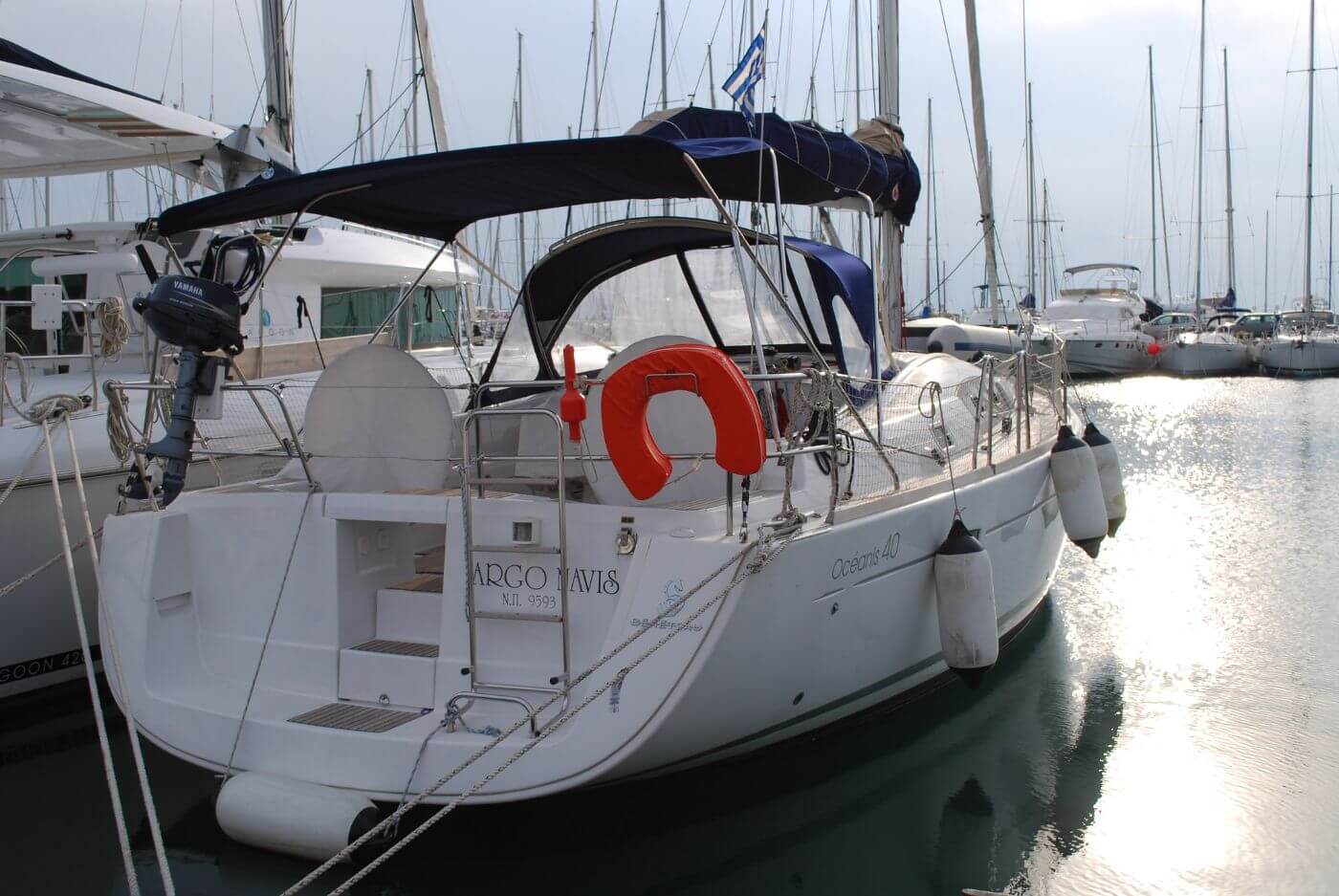
Business aside, let’s see how this French company managed to find its way into the hearts of so many. Well, first of all, they are French. So chic style is to be expected. And with this, fans come. Image wise (and design-wise to a bit) Jeanneau is the sporty one that sails better, while Beneteau aims at the family comfort market. But on both, you will feel loved by the designer. They are made to make you feel good when you use them, and they’ll spoil you with luxury that fits within the specific price tag.
Comfort is a big deal here. On Jeanneaus for instance, you will sometimes find quite unique layouts, often different from the traditional ones, to really pamper the sailors - such as their two master bedroom setup, with the stern one being under the cockpit. A lot of them come with the 360 docking system, which allows you to move the boat around with a joystick and makes maneuvering in marinas so easy you feel like you are cheating. Or consider their decision to make the hull finer to cut through the water better, resulting in less movement - something that helps with comfort. All of this comes for a price but less so than you would expect since the buying power of the enormous Groupe Beneteau helps with shaving off dollars where smaller manufacturers couldn’t. This is, for instance, the reason why they can afford to use wood on their crafts to an extent you wouldn’t expect from a production boat for that price - again, buying volume allows for this even without you necessarily having to pay the expected premium.
Of course, you will mostly find them in Europe, where they are plentiful in marinas, though the aforementioned Bavarias dominate as far as numbers go. But that is mostly because of charters, since last year, over 80 percent of chartered boats were Bavarias. As personal boats, products of Groupe Beneteau belong among the top choices.
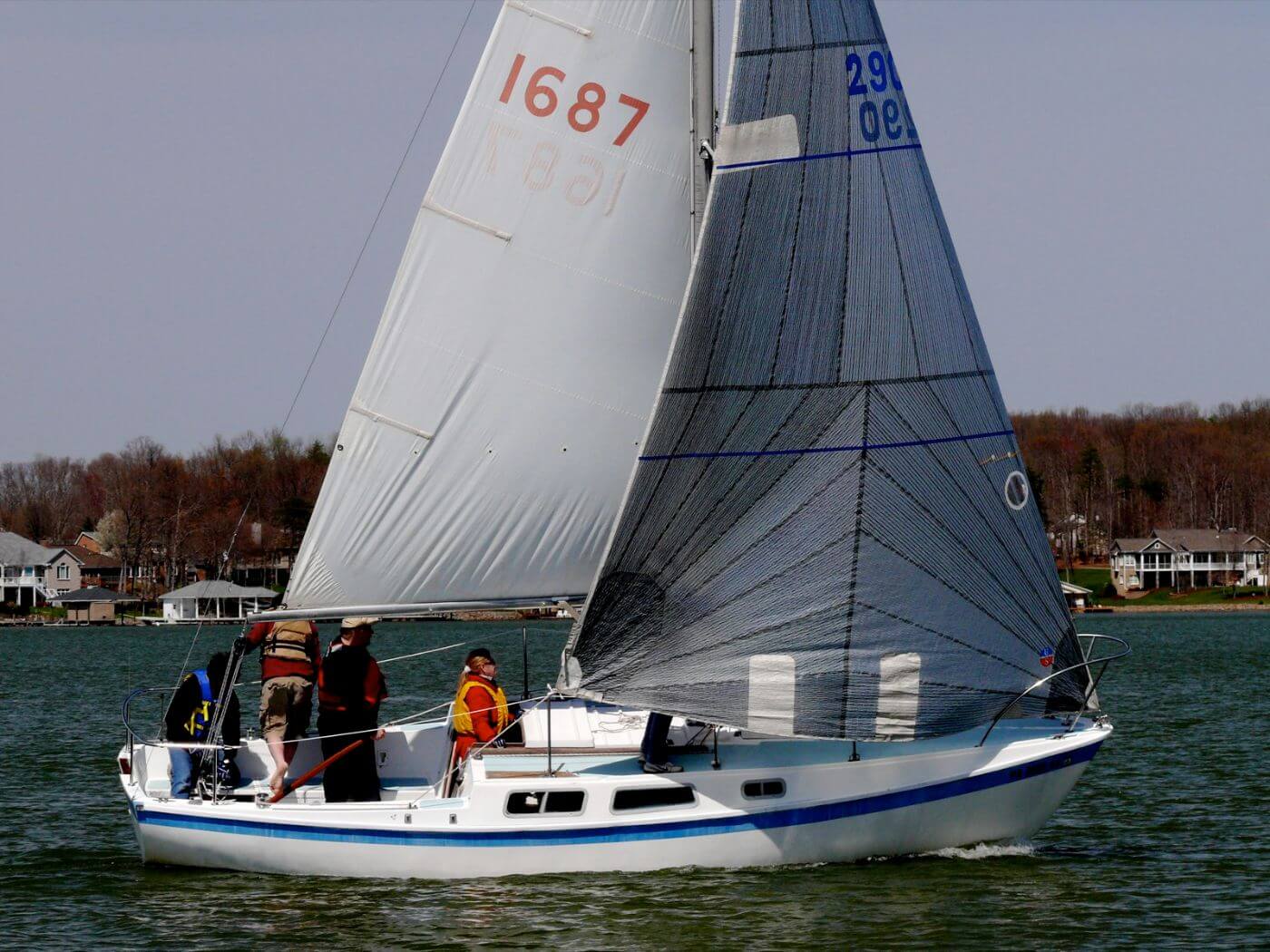
Now, this is a bit of a tricky one. The manufacturer doesn’t exist anymore, in fact, it produced boats from 1960 to 1989, making it over thirty years old, but despite that, the Cal models are still a favorite and worthy member of the cruising as well as performance world.
During the company’s existence, almost twenty thousand boats were built, partially because they were one of the first brands to mass-produce fiberglass sailboats. That, along with Cal models winning impressively in races, helped them to make a name for themselves, a name that still sounds to this day.
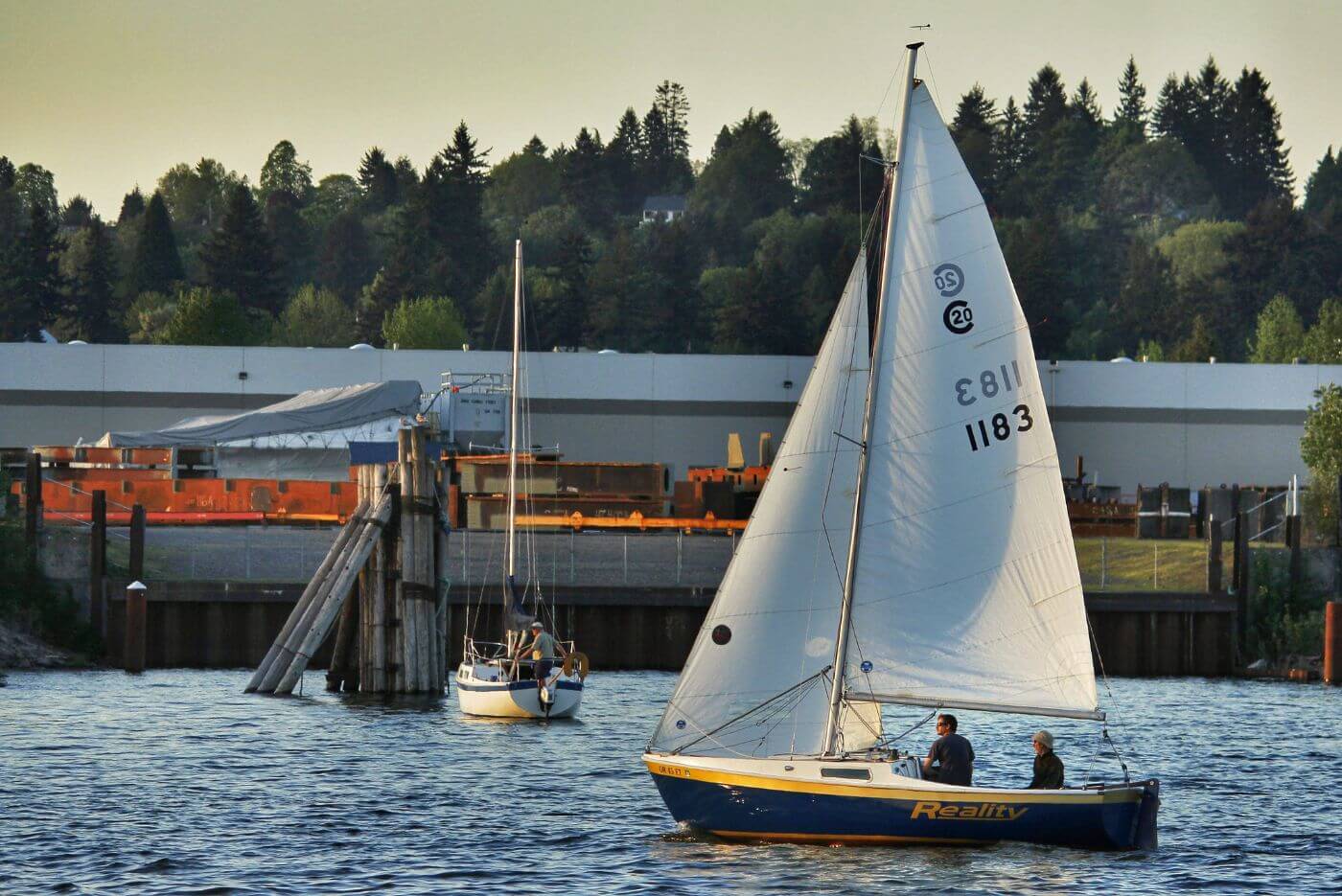
Why is it on this list? Partially because of its prevalence on the seas, partially because of its prevalence in internet forums and pub talks. Cal sailboats are loved by their owners mostly for their responsiveness when under sail, good build quality, (even though many say the interior could have been done way better) as well as reliability even after long years of use. Many of the design features have indeed been improved since, so if thirty years ago you could dominate races with Cals, today you won’t be on the lightest and most up to date boat around anymore. But you won’t be sailing a cruiser either. The boat might not be a pureblood racer, but it was built with racing in mind. Which might give the more sporty ones of your peace of mind that no Bavaria or any traditional cruiser will provide.
Quite a few owners say though that the success from the sixties gained Cal a name that you will pay for when buying one. If you are one of those who want to make sure they are paying for physical value rather than reputation, this might be a dealbreaker for you. There is a certain portion of slight arrogance that comes with racing success, one that shows in later models. But given the brand’s popularity, this is not too big of a deal.
So if cruising is your goal, if long crossings are what you desire, if you simply want a boat that was built with honesty and can take you basically anywhere you want, Cals are a safe bet. You’ll be joining a big, happy and an old family. And an affordable one at that.
In conclusion
To sum it all up, it seems that practicality, affordability, and reliability are the main factors that influence whether a sailboat manufacturer will become popular among sailors or not. As well as extravagant design and beauty, but that’s another story.
There have been many shipyards throughout the ages, some long-lasting, some surviving but a couple of years. Each tried to come up with an angle to sell well. Sometimes it was quirky design, and sometimes it was an intriguing feature, sometimes it was the use of new technology. Sometimes it worked out quite well, other times it did not. But in the end what sailors seem to want is a boat that will not fail them when they need it the most, a boat that is well built enough to cross oceans, because that gives one a sense of freedom and a boat that is built with the user-friendliness in mind. Simply, a boat that is your good friend.
A road to a sailor’s heart is simple, after all.
Daniel O'Connell
Really good article. I was enlightened.
Dan O’Connell
Leave a comment
High School and College Sailors - 15% Off Apparel & Accessories - LEARN MORE

- Call Us +1-503-285-5536
- Sign in & Register
- Recently Viewed
North America's Small Sailboat Experts
We are dedicated to the joy and passion of dinghy sailing. For sailors the world over, the company has become the go-to source for new and used small sailboats, parts, apparel, accessories, and advice. West Coast Sailing is one of the most comprehensive small sailboat stores in the world, representing top manufacturers including Hobie Cat, RS Sailing, and Zim Sailing. With over 15 years of industry experience, our team of passionate dinghy sailors is committed to helping you find the right boat to maximize the fun of your time on the water.
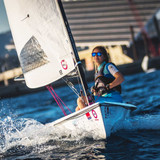
- Qty in Cart
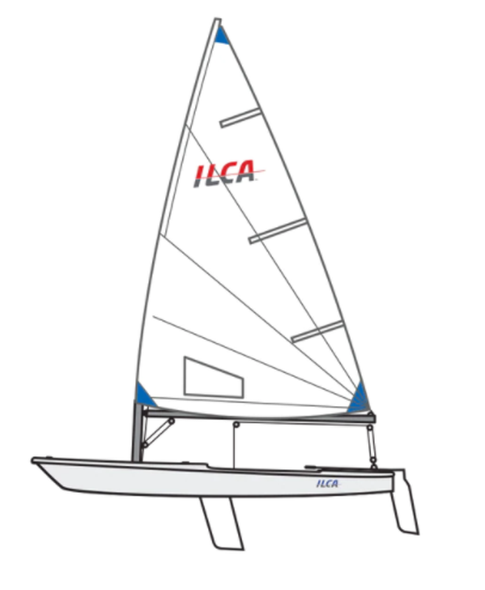
Ovington ILCA - Race

Hobie Mirage Adventure Island

RS Venture Connect

- Total: items /
- Add all to cart
Adding your products to cart
Subscribe to our newsletter.
Sign up for our newsletter to receive exclusive discounts, new product announcements, and upcoming sales.

5 Best Watermakers for Sailboats

With the right Watermaker, the ocean becomes an almost immeasurable supply of fresh and clean drinking water to keep you hydrated during your offshore sailing adventures.
Many sailors do spend a lot of their time and money on various parts of the sailboat including the sails, engine, electronics, and generators especially when preparing for long-distance voyages.
While there's absolutely nothing wrong with this, they often overlook one crucial part of general human survival: having an ample supply of fresh drinking water.
Whether you have freshwater drinking tanks on your sailboat or planning to cruise in areas where you can easily access clean drinking water, the hassle involved in having to come to the dock to fill the water tanks can be quite overwhelming.
This is exactly why you need to find the best watermakers for sailboats.
Like many other nautical technologies, watermakers have significantly advanced in the last few decades to become very efficient and more reliable. They're no longer a luxury on your sailboat but a necessity. Better still, watermakers have become relatively affordable and are meant to keep you hydrated as you explore areas that do not have clean and fresh drinking water.
In this article, we'll take a look at how watermaker systems work, highlight its benefits, and highlight the best sailboat watermakers on the market right now. At the end of this read, you should be able to choose the best watermaker for your sailboat.
Table of contents
Benefits of Having a Watermaker on Your Sailboat
The freedom and security that come with having full water tanks on your sailboat are of immense importance, especially if you're cruising in an area where fresh drinking water is hard to come by and quite expensive when you do. As such, having a watermaker aboard your sailboat is no longer a luxury like it used to be in the past. With a steady supply of fresh and clean water, your life on the sailboat will be a lot better. This is because you'll have enough clean water to drink, cook, wash, and shower, which is beneficial if you want to enjoy your sailing adventures.
Honestly speaking, many sailors do not actually need a watermaker. Well, if you're planning to sail just near the shores, then there's a chance that you can easily access fresh and clean water by the dock. But this can be limiting if you've been dreaming of going off the grid and sailing to some exotic and unknown places in the world.
With that in mind, a watermaker makes a lot of sense to most sailors. You won't have to worry about having to carry aboard gallons of fresh water for cooking and drinking during your voyage. You won't have to treat freshwater as a precious commodity that must last until you can refill at the next port. With a watermaker, you can simply go ocean crossing without worrying about running out of water.
A watermaker allows you to have a steady supply of fresh and clean water to keep everybody well-hydrated and healthy. You can clean the water anytime you feel like and all you have to do is replace the filter once in a while and you'll be good to go. In essence, a watermaker is probably one of the most important equipment to have aboard your sailboat, so installing it is of great importance if you're a serious sailor.
The Basics of Modern Marine Watermakers
Modern marine watermakers essentially follow the principle of reverse-osmosis to produce pure, drinking water from seawater. During this process and through very high pressure, seawater is forced through a semipermeable membrane that only allows freshwater molecules to pass through it but not salt, bacteria, or any other organic material. The newly made pure, drinking water is then piped to the sailboat's water tanks while the leftover (brine) is discharged overboard.
Even though marine watermakers may differ in the type of pump that's employed and how it is driven, this is one of the most important features in every watermaker. In most cases, water can be electrically pumped or powered directly off the boat's engine. If you have an AC generator or alternator on your boat, it would make much sense to use the AC output to drive the watermaker directly. You can also choose the DC-powered models if you rely on renewable energy from solar or wind. Alternatively, you can still go for AC-powered watermakers but you'll have to buy an inverter.
All in all, DC-powered watermakers are more efficient since they integrate a power-saving energy recovery system (ERS). You must, however, keep in mind that your energy consumption levels might be quite high if you're sailing in colder and saltier areas. This is because the water purification process might be a bit slower in such areas. As such, you should consider investing in a more high-powered watermaker system if you will be sailing in colder and saltier areas than if you're planning to sail more in warm and less salty areas.
As far as an engine-driven watermaker is concerned, you should mount the high-pressure pump on the engine so that it can be belt-driven using an automatic clutch. An engine-driven watermaker should be your first option if you want large quantities of fresh drinking water. This is more productive than AC or DC-powered watermakers. Even with a relatively small engine, this setup has an automatic regulator that constantly pumps the water. With that in mind, engine-driven watermakers are ideal if you want to reduce your energy consumption. To put it into perspective, an engine-driven watermaker can lower energy consumption by an enormous 80%, especially when compared with conventional AC or DC-powered watermaker systems.
How to Choose the Best Watermaker for Your Sailboat
There are many factors to consider when looking for the best watermakers for your sailboat. Here are the most important things to consider.
Your Freshwater Needs
One of the most important things to consider before spending your money on a watermaker is your freshwater needs. What quantity would be enough to keep you going on your sailing adventure? While the quantity might differ from one sailor to the other or from one boat to the other, you should consider the number of gallons that a particular watermaker can produce per day. This will help you in choosing the ideal watermaker; a model that will ensure that you never run out of water. Do not underestimate your water needs, especially if you're planning to sail with your children or if you're planning to stay on the boat for an extended period of time.
Do you have enough space on your vessel to accommodate the type of watermaker you're looking to buy? While most watermakers are designed to fit in the smallest of space, you should consider the actual size of the watermaker and find out whether you have enough space on your vessel to fix it.
Watermakers can run on electricity, renewable energy such as wind and solar (if you have them on your vessel), or both. When looking for the perfect watermaker, you should consider how to power it and whether or not the watermaker has low-energy consumption, which is definitely a great feature. Again, there are also engine-driven watermakers, so it's important to know exactly what you're going for.
Maintenance
Watermakers have a reputation for being difficult to maintain. Fortunately, the equipment and components have improved in the last few years so you should go for a model that's easy to maintain. You should use the watermaker in water bodies that look good, You should avoid using the watermaker in dirty harbors as you may have to change the filters every so often or even damage your watermaker altogether.
Best Watermakers for Sailboats
Let's take a look at the best watermakers available on the market right now.
The Ultra Whisper
Engineered by limited electrical options that can run on either DC or AC, THE Ultra Whisper by Sea Recovery is one of the best watermakers currently available on the market. In addition to being very quiet, this watermaker features an automatic operation that requires very minimal operator adjustment.
This watermaker is ideal for small powerboats and sailboats since it can serve as an efficient water supply. This model boasts about a 75% reduction in power consumption, especially when compared to other models.
- Smooth and quiet water production
- Can produce up to 2,280 liters per day
- Ideal for small boats
- It is energy efficient
- It might not be perfect for large boats
Echotec Watermaker
If you want a watermaker model that can produce 60 liters per hour flawlessly and with no maintenance apart from changing the filters, look no further than the Echotec Watermaker. This model is designed for ultra-reliable performance and easy customer installation.
This watermaker is made from high-quality components that can withstand the continuous harsh marine environment, making it one of the most durable watermakers on the market. This is essentially a series of modular watermakers ranging from 12-volt to 24-volt DC-powered models. They bring forth energy efficiency, a computerized energy recovery system, and ultimate reliability to ensure that you never run out of fresh drinking water while out there on the sea.
- Energy efficient
- Cost-effective
- Comes with a very low speed
- Not ideal for large boats
Spectra Katadyn PowerSurvivor
As a compact and energy-efficient watermaker, the Spectra Katadyn PowerSurvivor is arguably the most affordable watermaker currently available on the market. We are talking about a model that only requires 4 amps to desalinate water for your sailboat. It can produce 1.5 gallons of fresh drinking water per hour, which is an excellent return for a watermaker of its size.
It is also one of the most portable watermakers around. You can choose to either install it permanently or temporarily in case you want to take it somewhere else. This portability is also essential if you're looking for a space-saving model that can fit in the smallest of compartments. Its simple but rugged design is essential in ensuring that it can perform at its best even in harsh marine conditions. In terms of its power capabilities, this is the only model on the market that will convert to a hand-operated system or manual power if there's a power shortage.
- Portable and lightweight
- Rugged design to withstand harsh marine environments
- Efficient and reliable
- Can revert to manual power if there's a power shortage
- Perfect for off-grid sailing
- Gasoline or diesel can easily damage the semi-permeable membrane
Village Marine - Little Wonder Series
Whether you're looking for a watermaker for your small sailboat or looking for a watermaker that can efficiently serve those huge yachts, the Village Marine Little Wonder Series provides everything. This model is meant for experienced sailors who are looking for various capacity options. This watermaker weighs just about 69 pounds but can produce nearly 180 gallons of fresh drinking water each day.
Designed with a low RPM high-pressure pump, this model remains one of the most efficient and economical watermakers on the market. That's not all; this watermaker is designed with corrosion-resistant features and is one of the most serviceable watermakers in the game. It is reliable, quiet, and portable; all factors that make a watermaker great.
- Easy to operate
- Corrosion-resistant
- Easy to maintain
- Quiet and versatile
- It doesn't have automatic adjustment controls
Ventura 150 Watermaker
This is one of the most versatile watermakers on the market. It can use both electricity and renewable energy. This model is engineered to be lightweight and energy-efficient and its compact and modular design makes it a great option if you're looking for a watermaker that's easy to use and install in confined spaces.
The Ventura 150 watermaker is highly efficient as it can produce over 6 gallons of water an hour, which makes it quite perfect for small vessels. This sailboat watermaker features a controller that allows you to operate and monitor the device remotely. It also has the auto store button that will automatically flash the system after every five days.
This watermaker is quiet and surprisingly compact despite its ability to produce about 150 gallons of water per day. It also gives you the option of going for the automated manual or manual model.
- Very versatile
- Can use both electricity and renewable energy power
- It is smooth and quiet
- It is compact and lightweight
- The manual model has analog controls
To this end, it's easy to see that having an ideal watermaker aboard your vessel is one of the first crucial steps towards being self-sufficient and sustainable. With a watermaker, you'll be able to access fresh drinking water at all times when sailing even in far-flung places. Most of these models are well-constructed and incorporate some of the best technologies that make them efficient, reliable, and easy to install, use, and maintain.
So when it comes to choosing the best watermaker for your sailboat, it may all come down to what is ideal for you in terms of energy consumption, efficiency, the quantity of water produced, among many other things. With an ideal watermaker, you can remain off the grid for as long as you want without ever worrying about running out of water and this is of great importance in enjoying your sailing adventures.
Related Articles
Daniel Wade
I've personally had thousands of questions about sailing and sailboats over the years. As I learn and experience sailing, and the community, I share the answers that work and make sense to me, here on Life of Sailing.
by this author
Sailboat Upgrades
Most Recent

What Does "Sailing By The Lee" Mean?
October 3, 2023

The Best Sailing Schools And Programs: Reviews & Ratings
September 26, 2023
Important Legal Info
Lifeofsailing.com is a participant in the Amazon Services LLC Associates Program, an affiliate advertising program designed to provide a means for sites to earn advertising fees by advertising and linking to Amazon. This site also participates in other affiliate programs and is compensated for referring traffic and business to these companies.
Similar Posts

How To Choose The Right Sailing Instructor
August 16, 2023

Cost To Sail Around The World
May 16, 2023

Small Sailboat Sizes: A Complete Guide
October 30, 2022

Popular Posts

Best Liveaboard Catamaran Sailboats
December 28, 2023

Can a Novice Sail Around the World?
Elizabeth O'Malley
June 15, 2022

4 Best Electric Outboard Motors

How Long Did It Take The Vikings To Sail To England?

10 Best Sailboat Brands (And Why)
December 20, 2023

7 Best Places To Liveaboard A Sailboat
Get the best sailing content.
Top Rated Posts
© 2024 Life of Sailing Email: [email protected] Address: 11816 Inwood Rd #3024 Dallas, TX 75244 Disclaimer Privacy Policy
- BOAT OF THE YEAR
- Newsletters
- Sailboat Reviews
- Boating Safety
- Sails and Rigging
- Maintenance
- Sailing Totem
- Sailor & Galley
- Living Aboard
- Destinations
- Gear & Electronics
- Charter Resources
- Ultimate Boating Giveaway

40 Best Sailboats
- By Cruising World Editors
- Updated: May 24, 2024
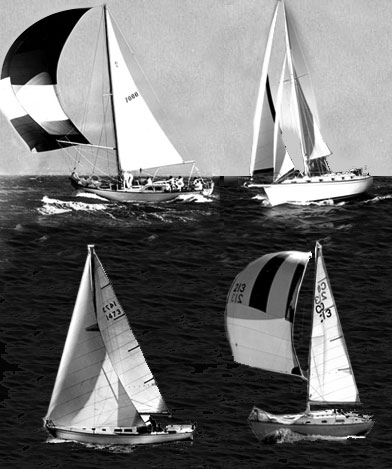
Sailors are certainly passionate about their boats, and if you doubt that bold statement, try posting an article dubbed “ 40 Best Sailboats ” and see what happens.
Barely had the list gone live, when one reader responded, “Where do I begin? So many glaring omissions!” Like scores of others, he listed a number of sailboats and brands that we were too stupid to think of, but unlike some, he did sign off on a somewhat upbeat note: “If it weren’t for the presence of the Bermuda 40 in Cruising World’s list, I wouldn’t even have bothered to vote.”
By vote, he means that he, like hundreds of other readers, took the time to click through to an accompanying page where we asked you to help us reshuffle our alphabetical listing of noteworthy production sailboats so that we could rank them instead by popularity. So we ask you to keep in mind that this list of the best sailboats was created by our readers.
The quest to building this list all began with such a simple question, one that’s probably been posed at one time or another in any bar where sailors meet to raise a glass or two: If you had to pick, what’re the best sailboats ever built?
In no time, a dozen or more from a variety of sailboat manufacturers were on the table and the debate was on. And so, having fun with it, we decided to put the same question to a handful of CW ‘s friends: writers and sailors and designers and builders whose opinions we value. Their favorites poured in and soon an inkling of a list began to take shape. To corral things a bit and avoid going all the way back to Joshua Slocum and his venerable Spray —Hell, to Noah and his infamous Ark —we decided to focus our concentration on production monohull sailboats, which literally opened up the sport to anyone who wanted to get out on the water. And since CW is on the verge or turning 40, we decided that would be a nice round number at which to draw the line and usher in our coming ruby anniversary.
If you enjoy scrolling through this list, which includes all types of sailboats, then perhaps you would also be interested in browsing our list of the Best Cruising Sailboats . Check it out and, of course, feel free to add your favorite boat, too. Here at Cruising World , we like nothing better than talking about boats, and it turns out, so do you.
– LEARN THE NAVIGATION RULES – Know the “Rules of the Road” that govern all boat traffic. Be courteous and never assume other boaters can see you. Safety Tip Provided by the U.S. Coast Guard
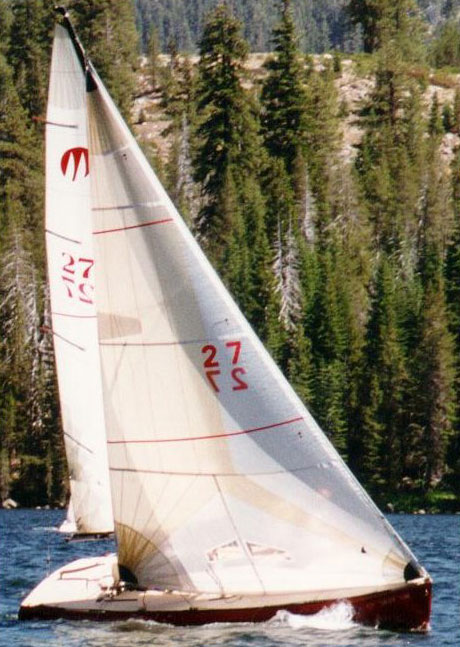
40. Moore 24
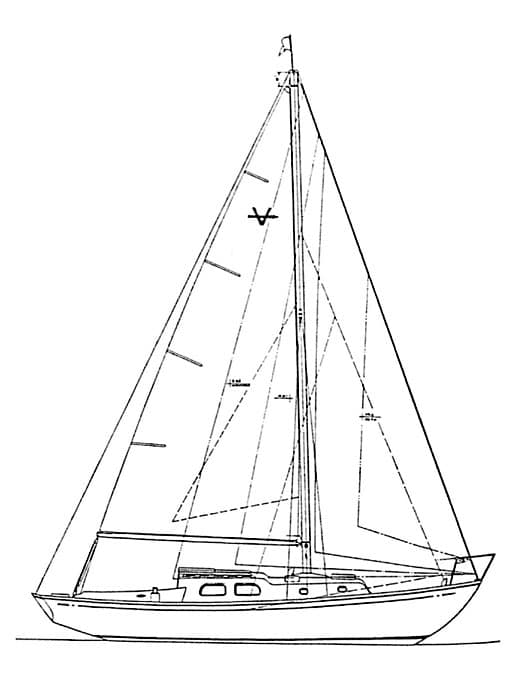
39. Pearson Vanguard
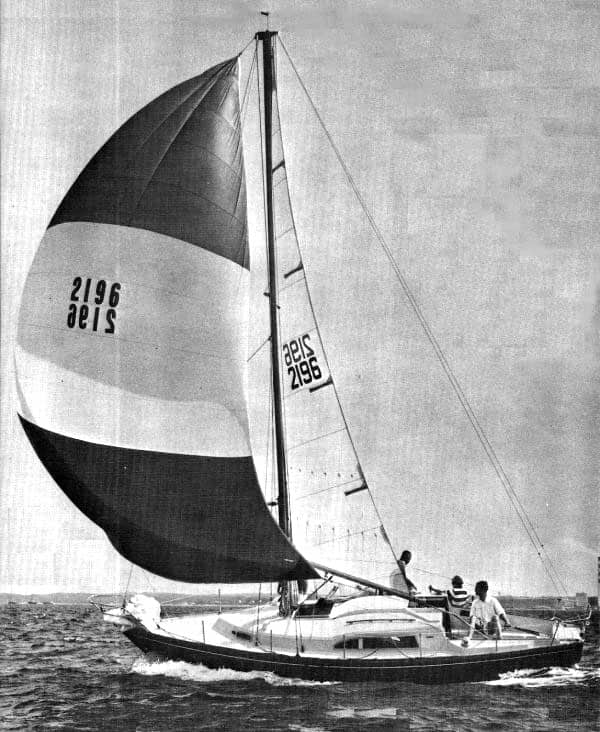
38. Dufour Arpege 30
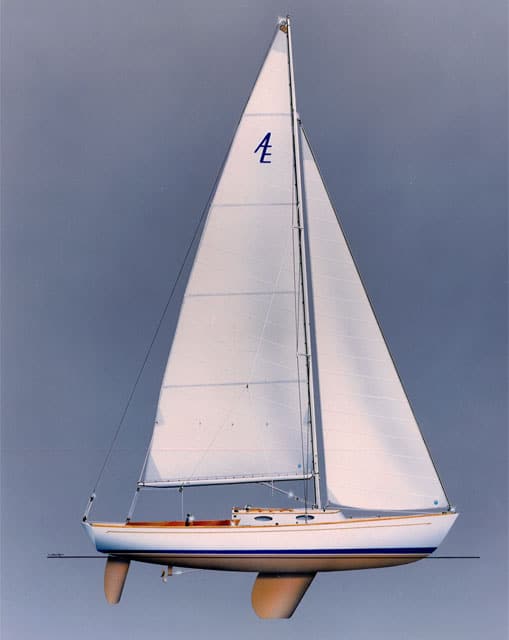
37. Alerion Express 28
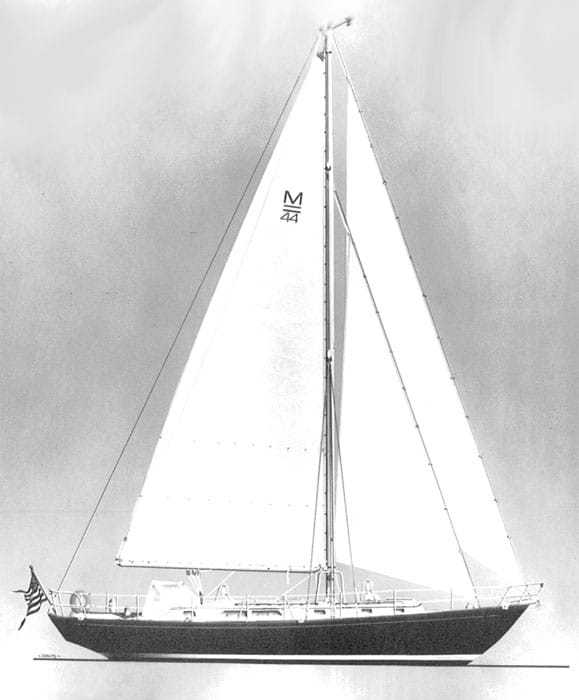
36. Mason 43/44
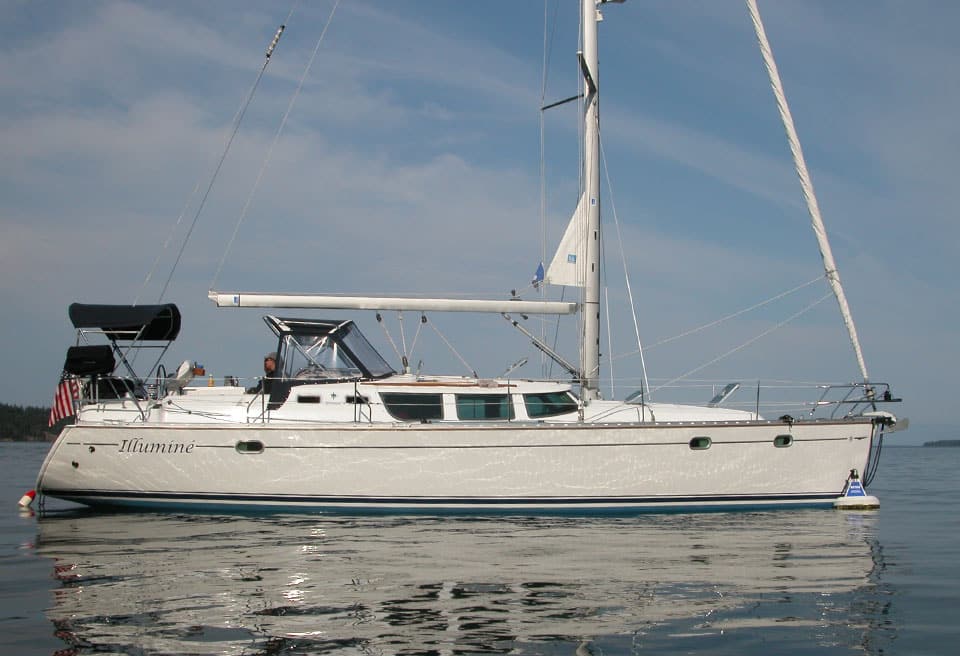
35. Jeanneau Sun Odyssey 43DS
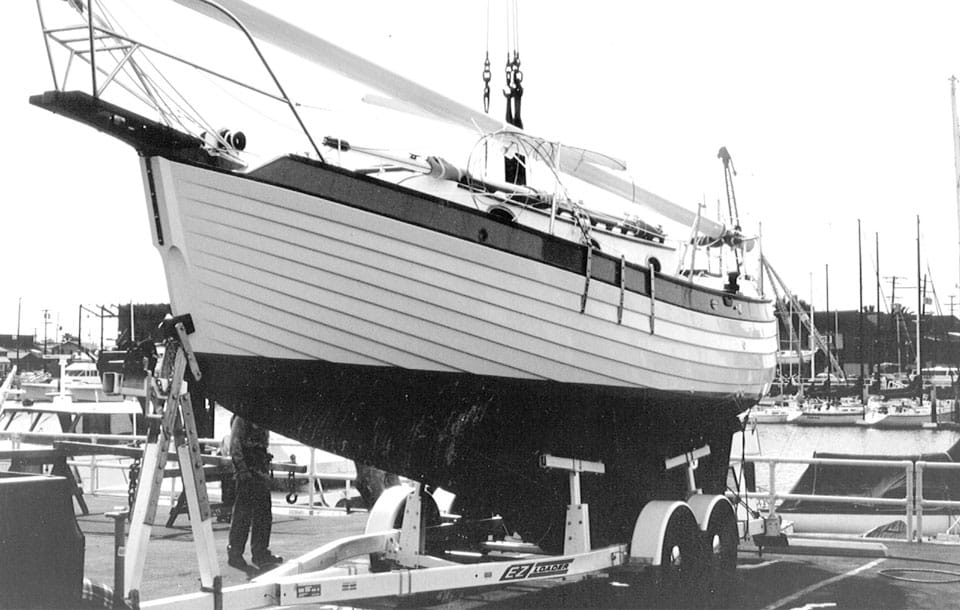
34. Nor’Sea 27
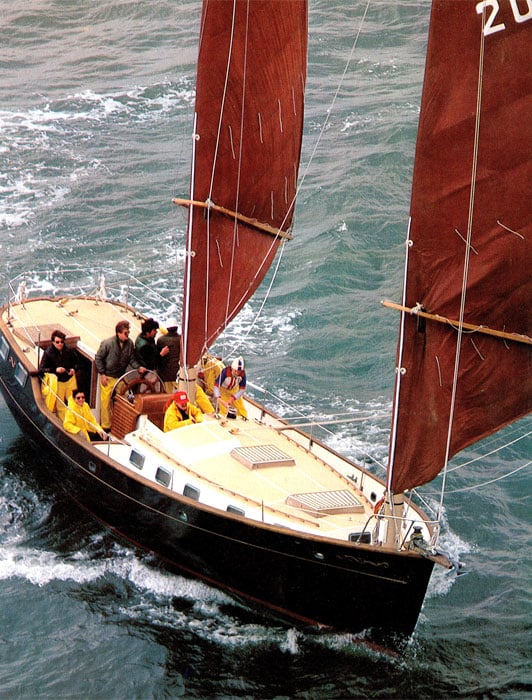
33. Freedom 40
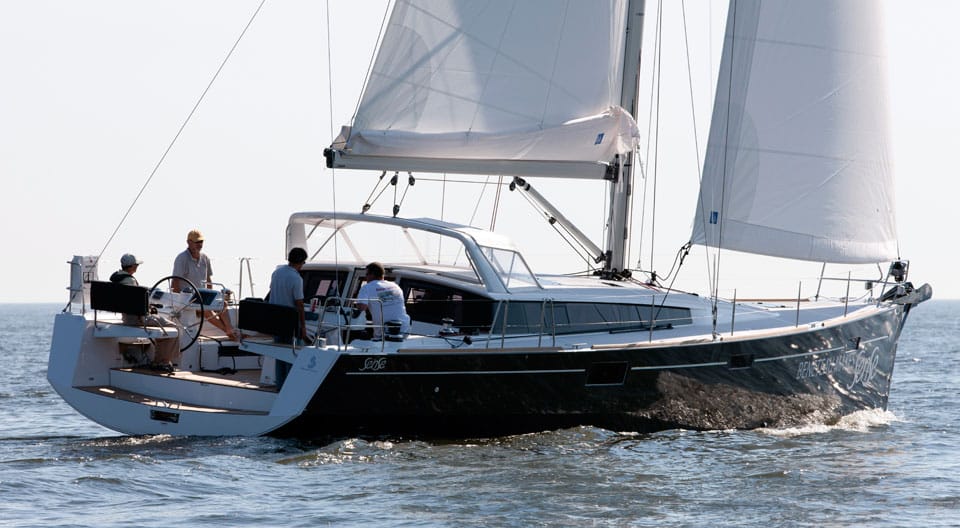
32. Beneteau Sense 50
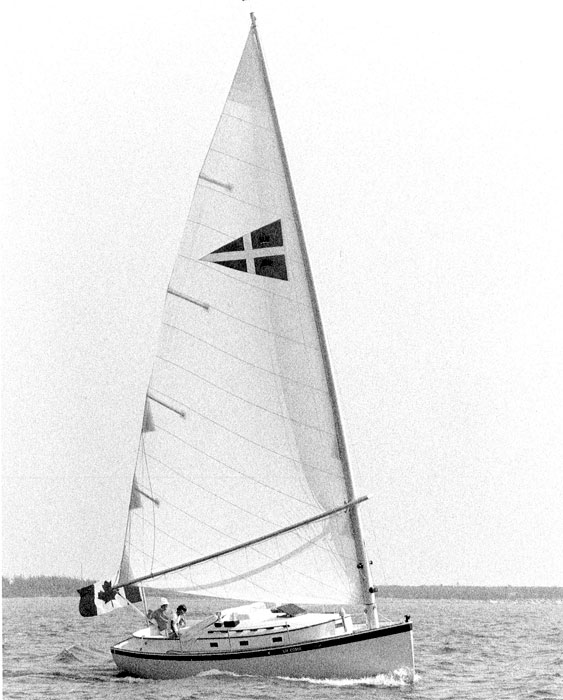
31. Nonsuch 30
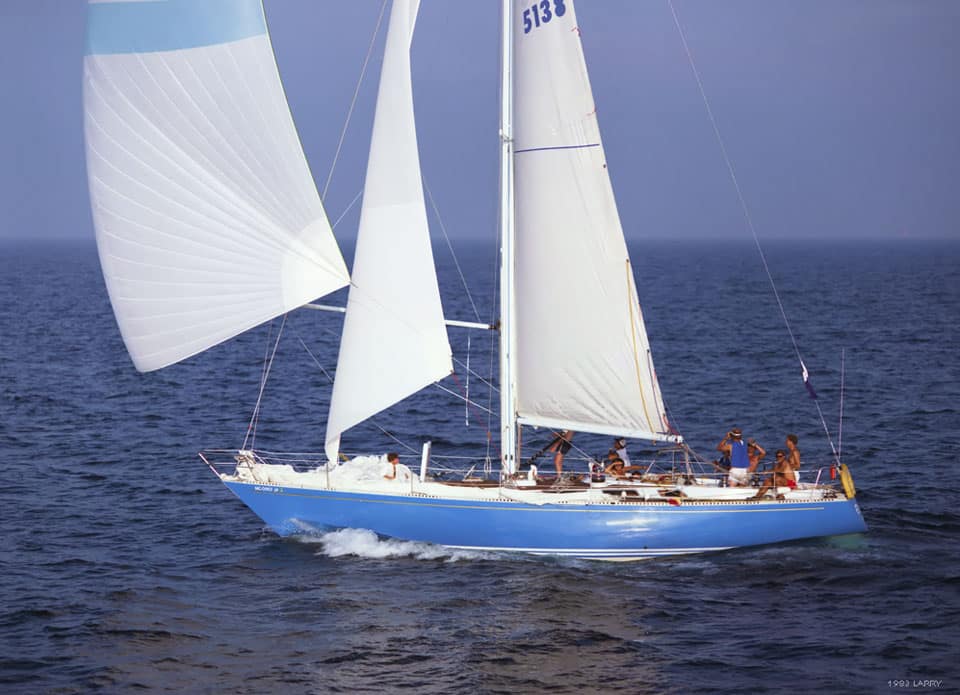
30. Swan 44
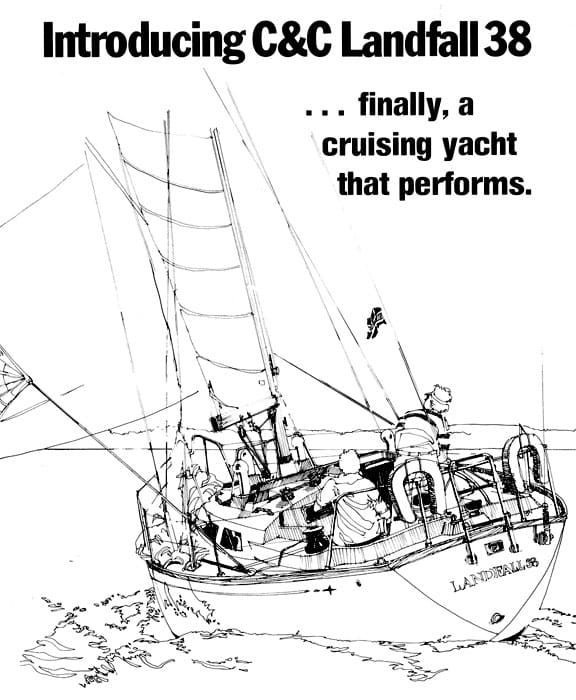
29. C&C Landfall 38
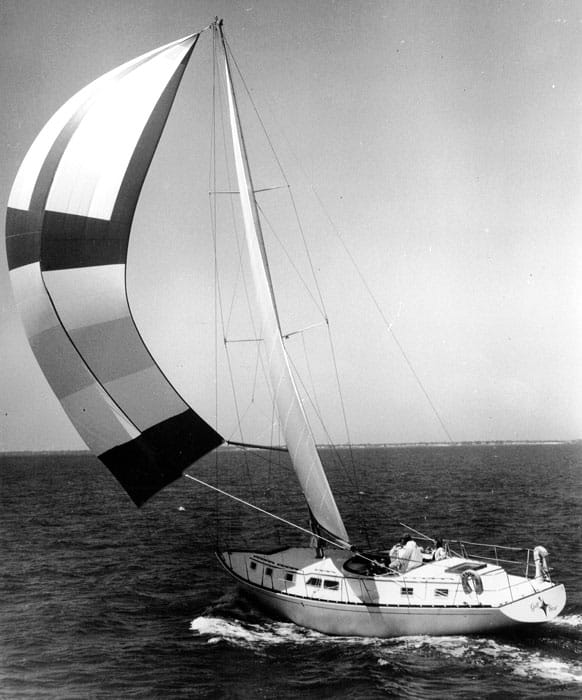
28. Gulfstar 50
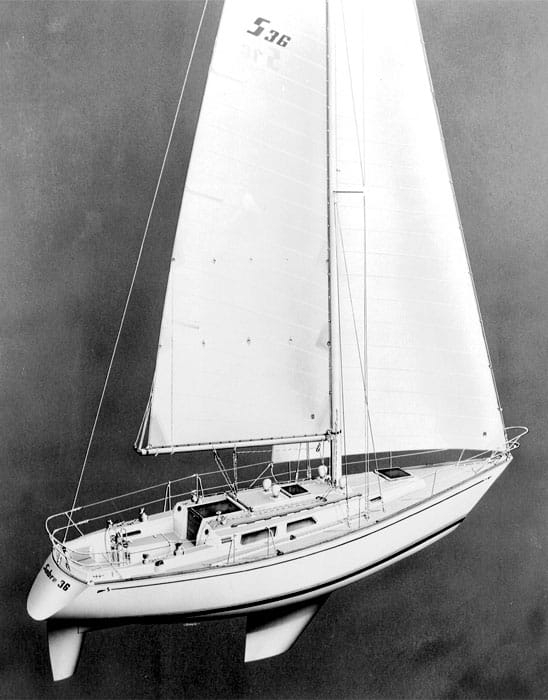
27. Sabre 36
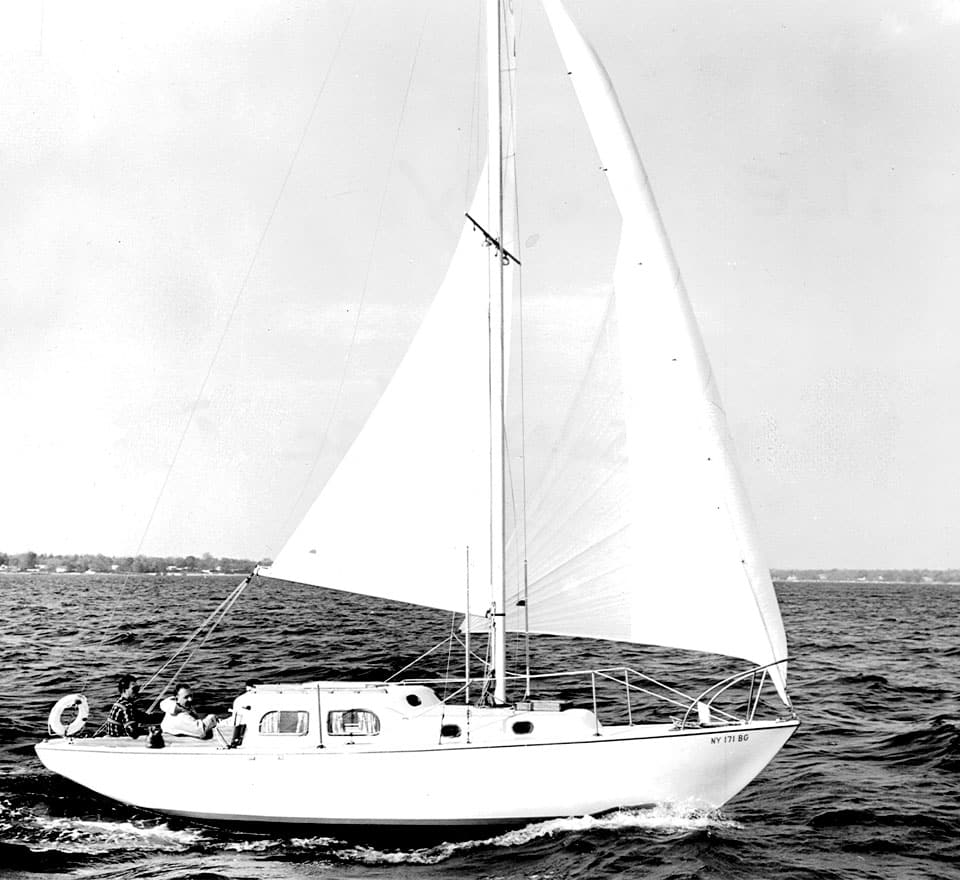
26. Pearson Triton
– CHECK THE FIT – Follow these guidelines to make sure your life jacket looks good, stays comfortable and works when you need it. Safety Tip Provided by the U.S. Coast Guard
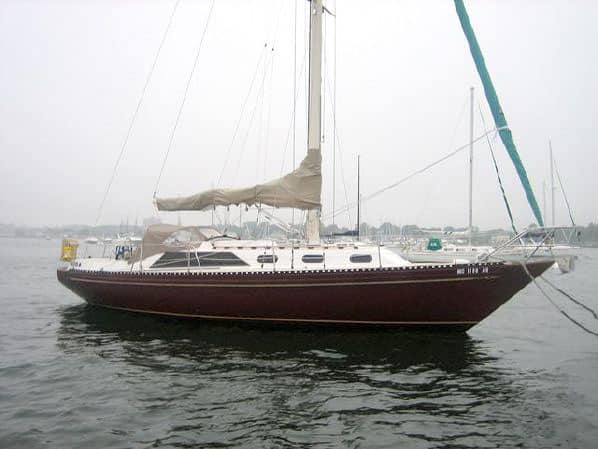
25. Islander 36
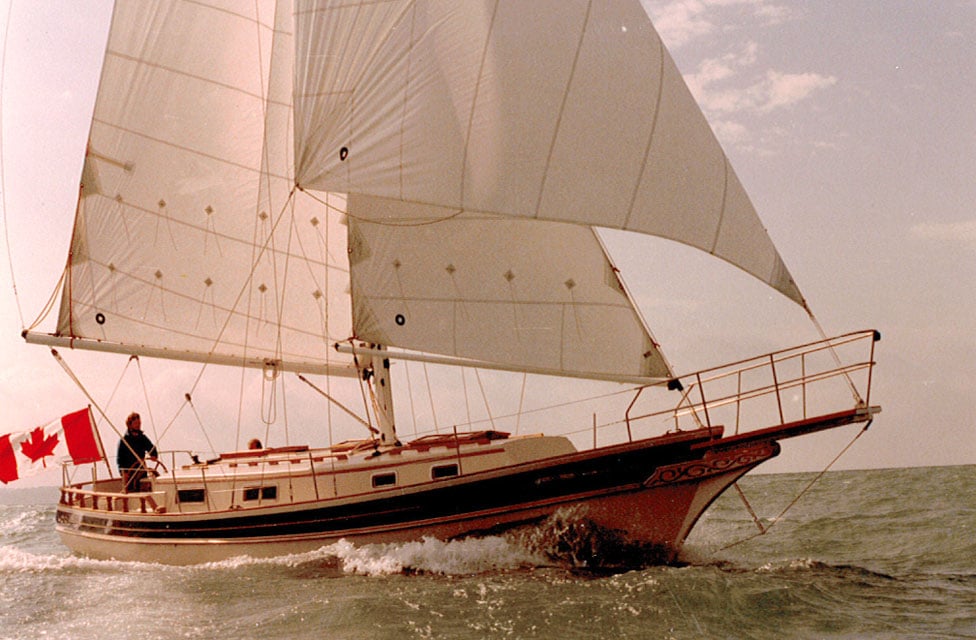
24. Gozzard 36
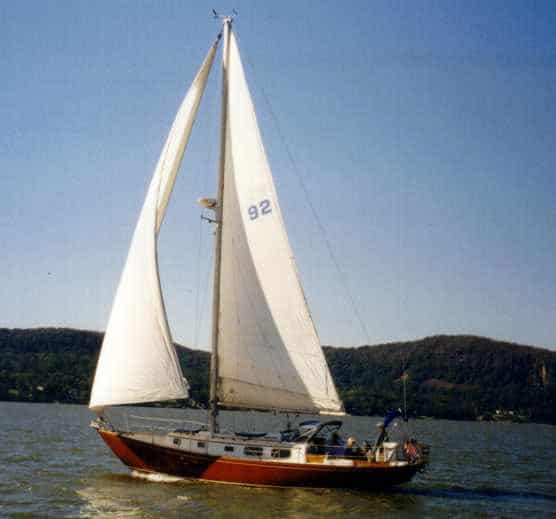
23. Bristol 40
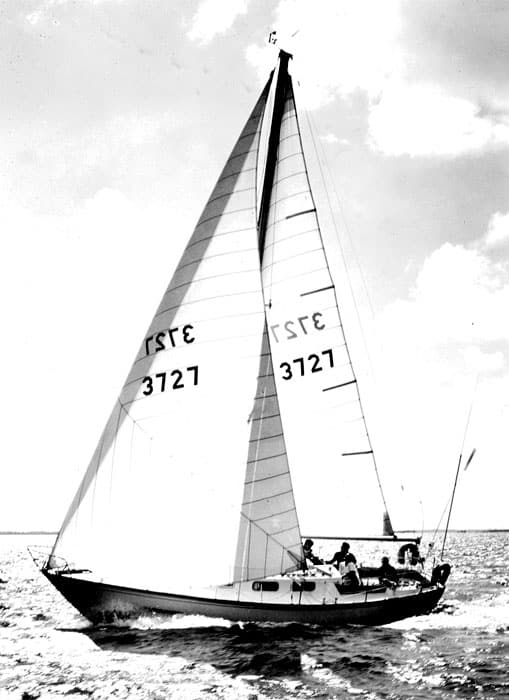
22. Tartan 34
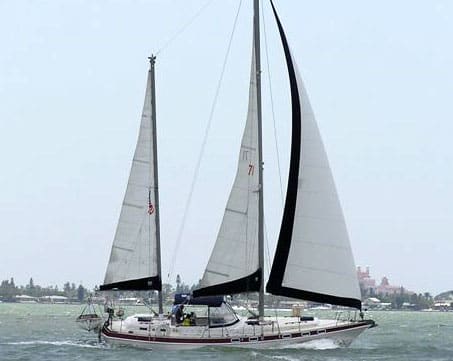
21. Morgan Out Island 41
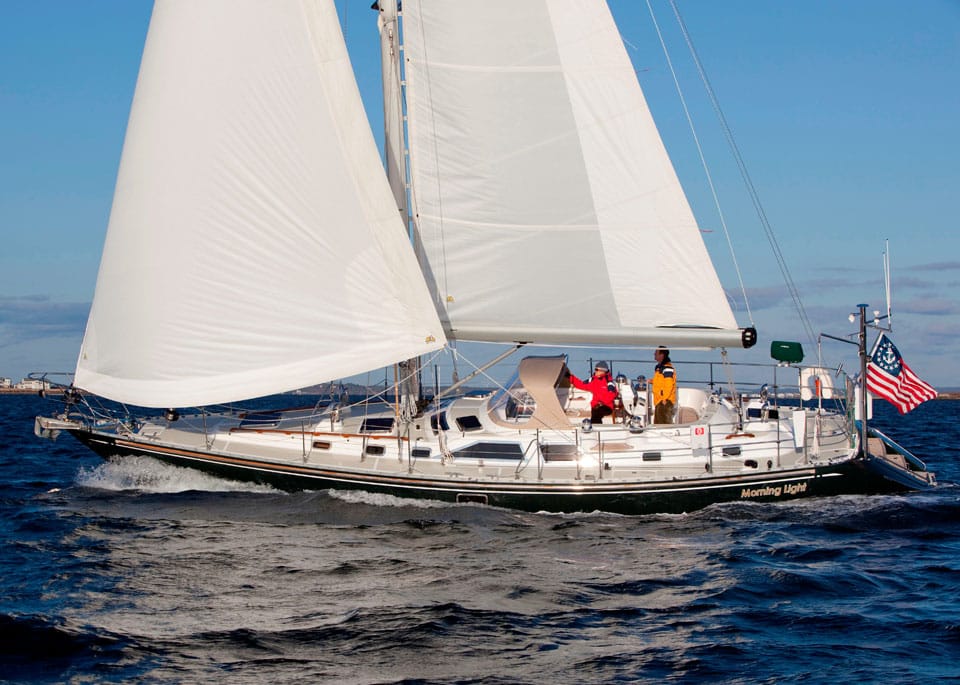
20. Hylas 49
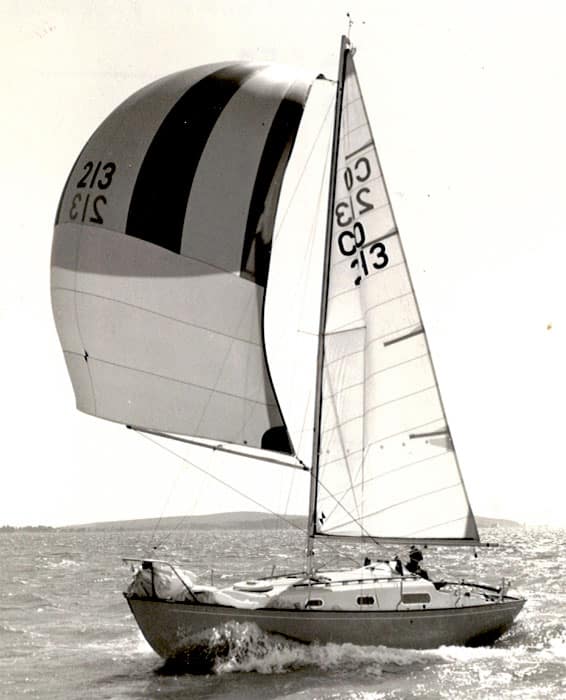
19. Contessa 26
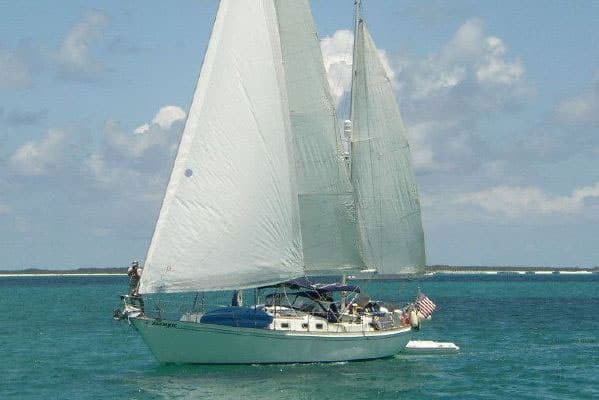
18. Whitby 42
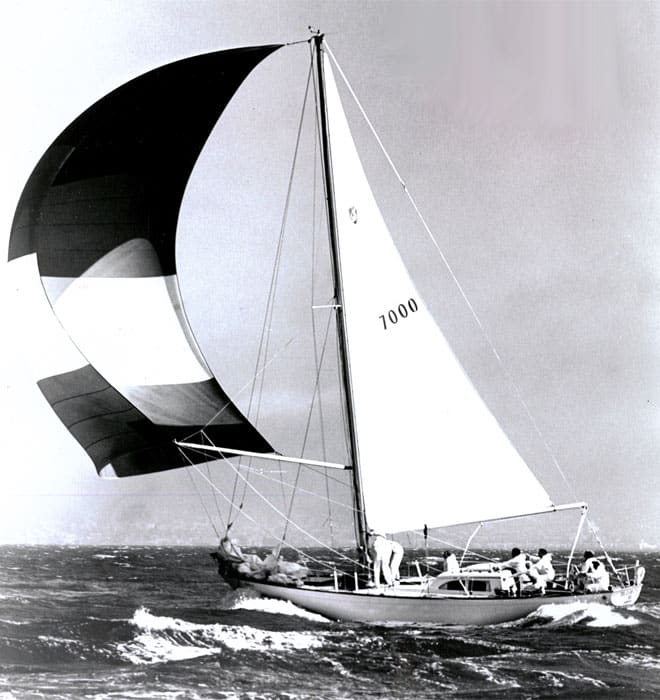
17. Columbia 50
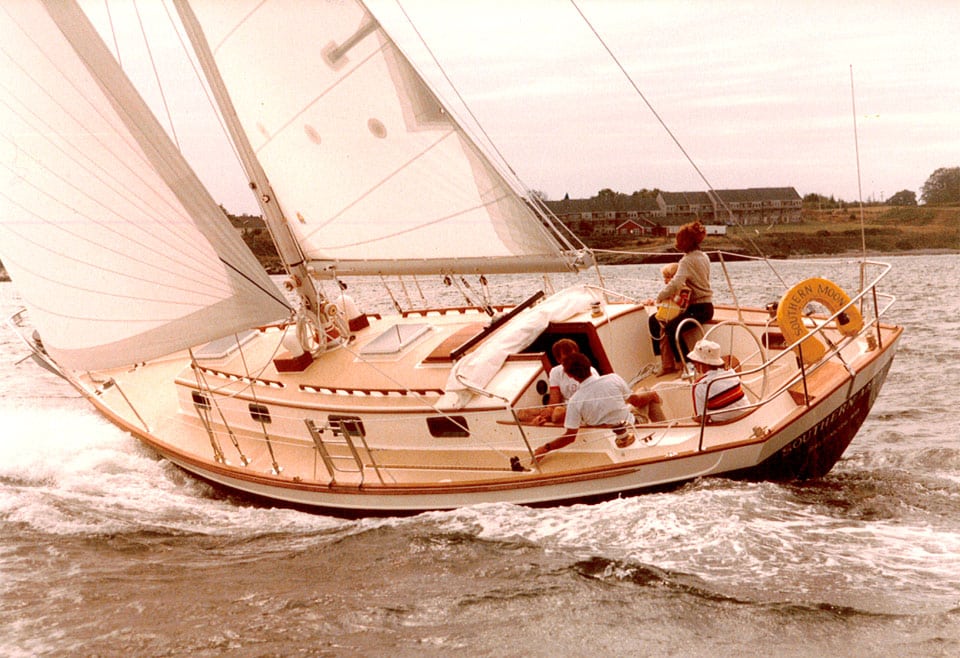
16. Morris 36
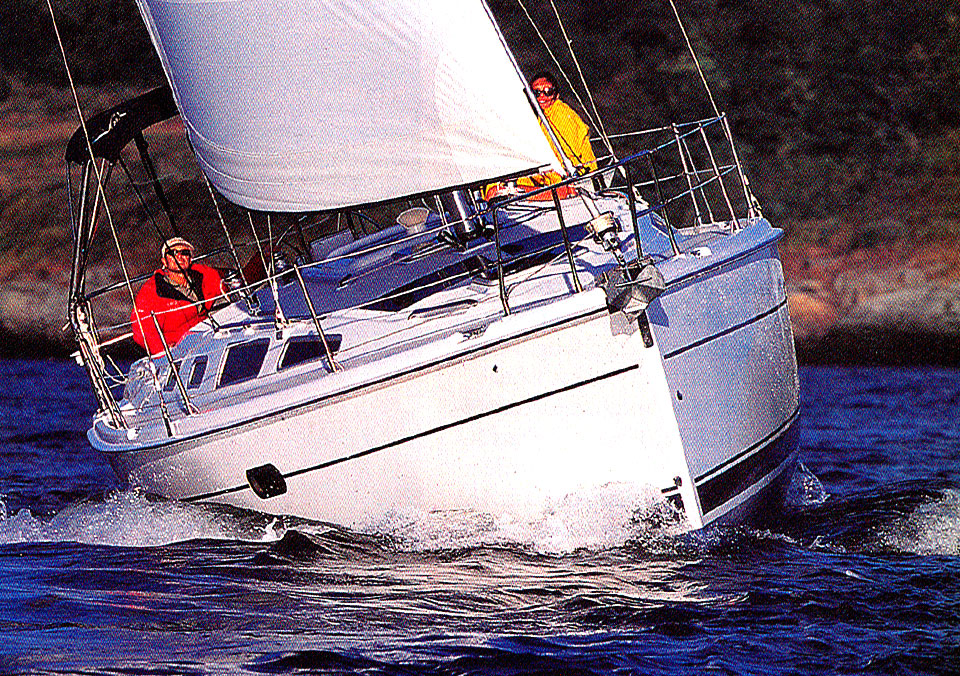
15. Hunter 356
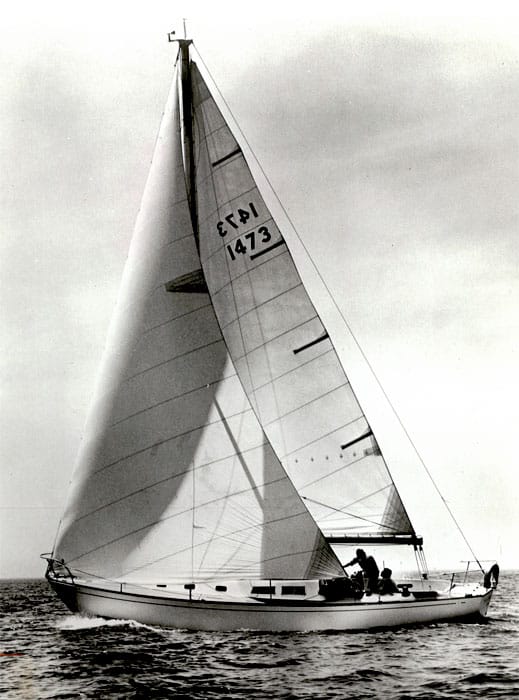
13. Beneteau 423
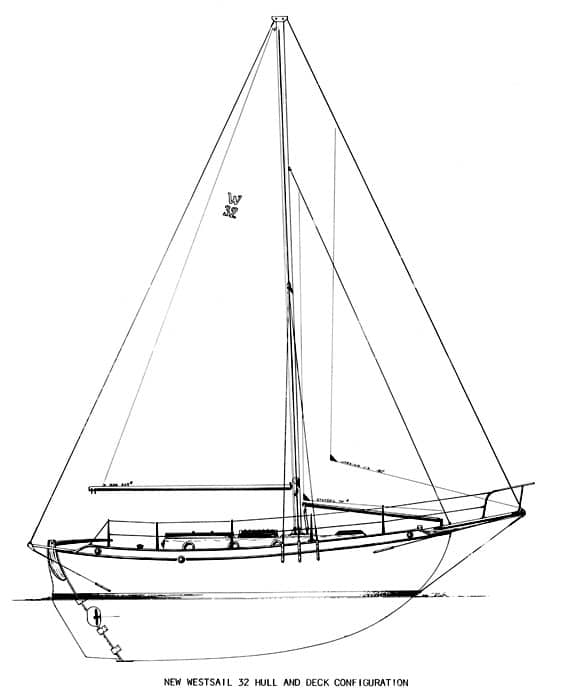
12. Westsail 32
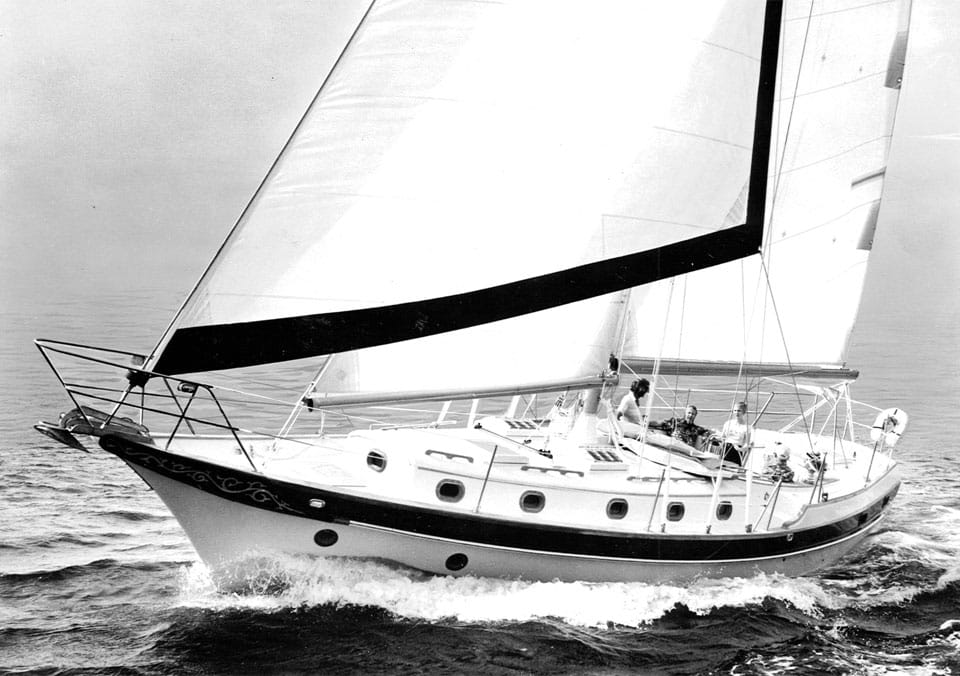
– CHECK THE WEATHER – The weather changes all the time. Always check the forecast and prepare for the worst case. Safety Tip Provided by the U.S. Coast Guard
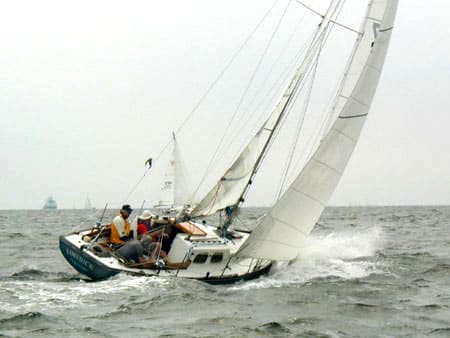
10. Alberg 30
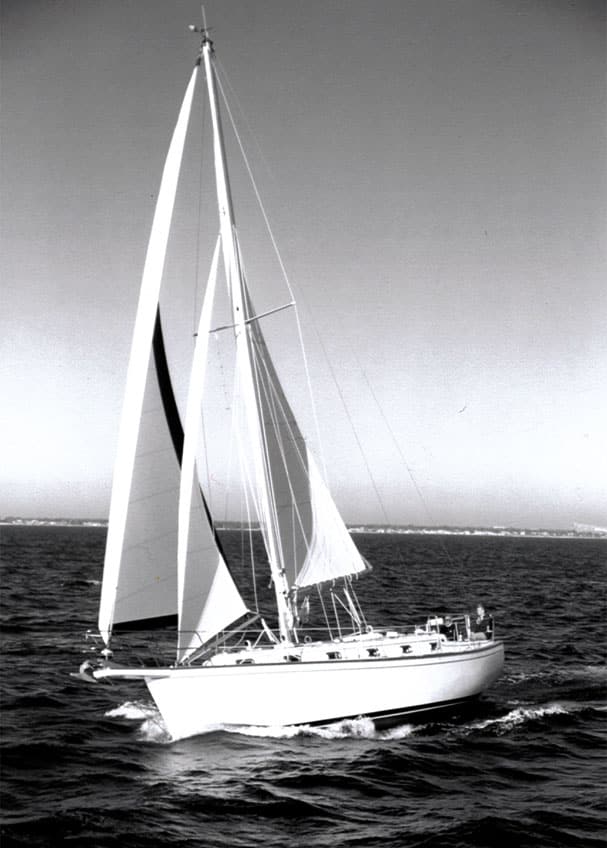
9. Island Packet 38
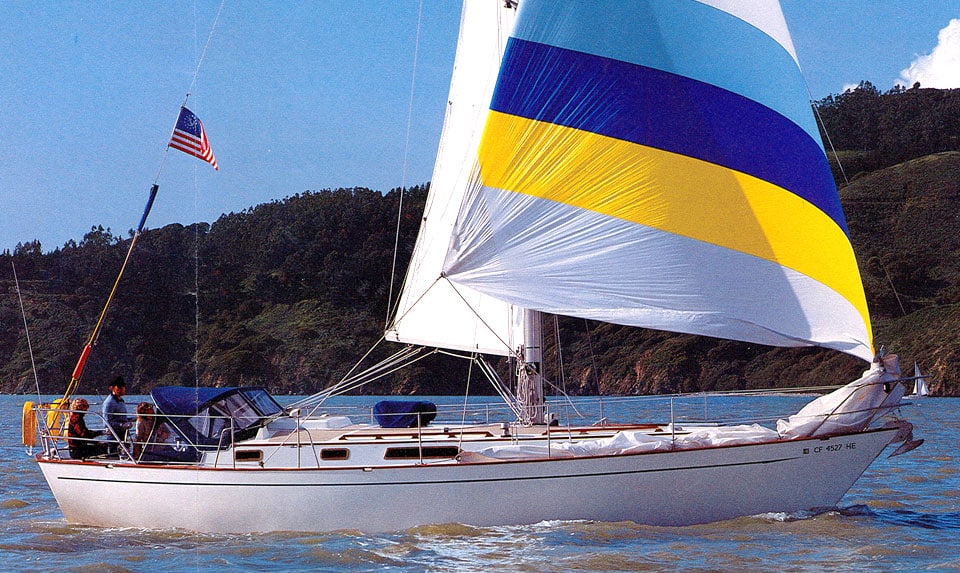
8. Passport 40
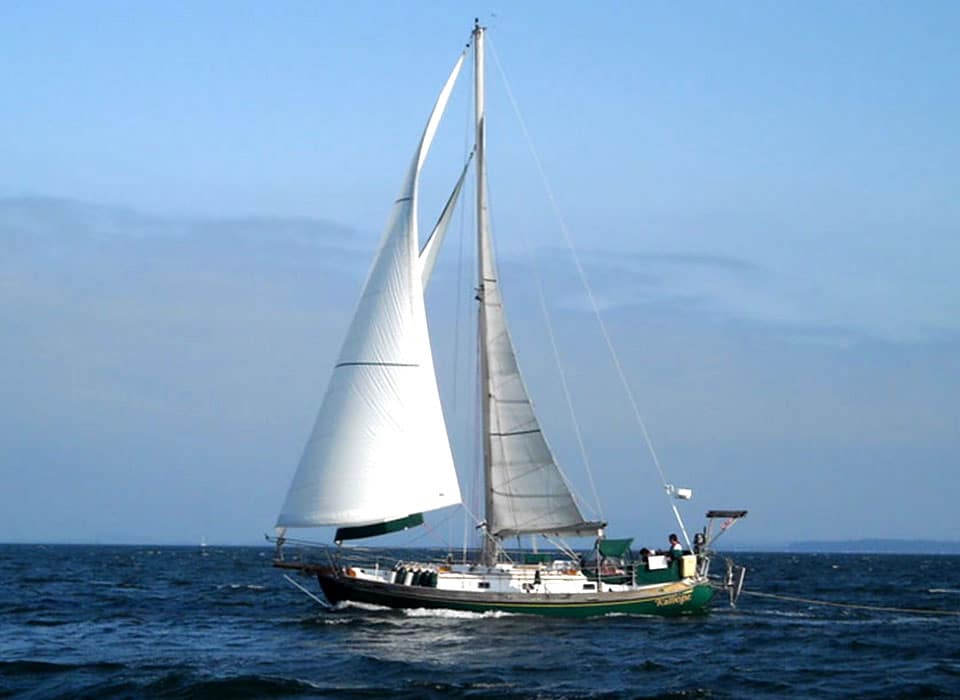
7. Tayana 37
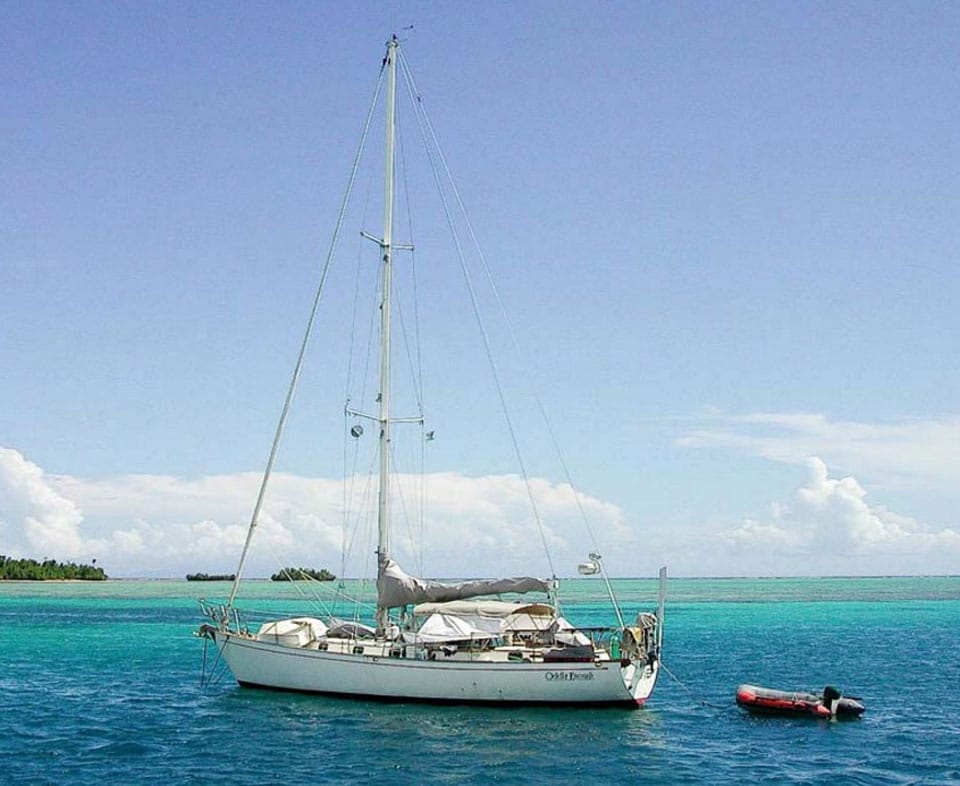
6. Peterson 44
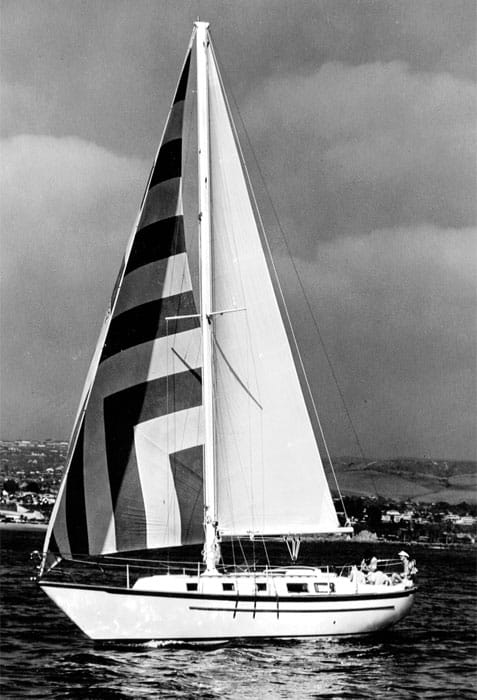
5. Pacific Seacraft 37
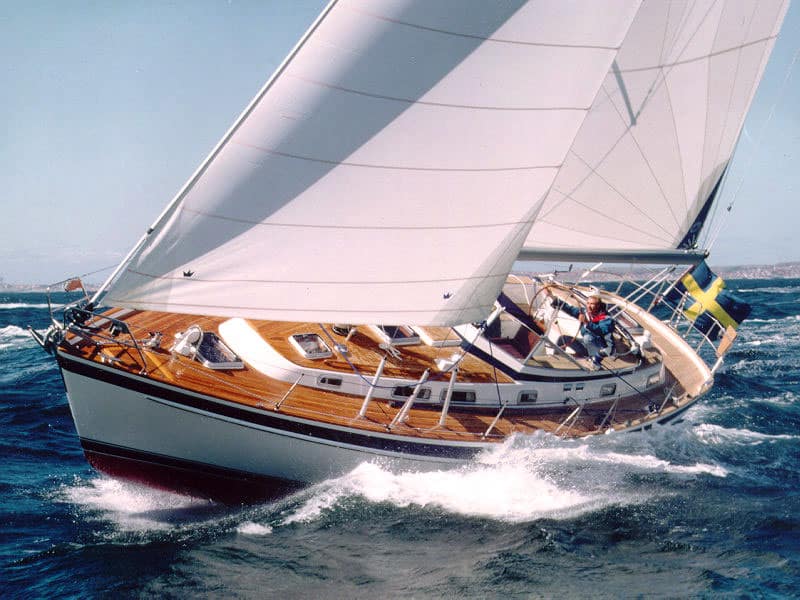
4. Hallberg-Rassy 42
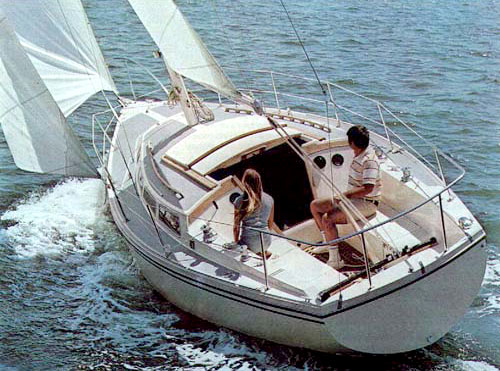
3. Catalina 30
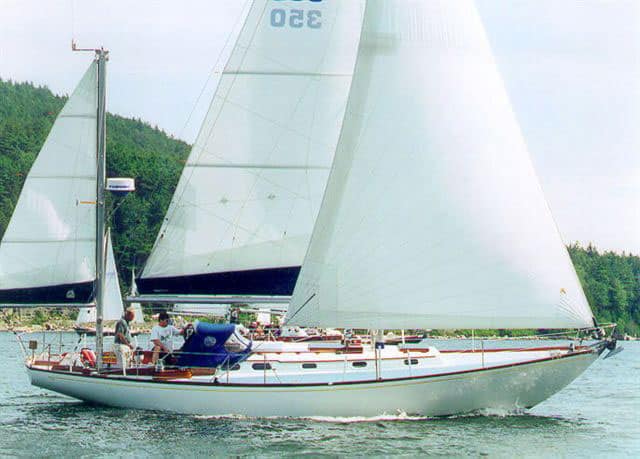
2. Hinckley Bermuda 40
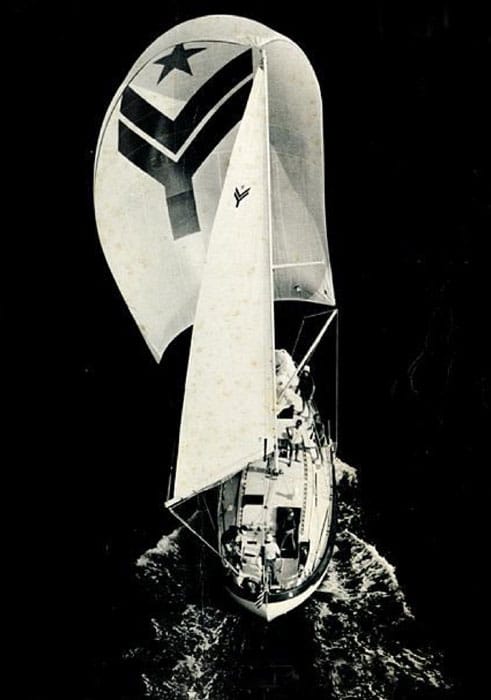
1. Valiant 40
- More: monohull , Sailboats
- More Sailboats

Pre-Owned: 1988 Hylas 47

Catalina Introduces the 6 Series

Sailboat Preview: Elan GT6 Explorer

For Sale: 1984 Camper & Nicholsons 58
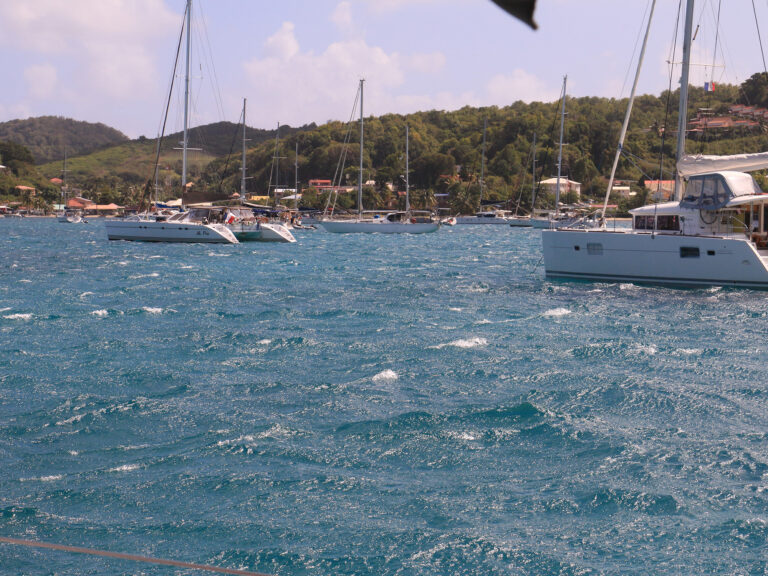
Understanding Wind in the West Indies
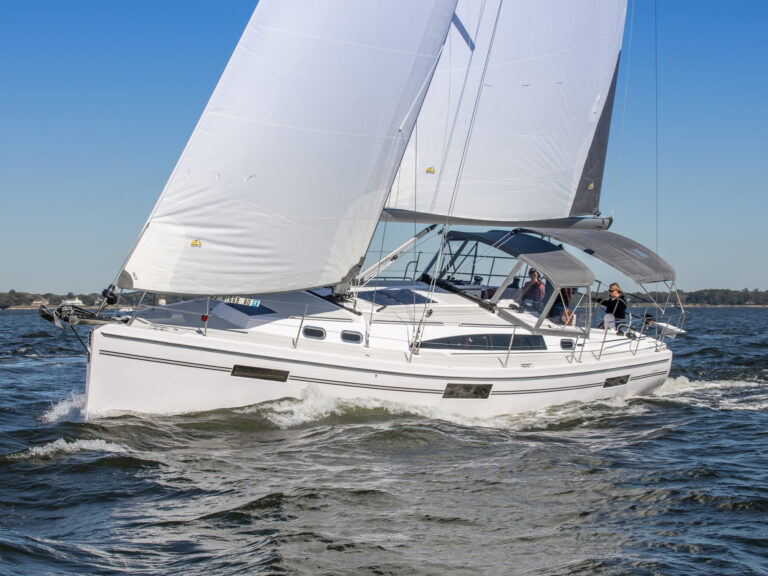
At Your Service

Galápagos: A Paradise Worth the Paperwork
- Digital Edition
- Customer Service
- Privacy Policy
- Terms of Use
- Email Newsletters
- Cruising World
- Sailing World
- Salt Water Sportsman
- Sport Fishing
- Wakeboarding
- New Sailboats
- Sailboats 21-30ft
- Sailboats 31-35ft
- Sailboats 36-40ft
- Sailboats Over 40ft
- Sailboats Under 21feet
- used_sailboats
- Apps and Computer Programs
- Communications
- Fishfinders
- Handheld Electronics
- Plotters MFDS Rradar
- Wind, Speed & Depth Instruments
- Anchoring Mooring
- Running Rigging
- Sails Canvas
- Standing Rigging
- Diesel Engines
- Off Grid Energy
- Cleaning Waxing
- DIY Projects
- Repair, Tools & Materials
- Spare Parts
- Tools & Gadgets
- Cabin Comfort
- Ventilation
- Footwear Apparel
- Foul Weather Gear
- Mailport & PS Advisor
- Inside Practical Sailor Blog
- Activate My Web Access
- Reset Password
- Customer Service

- Free Newsletter

Blue Jacket 40 Used Boat Review

Catalina 270 vs. The Beneteau First 265 Used Boat Match-Up

Ericson 41 Used Boat Review

Mason 33 Used Boat Review

How to Create a Bullet-Proof VHF/SSB Backup

Tips From A First “Sail” on the ICW

Tillerpilot Tips and Safety Cautions

Best Crimpers and Strippers for Fixing Marine Electrical Connectors

Polyester vs. Nylon Rode

Getting the Most Out of Older Sails

How (Not) to Tie Your Boat to a Dock

Stopping Mainsheet Twist

Fuel Lift Pump: Easy DIY Diesel Fuel System Diagnostic and Repair

Ensuring Safe Shorepower

Sinking? Check Your Stuffing Box

What Do You Do With Old Fiberglass Boats?

Boat Repairs for the Technically Illiterate

Boat Maintenance for the Technically Illiterate

Whats the Best Way to Restore Clear Plastic Windows?

Stopping Holding-tank Odors

Giving Bugs the Big Goodbye

Galley Gadgets for the Cruising Sailor

The Rain Catcher’s Guide

Sailing Gear for Kids

What’s the Best Sunscreen?

UV Clothing: Is It Worth the Hype?

Preparing Yourself for Solo Sailing

R. Tucker Thompson Tall Ship Youth Voyage

On Watch: This 60-Year-Old Hinckley Pilot 35 is Also a Working…

On Watch: America’s Cup

On Watch: All Eyes on Europe Sail Racing

Dear Readers
- Belowdecks & Amenities
- Marine Electronics
- Systems & Propulsion
Test of Six 12-volt Watermakers
While at first blush all appear about the same size, we find important differences in output and current consumption. the spectra 180 is amazingly efficient but expensive. of the six, village marine tec's little wonder seems the most tried and true..
Last month we took an overview of the pros and cons of 12-volt watermakers. This month, we look at high-output machines from five manufacturers, ranging from systems from industry giants such as Village Marine to small shops such as SK Engineering. All of the watermakers we looked at were production models, although the Spectra 180 we tested had been re-configured to serve as a demonstration model.
As we began our market survey and field testing, we discovered that a number of other manufacturers are jumping into the fray, realizing that 12-volt watermakers constitute a small but growing segment of the market. Most notable among these new players is HRO-another industry giant-which has been promising a state-of-the-art, computer-controlled, self-contained 12-volt watermaker for more than a year. We saw the literature a year ago at the Miami Boat Show. We saw a non-operational mockup last fall at the Southampton, England boat show. We have yet to see a functional machine in the flesh.
With the assistance of Andy Cortvriend of Ocean Link, a knowledgable Portsmouth, Rhode Island, marine servicing company, we tested product output, water quality, and electrical consumption of all the watermakers. Electrical consumption was measured with a Cruising Equipment amp-hour meter, using gel cell batteries maintained at full capacity by a Heart inverter/charger between tests.
Saltwater was pulled from lower Narragansett Bay into a large storage tank maintained at a constant temperature during the tests. The waters at our Little Harbor test facility are not as clean as open ocean waters, but are closer to the reality of the watermaking most cruisers will experience. This was not a pure laboratory test with manufactured sea water of exactly the right total dissolved solids (TDS).
We then examined each machine carefully on the bench, looking for weak points, strong points, potential installation or maintenance hang-ups, and general quality of construction.
The quality of output water was tested with a TDS meter and all machines easily met standards for potability.
The real test of any watermaker is how it performs over time-not just months, but years. Because maintenance is a key factor in longevity and trouble-free operation, the owner/operator will bear a large portion of the responsibility for the long-term success of any watermaker installation.
Here are our findings.
Village Marine Little Wonder When Village Marine Tecs Little Wonder was introduced almost a decade ago, it was the first 12-volt watermaker that actually had the capacity to supply the water needs of a medium-sized cruising sailboat without almost continual running. More than 1,500 of these compact, well-made machines have been produced, and there have been virtually no changes to the design or components over the entire production run.
Both 12-volt and 24-volt models are available, with the higher voltage model producing slightly more product flow.
The standard model is totally self-contained in a well-designed package, with all components bolted to a heavy aluminum chassis, topped off with a removable aluminum cover. Mounting requires drilling through the chassis for suitable through-bolts.
The three plumbing connections-feed water, product water, and brine discharge-are pre-plumbed through one end of the case. The wiring junction box also contains connections for an optional feed water boost pump, and an internal 25-amp breaker to protect the electrics.
Although the package is tightly plumbed, there is reasonable space between components for service.
Power for the high-pressure pump is provided by a continuous-duty 1/4-hp. Pacific Scientific motor, rated at 21.5 amps at full power. The motor is connected to the high-pressure pump by a lightweight cogged belt.
The heart of the Little Wonder is its proprietary high-pressure pump, specially made by Village Marine for this machine. It features a titanium pump head with ceramic plunger-a combination which should be corrosion-proof for the life of the watermaker. All wetted parts in the pump are titanium, type 316 stainless steel, or ceramic. High-pressure plumbing and connectors are type 316 stainless.
Monitoring includes a high-pressure gauge and product flow gauge. System pressure can be adjusted if necessary using an open-end wrench, although the factory pre-set pressure of 800 psi should be correct for most watermaking situations. The pressure regulator is a high-quality regulator, rather than the more commonly seen needle-valve adjuster.
The fiberglass pressure vessel and the standard-sized 2521 membrane are both manufactured by Village Marine, although they are industry-standard in size.
In our tests, the Little Wonder produced a product flow of 5.8 gph at 13 volts, drawing 16.7 amps-about 37.4 watts per gallon. This does not include the 1-amp current draw of the small optional booster pump, which is required for above-the-waterline installations, long feed water runs, or installations containing multiple pre-filters.
The water produced by the machine we tested was very high quality. The noise level of 79 dB, with the cover removed, was louder than the two quietest machines tested, but was not loud enough to be objectionable.
The self-contained unit is 25.5″ long, 11″ wide, and 9.25″ high, and requires a slightly larger mounting space to accommodate plumbing connections and allow access for removal of fastenings holding the cover. For tight installations, a modular version is available, which does away with the mounting chassis and uses flexible high-pressure hoses rather than rigid stainless steel tubing. Obviously, installation of the modular unit requires slightly more time, but offers a lot of flexibility-very desirable in field installations aboard the typical cruising sailboat, in which locker or shelf space is at a premium.
Documentation is excellent, with a 35-page manual covering installation, operation and maintenance.
The warranty is somewhat complex. The membrane has a three year warranty, the pressure vessel a lifetime warranty, the high pressure pump a one-year warranty-although some of its internal components have only a 90-day warranty-and the electric motor 12 months. You need a flow chart to keep it straight.
The Little Wonder comes with pre-filter, three-way cleaning valve, basic plumbing connectors, and a membrane cleaning kit. You supply PVC hose, hose clamps, and the wiring connection. Options include the boost pump (standard with the modular version, $144 for the self-contained version), a three-way sampling valve ($38), a pre-plumbed fresh water flushing system ($150), hand-held salinity meter ($49), and spares kit for extended cruising ($199). For long-range cruising, all of these options are nearly essential for any properly installed watermaker.
List price of either the self-contained or modular 12-volt Little Wonder is $3,195. It is available at slight discounts through some mail-order catalogs, and there are periodic promotions at boat shows featuring special prices and thrown-in options.
Weight of the self-contained system is 63 lb. (The modular system weighs 48 lb.)
Village Marine will soon introduce a higher-output version of the Little Wonder, a 1/3-hp. watermaker in almost the same package size. Current draw, however, will be about 26 amps, requiring heavier wiring and perhaps a look at your battery capacity and charging capabilities.
Bottom Line: There are quieter 12-volt machines, more efficient ones, cheaper ones, and others that put out more water. The Little Wonder, however, has a combination of features-ease of installation, relatively low current draw, high quality components, and a 10-year track record-that is hard to beat. You can’t go wrong with this watermaker.
SK Engineering DC 150 SK Engineering is a small watermaker manufacturer based in Ft. Pierce, Florida. They do virtually no advertising, go to few boat shows, and have a very low-overhead operation geared to the Florida market. While most of their units are AC-powered, their DC 150 is a 12-volt model with a nominal output of 6 gallons per hour.
The DC 150 is powered by a 1/3-hp. continuous-duty Pacific Scientific motor rated at 26 amps. This is a larger version of the motor that powers the Village Marine Little Wonder.
The membrane is a standard 2521, and the pressure vessel appears identical to that used by Village Marine. All high-pressure fittings are type 316 stainless, as is the rigid high-pressure plumbing.
A Giant high-pressure pump provides pressure for the system. This is a standard industrial pump with a stainless steel pump head. A complete servicing manual for the pump is provided.
This is an open-frame system, with the components mounted on a heavy aluminum chassis. The footprint is 18.5″ x 12.5″, with a height of 8.5″. The pressure vessel is mounted on the outside of the chassis, increasing overall dimensions to about 25″ long outside the footprint of the mounting frame. Rubber vibration mounts are provided to isolate the chassis, reducing noise and vibration.
System pressure is user controllable via a knob-operated valve on the panel. Monitoring capabilities include system pressure and product water flow.
In operation, the DC 150 was one of the quietest machines tested, producing a maximum of 72 dB of noise. Product flow of the test machine was 6.5 gallons at 800 psi, with the motor drawing 21.3 amps at 13 volts. This translates into electrical consumption of 42.6 watts per gallon of water produced. As with other systems, adding a booster pump for above-waterline installations would add to total current draw. SK states that the system will operate without a booster pump in installations up to 2′ above the waterline.
One of the nicer features of this machine is the availability of a remote operating panel. This option allows routine operation of the system without direct access to the watermaker itself, which greatly increases installation flexibility.
The system is supplied with a pre-filter with a vacuum gauge, allowing you to monitor the condition of the filter without opening the housing. A freshwater flush kit-highly-desirable in any installation-is a $125 option. The 12-volt booster pump, drawing 1 amp, is a $120 option. An extensive cruising kit, including 12 pre-filters, rebuild parts for the high-pressure pump, cleaner, preservative, and other spares, costs $330.
SKs pricing is very competitive. The self-contained DC 150 has a list price of $2,740, but has a discount price-which we suspect would be available to most sailors who approach the manufacturer directly-of $2,350. The remote panel version has a discount price of $2,450, although the list price jumps to $3,140.
The system documentation is basic, but adequate. Total system weight is 74 lbs.
Being a small manufacturer, SK has a limited network of regular servicing dealers, but since all the system components are essentially off-the-shelf items, any good watermaker technician could repair the unit if necessary.
This is a quiet system with high-quality components and a great deal of installation flexibility when coupled with the optional 8″ x 8″ remote panel. Its open-frame design is easily serviced, although the package is not as neat as a totally enclosed package like the Little Wonder.
Bottom Line: With its 1/3-hp. motor, electrical installation will require careful thought, and you will need to look at your entire charging system and battery capacity a little more closely than you would with a 1/4-hp. machine.
The low price makes this system worth looking at. It is simple, soundly engineered, and utilizes good quality, standard components that are easily serviced. The only potential drawback is the small size of the manufacturer, which might limit long-term support.
PUR PowerSurvivor 160E The PowerSurvivor 160E is PURs entry into the high-output 12-volt watermaker market. It is the latest in a long line of machines that dates back to the PowerSurvivor 35, the first practical small 12-volt watermaking system.
The 160E uses a standard 2521 membrane in a proprietary housing. It is a dead-simple modular system, utilizing a Leeson 1/3-hp. motor directly coupled to a proprietary stainless steel high-pressure pump. Flexible high-pressure hose between the pump and the pressure vessel allows a great deal of mounting versatility, including bolting the entire system to a bulkhead. All high-pressure fittings are 316 stainless steel.
At 54 lbs. for the entire system, this is one of the lightest high-output watermakers we tested.
When we say dead-simple, we mean it. Other than the pressure bypass valve and the on-off switch-which you provide-there are no gauges to monitor, no product flow meter, and no means of adjusting system pressure, which is pre-set at the factory and is not intended to be user-adjusted. You would still, of course, install the product sampling valve, cleaning valve, and pre-filter, just as with all other units.
The 160E is a gravity feed system, and can only be installed below the waterline.
Our test machine produced 6.5 gallons of water per hour, drawing 17.3 amps at 13 volts-less than we would expect for a 1/3-hp. system. This yields an energy consumption of 34.6 watts per gallon of water-more efficient than average for the watermakers in our tests.
There are several drawbacks to the PowerSurvivor 160E. First, the system is the noisiest of any we tested, putting out 80 dB at our standard test distance of 1′. Furthermore, the reciprocating drive system of the high-pressure pump produces not a steady noise, but one punctuated by a loud popping sound at one stage of the piston stroke. We would recommend mounting this watermaker in a sound-insulated compartment if possible.
The reciprocating pump also produces pulsing in the systems hoses, which should be well-secured to prevent fatigue over time.
This is one of the more expensive watermakers we tested, with a list price of $4,440. Several discount marine catalogs sell the 160E for as low as $3,800. Options include a repair seal kit ($80), an extended cruise kit ($200), and an extensive preventative maintenance package ($420).
On the plus side, routine service of the system, including replacement of high-pressure pump seals-a requirement every 1,000 hours of operation-is simple and well-documented in the excellent instruction manual.
We also looked at two other units from PUR, the PowerSurvivor 80II modular and the newly-designed PowerSurvivor 40E. The 80II is very similar to the 160E, simply scaled down. We did not test it, but since all the other PUR machines met the manufacturers specifications, we expect this one to do the same. The smaller-diameter membrane of the 80II limits you to membranes from the machines manufacturer. It lists for $3,330, and is routinely discounted to about $2,950-about the same as the higher-output Little Wonder.
The PowerSurvivor 40E is the totally re-designed successor to the PowerSurvivor 35, the original high-output 12-volt watermaker. In our tests, its 1/18-hp. motor drew 4.8 amps, producing about 1.6 gallons per hour, consuming 39 watts per gallon of water. It is very compact, and like all PUR watermakers, easy to service and operate.
At 72 dB, its noise level was the equivalent of the quieter large 12-volt machines.
With its light weight (25 lbs.) and tiny footprint-about 15-1/2″ x 15″ x 6″ high-the 40E would be the most suitable watermaker for a single sailor or a couple cruising on a small or very light boat-a multihull, for example-with limited electrical generating capacities, perhaps just a few solar panels and small batteries.
In an emergency, the motor can be disconnected from the 40E, and it can be operated manually by a handle, just like its Survivor 35 predecessor. Because virtually all the parts of the 40E are proprietary, including the pressure vessel, membrane, and pump, you will only be able to service the units with parts from PUR.
List price of the 40E is $2,220/$1,900 discount, with options analogous to those available for larger PUR machines.
Bottom Line: All three of these smaller watermakers are actually the core business for PUR, and fill specific niches where there is no competition. Although the 160e is an easily serviced watermaker, and is more efficient than average, its high price and noisy operation are drawbacks. If the installation flexibility of the 160E is not essential to you, we think there are other 12-volt watermakers of similar capacity and quality of construction that offer better value.
Caribbean Technology The Caribbean Technology YM-200 DC 12 made by Great Water is the highest-capacity 12-volt watermaker we tested. Its rated output of 10.2 gph at 800 psi significantly exceeds that of most of the watermakers in our test.
In many ways, this modular system mimics both the output and sophistication levels of more mainstream engine-driven or 110-volt systems, including a direct drive high-pressure pump, high and low pressure automatic shutoff, and a sophisticated remote operating panel including power switch, pressure regulator, and gauges for system pressure, product water flow, and brine flow.
Power is provided by a 1/2-hp. continuous-duty motor directly coupled to a stainless steel Wanner Hydracell industrial pump. An instruction manual for the pump leads you through the periodic maintenance required. A new oil venting system in the pump claims to have eliminated an earlier tendency of Wanner pumps to weep oil.
A Codeline pressure vessel holds a standard 2521 membrane. Because this is a modular system, high-pressure plumbing includes flexible hose rather than rigid tubing. All fittings are 316 stainless steel.
A Flojet boost pump is standard, allowing the system to be mounted above the waterline. This pump-actually designed as a shower drain pump-adds 3.6 amps to the current draw of the system.
A product flow rate of 10.2 gph is pretty much the absolute capacity of a 2521 membrane, and our test system had no trouble achieving that rate of flow. The downside is that to achieve this flow, the electrical demands of the system are much higher than any other watermaker we tested: 38 amps at 13 volts, or 48.4 watts per gallon.
You would never run this system without running the engine at the same time. The current draw is high enough to drop system voltage down instantly. In all fairness, for maximum efficiency none of the systems drawing 15 amps or more should be operated without running the engine at the same time.
Because of the high current draw, your charging system should be equipped with a big alternator if you choose this watermaker. To take advantage of the big alternators capacity, youll want a big bank of batteries. The system will probably need a 50-amp circuit breaker separate from the main panel, as many main panels do not have service wiring that is really heavy enough for this type of load.
You will also need heavy wiring between the circuit breaker and the systems electrical relay box. The manufacturer recommends 4-gauge wiring, which is heavy and may in some cases be difficult to run.
Obviously, a great deal of planning and thought is required before installing a system of this capacity and with these electrical requirements.
On the plus side, the fully modular design allows the system to be mounted in a surprisingly small space, essentially little more space than is required by a modular 6-gph system.
Weight of the YM-200 is 83 lbs.
The manual includes excellent system schematics, and reasonably thorough instructions for installation, operation, and maintenance of the watermaker.
As you might expect, the size of the pumps and motors result in a fairly noisy system: 80 dB at a distance of 1′ from the high-pressure pump-the big noisemaker in any system. Due to its weight, electrical needs, and noise, the best location for this watermaker is a sound-insulated engine room or compartment, as close as possible to the ships electrical supply.
Bottom Line: The best application for this system is a larger boat with existing electrical capacity, and lacks a genset or a means of installing an engine-driven watermaker.
With a list price of $3,500-which is sometimes discounted through dealers-this is not an expensive system. In fact, on a dollar cost per gallon of water produced per hour basis, this is the cheapest system of the entire lot to purchase. It is not an electrically efficient system, but if the maximum output in the minimum time is your primary criterion in a 12-volt watermaker, the Caribbean Technology is definitely worth considering.
Spectra 180 The Spectra 180, and a few variations on its basic version, are the only watermakers produced by Edinger Marine Services. It is radically different from other 12-volt watermakers, extracting a lot of freshwater with astonishingly low power consumption.
When you first see the Spectra 180, your first impression is that one component-a big DC motor to power the high-pressure pump-has been left out. In fact, the entire system is powered by a small 12-volt pump and motor-about 1/8-hp.-no larger than the water pressure pump on a 35-footer. This is possible due to the unique design of the Clark pump, a remarkably energy-efficient pump created specifically to power this watermaker.
The Clark pump is totally unlike any other high-pressure pump used in watermakers. To oversimplify, the Clark uses two opposing pistons and cylinders with a single connecting rod. System pressure is created by the connecting rod driving the piston into the opposite cylinder. Without a detailed technical explanation of exactly how any why this works, it is fair to say that compared to other methods of creating adequate pressure for reverse osmosis, this is a remarkably energy-efficient system.
The Spectra 180 is also different from other watermakers in that it uses a standard full-size membrane whose pressure vessel is just over 44″ long-almost twice the length of the pressure vessel containing the 2521 membrane used by all the other high-capacity systems in out tests. Mounting this much longer pressure vessel may present problems in some boats. The Clark Pump housing itself is almost as long as the pressure vessel for a 2521 membrane.
According to the manufacturer, they have torn down Clark pumps after 3,000 hours of operation and found no significant wear. In any case, the pump is easy to overhaul in the field by a reasonably proficient owner. An overhaul manual for the pump is part of the system documentation, which is basic but adequate.
This is a modular system, with a remote control panel that can allow basic operation without direct access to the other system components. Total weight is about 51 lbs.
Our test system was a factory demonstrator, configured as a self-contained frame system with some performance compromises compared to the correct, conventional modular installation. Instead of a single large membrane, our test system utilized two 2521 membranes, similar in flux area to the larger membrane.
From a pure electrical efficiency perspective, the Spectra 180 was the most impressive watermaker we tested. With a current draw of 8.6 amps at 13 volts, our test unit pumped out fresh water at the rate of almost 9.5 gph–almost as much as the Great Water system, which draws almost five times as much power. Thats only 11.8 watts per gallon, by light years the most electrically efficient machine in our test.
In addition, at a noise level of 65 dB, this was the quietest system.
The Spectra 180 is not perfect, however. The system runs at low pressure compared to other systems-just 600 psi with our 70F water temperature-and the product water, although perfectly acceptable, had the highest total dissolved solids in our tests. Since product water quality can vary with different membranes, we are reluctant to attach much significance to this slightly lower water quality, which was still well within standards for drinking water.
We have some concerns about the relatively low feed water flow rate through the big membrane. The more water that passes over a membrane, the better it likes it, according to most manufacturers. The Spectras flow rate of about 90 gph is quite small for the large membrane, and we do not know how the longevity of the membrane might be impacted by this.
The ends of the main block of our systems Clark pump were machined from bronze, and showed some signs of surface oxidation at the interface to the Delrin main block. According to the manufacturer, future editions of the Spectra will have stainless steel components in place of bronze.
Likewise, the pressure relief needle valve on our test system dribbled when it was barely cracked open. We were told that this component has also been re-designed.
Our test system utilized brass high-pressure fittings, rather than the type 316 stainless used by every other manufacturer. Some manufacturers claim that the only reason to use brass is to save money, while others admitted to us, a bit reluctantly, that they had never seen a brass high-pressure fitting with significant corrosion, and stainless was generally used for appearance and galvanic compatibility as much as for longevity purposes.
Given the cost of the Spectra 180, we think you should get type 316 stainless fittings, and type 316 pump block components. The price of the Spectra 180 is $4,650, the highest of any machine we tested. You pay a significant premium for a major increase in electrical efficiency. Service, parts, and options prices are similar to those of other manufacturers: $350 for a long-term offshore service kit, for example. The price of the installation kit-$275-strikes us as a bit high for such parts as the three-way servicing and diverting valves that some other manufacturers include in the price of the basic system.
According to the manufacturer, although the system is fully functional and in production, they are still looking at further developments, including a composite Clark pump that would have no metal components. Relatively few of these machines are in use in the field at this time, as the product is quite new to the market.
Bottom Line: The most attractive feature of this system is its energy efficiency. We are less impressed by its price, and by the fact that it would appear to be a system with some room for refinement. However, if being able to run a watermaker without running the engine at the same time is important to you, and if price is less important than electrical efficiency, the Spectra 180 would be the choice among the systems we tested.
Conclusions/Recommendations Because virtually every cruising boat has different needs, priorities, and installation requirements, no single high-capacity 12-volt watermaker is going to fit the bill for every sailor. These are all well-designed, fully functional machines. Each has specific advantages and disadvantages, which we have described.
All meet their manufacturers performance specifications in terms of electrical consumption and product water output. Variances of +/- 10% to 15% from the manufacturers specifications for performance are normal.
The variations in product water quality we found are not significant. All the watermakers produce water that meets international standards for potability. The quality of the water will vary over time with any watermaker and with any membrane. A simple hand salinity tester-available from most watermaker manufacturers-is all that is required for routine checking of water quality. Most owners who use their watermakers daily don’t even bother testing salinity. They start the machine, let it run for a few minutes, taste the water, and if it tastes good, divert it to the tank.
All watermakers have similar maintenance requirements, and all we tested are reasonably easy to service. Your choice of a specific system will be largely the result of specific requirements for your boat and your cruising. The key questions are the amount and shape of space you have for the watermaker, the existing or planned electrical generating and battery storage capacity of your boat, and the amount of water you must make in a specific time frame.
All watermakers are maintenance-intensive. To a large extent, the long-term, hassle-free operation of a watermaker is a function of where and how it is used, and how religiously routine maintenance is performed. None of these machines will stand abuse.
A freshwater flushing system is an important component of a watermaker installation. Of the machines tested, only Village Marine and SK Engineering offer a ready-made freshwater back flush system as an option. While it is an easy system to design and build for anyone capable of installing a watermaker, it should be offered and recommended as an option by other manufacturers as well.
None of these systems is beyond the installation capabilities of a reasonably handy boat owner. If space permits, a totally self-contained system such as Village Marines Little Wonder will be slightly easier to install, but the total difference in installation time between self-contained and modular systems should not be more than a few hours unless there are vexing component mounting problems to solve. Plumbing and wiring connections are essentially the same for modular and self-contained systems, although a modular system with a remote panel will certainly take the longest time to install because of the number of individual components that must be placed.
All installations require attention to detail, particularly when it comes to wiring. We would not recommend you install a watermaker as the first major project you undertake on your boat, since it will require putting in a through-hull, installing heavy-duty wiring, and completing some plumbing that may in some boats be more difficult than it may first appear.
While all watermakers are covered by manufacturers warranties, all specifically exclude damage due to abuse in operation, poor maintenance, or improper installation.
A watermaker is not a use-it-and-forget-it product. Its for those who live aboard. If you don’t use it regularly and maintain it properly, you are wasting your money, and you shouldnt own one. On the other hand, if you are willing to accept the responsibility of maintaining a fairly demanding piece of equipment, a 12-volt watermaker can give you-particularly if you are a cruising sailor who desires long-term independence from shore-a degree of freedom you may not otherwise find.
Contacts- Edinger Marine Service, Inc., 298 Harbor Dr., Sausalito, CA 94965; 415/332-3780, fax 415/332-8527. Great Water, Inc., 5148 Peach St. Erie, PA 16509; 814/838-0786, fax 814/838-8700. Ocean Link, 52 Maritime Dr., Portsmouth, RI 02871; 401/683-4434. PUR, Recovery Engineering, 9300 75th Ave. North, Minneapolis, MN 55428; 800/845-7873, fax 312/315-5505. SK Engineering, 4256 N. US 1, Suite 1, Ft. Pierce, FL 34946; 800/489-0852, fax 561/489-0808. Village Marine Tec., 2000 West 135th St., Gardena, CA 90249; 800/421-4503, fax 310/538-3048.
RELATED ARTICLES MORE FROM AUTHOR
Excellent article, thank you for the research and detailed info.
Agree! Thank YOU
I really appreciated reading your recommendation, especially power consumption from one manufacturer to the other.
I am some how confused with Spectra manufacturing and Katadyn. I thought it was all Katadyn for some time now. When was this test done?.
Great review, except it would have been helpful to have specific TDS figures for the output in each case.
The contact information for SK engineering is wrong. Went to some health insurance company that sounded like a scam.
LEAVE A REPLY Cancel reply
Log in to leave a comment
Latest Videos

Cabo Rico 34 Boat Review

Super Shallow Draft Sailboat: The Leeboard Sharpie

Hans Christian 41T – Boat Review

Seven dead after superyacht sinks off Sicily. Was the crew at...
Latest sailboat review.

- Privacy Policy
- Do Not Sell My Personal Information
- Online Account Activation
- Privacy Manager
The Ultimate Guide to Small Boats: What Are Your Options?
Small boats offer a unique way to enjoy the water, whether you’re an angler, a day cruiser, or a weekend adventurer. They provide affordable entry points into boating while delivering versatile and personalized experiences. In this guide, we will explore different types of small boats, their key features, price ranges, and specs to help you decide which option best suits your needs.
Why Choose a Small Boat?
Small boats are ideal for those looking to get into boating without the commitment or expense of a large vessel. Some key advantages include:
- Affordability : Small boats generally cost less to buy and maintain.
- Ease of Use : Many are simple to operate, requiring minimal skill or certification.
- Maneuverability : Their smaller size makes them easier to navigate through tight spaces and shallow waters.
- Portability : Many small boats can be trailered or even carried by hand.
- Versatility : Suitable for a range of activities, from fishing to watersports.
Types of Small Boats
1. jon boats.
Jon boats are lightweight, flat-bottomed boats typically made from aluminum or polyethylene. They are favored by anglers and hunters because of their stability in calm waters like lakes and rivers.
- Specs : Range in length from 10 to 18 feet. Most models have a shallow draft, allowing you to navigate very shallow waters.
- Engine : Often powered by small outboard motors, though some are manually rowed.
- Capacity : Seats 2 to 4 people comfortably.
- Price : $700 to $5,000 depending on size and material.
- Easy to maneuver and transport
- Great for fishing in shallow waters
- Limited in rough waters
- Basic design without many features
2. Dinghies
Dinghies are small, open boats that can be powered by oars, small outboard motors, or sails. They’re commonly used as tenders to larger boats or for short-distance transportation in calm waters.
- Specs : Typically between 6 to 12 feet in length.
- Engine : Often powered by a small outboard engine (2-15 hp) or manually rowed.
- Capacity : Seats 2 to 6 people, depending on the size.
- Price : $500 to $2,000 for basic inflatable or hard-shell models.
- Versatile for various water activities
- Easy to transport (especially inflatable models)
- Often small enough to carry
- Not ideal for long-distance travel
- Vulnerable to capsizing in rough conditions
3. Inflatable Boats
Inflatable boats are constructed from durable rubberized fabric and are designed to be lightweight and easy to store when not in use. These boats are excellent for families or recreational boaters who need something compact and portable.
- Specs : 6 to 18 feet in length.
- Engine : Can be equipped with a small outboard motor or paddled manually.
- Capacity : Can carry anywhere from 2 to 8 people.
- Price : $200 to $5,000 depending on size, material, and brand.
- Extremely portable and easy to store
- Versatile for different activities
- Stable and buoyant
- Limited speed and power compared to rigid hull boats
- Requires inflation and deflation with every use
4. Kayaks and Canoes
These human-powered vessels are ideal for solo adventurers or small groups looking to explore lakes, rivers, and coastal areas. Kayaks are generally enclosed, while canoes are open-topped.
- Specs : Range from 8 to 17 feet for kayaks, and 12 to 20 feet for canoes.
- Engine : Paddled manually.
- Capacity : Kayaks are typically single or double-seaters; canoes can hold 2 to 4 people.
- Price : $300 to $2,500 depending on material and design.
- Perfect for exercise and exploration
- Low maintenance and affordable
- Suitable for quiet, peaceful waters
- Not ideal for open water or rough conditions
- Limited in speed and storage space
5. Jet Skis and Personal Watercraft (PWC)
Jet skis are small motorized vessels designed for high-speed thrills and are excellent for watersports enthusiasts. They offer a more adventurous experience compared to most small boats.
- Specs : Average length is 8 to 12 feet.
- Engine : Powered by an inboard jet drive with engine sizes ranging from 60 hp to over 300 hp.
- Capacity : Usually 1 to 3 riders.
- Price : $5,000 to $15,000 depending on the brand and engine power.
- Fun and fast; great for watersports
- Easy to tow on a trailer
- High maneuverability
- Limited storage space
- Not ideal for long trips or rough waters
6. Pontoon Boats (Small Models)
Pontoon boats are flat-decked boats that float on two or more aluminum tubes called pontoons. Smaller pontoon boats are great for families or groups who want a stable and comfortable ride on lakes or calm waters.
- Specs : Small models range from 12 to 20 feet.
- Engine : Outboard motors ranging from 25 hp to 90 hp.
- Capacity : Can comfortably accommodate 4 to 8 passengers.
- Price : $10,000 to $35,000 depending on size and features.
- Comfortable and spacious
- Great for family outings and relaxation
- Stable and safe
- Not suitable for rough waters
- Bulkier than other small boats
7. Center Console Boats (Small Models)
Center console boats are popular among anglers because of their 360-degree fishing capability and the central helm. Smaller versions provide versatility for both fishing and leisure.
- Specs : Typically 15 to 20 feet long.
- Engine : Outboard engines ranging from 60 hp to 150 hp.
- Capacity : Holds 4 to 6 people.
- Price : $15,000 to $40,000 depending on size and engine power.
- Excellent for fishing
- Good speed and power
- Limited in rough ocean conditions
- Not much shelter from the elements
How to Choose the Right Small Boat
When selecting a small boat , consider the following factors:
- Intended Use : Are you looking to fish, relax, or engage in watersports? Different boats serve different purposes.
- Water Type : Will you be boating in lakes, rivers, or the ocean? Choose a boat that’s designed for the conditions you’ll face.
- Budget : Small boats vary significantly in price. Determine how much you’re willing to spend, including maintenance, insurance, and storage costs.
- Storage and Transportation : Some boats can be easily trailered, while others may require a dock or mooring.
- Capacity : Consider how many people you’ll typically bring on board and make sure the boat can accommodate them safely.
Small boats offer a world of possibilities for boating enthusiasts, whether you’re after a leisurely cruise or a high-speed adventure. From affordable Jon boats to sporty jet skis, there’s an option for everyone. By understanding your needs and the specifications of each type, you can find the perfect small boat to get out on the water and enjoy the experience to the fullest.
Happy Boating!
Share The Ultimate Guide to Small Boats: What Are Your Options? with your friends and leave a comment below with your thoughts.
Read The Top 10 Winter Boating Destinations to Visit This Winter until we meet in the next article.
Similar Posts

Cheapest New Pontoon Boats: Setting Sail on a Budget Guide
Pontoon boats offer a unique blend of relaxation, fun, and functionality on the water. They’re perfect for cruising with family and friends, enjoying watersports, or simply soaking up the sun. But let’s face it, new boats can come with a hefty price tag. However, fear not, budget-minded boaters! There are still ways to experience the…

Boating Jokes: Anchors Aweigh with Some Buoyancy-Lifting
Boating is a fantastic way to spend a day. Sun, water, fresh air – what’s not to love? But sometimes, even the saltiest sailor or the most enthusiastic jet skier needs a little chuckle. That’s where boating jokes come in! Dive into this sea of puns and prepare to be tickled pink (or should we…

Boat Trader Official Site: Buying and Selling Boats Online
For those with a passion for the water, Boat Trader stands as a prominent online marketplace. Whether you’re a seasoned boater searching for your dream vessel or a first-time buyer dipping your toes into the world of boat ownership, Boat Trader offers a comprehensive platform to navigate your boating journey. This blog post delves into…

Build Your Own Pontoon Kit: DIY Guide
Pontoon boats offer a unique blend of stability, comfort, and versatility, perfect for cruising calm waters, enjoying days on the lake with family and friends, or even fishing adventures. But the cost of a pre-built pontoon boat can be daunting. The good news? With a DIY pontoon boat kit, you can transform your dream into…

Clean, Drain, Dry: Help Stop the Spread of Aquatic Invasive Species (AIS)
Aquatic Invasive Species (AIS) pose a serious threat to ecosystems, economies, and recreational waterways. These non-native organisms can rapidly spread, outcompeting local species and disrupting the balance of aquatic habitats. From plants like water hyacinth to animals like zebra mussels, AIS can choke waterways, damage boats, clog engines, and even diminish water quality. Fortunately, boaters…

Setting Sail with Davis Boats: Discerning Mariners
The allure of the open water is undeniable. Yet, navigating the world of boats, especially for first-time buyers, can feel overwhelming. But fear not, intrepid sailor! If you’re setting your sights on a vessel built for adventure and luxury, then Davis Boats deserves a spot on your shortlist. The Legacy of the Buddy Davis Hull…

IMAGES
VIDEO
COMMENTS
The Best Sailboats Under 25 Feet. Pocket cruiser: Cornish Crabber 24. British manufacturer Cornish Crabber has been producing beautiful, traditional style small sailboats for decades, ensuring they honor their heritage both in the construction style and appearance of their boats. The Cornish Crabber 24 is the most iconic of their range and ...
Some of the boats in this list are new designs, others are time-tested models from small sailboat manufacturers, but every one is easy to rig, simple to sail, and looks like a whole lot of fun either for a solo outing on a breezy afternoon or to keep family and friends entertained throughout your entire sailing season. ... Montgomery makes 15 ...
Catalina 16.5. jlodrummer. Catalina Yachts are synonymous with bigger boats but they have some great and smaller boats too such as Catalina 16.5. This is one of the best small sailboats that are ideal for family outings given that it has a big and roomy cockpit, as well as a large storage locker.
West Wight Potter 15. The West Wight Potter 15 is one of the best small trailerable and seaworthy 15-foot sailboats of all time. It's easy to handle and great for both coastal and offshore cruising. She has an aluminum mast and tiller, a small cabin that comfortably sleeps a couple and also we can't miss referring to her elegant design.
1. Hallberg-Rassy. Hallberg-Rassy is a Swedish yacht maker that's very well-known in the blue water cruising circles for making some of the highest quality and sturdiest sailboats. For many sailors, this is the number one sailboat brand as it offers absolute comfort, utmost safety, and good and easy handling.
Assent 's performance in the 1979 Fastnet Race makes the Contessa 32 a worth entry in the 25 best small sailing boat designs list. Credit: Nic Compton. Designed by David Sadler as a bigger alternative to the popular Contessa 26, the Contessa 32 was built by Jeremy Rogers in Lymington from 1970. The yacht's credentials were established when ...
FORGING AHEAD. From the past 50 years, and to the next 50, Catalina is devoted to providing owners and dealers with quality and value that has made Catalina America's largest sailboat builder. Frank Butler's vision and philosophy carries forward with Sharon Day, who worked alongside Frank for 48 years, at the helm of a veteran leadership team.
American Sail got its start over 40 years ago in 1976 with the purchase of the Aqua Cat catamaran. Over the years we have grown to offer many more sailboats in our line including a larger version of the Aqua Cat and four daysailers that are the Aqua Finn Daysailer, Pennant Daysailer, American 14.6, and American 18 Daysailer.
Without mentioning specific models and brands, it's difficult to outline which small boats are best but here are things to look for in good teaching boats. Some of the best small sailboats for beginners include: Boats with tillers steering. Boats with no winches. Sailing dinghies.
Keep scrolling to read on for the best small sailboat picks. Hunter 22. Hunter 22 is a clever boat for a very fair price. It retains the hull of its predecessor- Hunter 216, featuring an open transom and a large cockpit. However, it is made of fiberglass with balsa-cored topsides and a solid bottom section.
We'd like to think we've developed some great boats for people like us and for the next generation of sailors, so we want to do our part to protect the environment we all enjoy sailing in. Sail IT, Live IT, Love IT. RS Sailing was born from a passion for design and sailing. RS Sailing is the world's largest small-sailboat manufacturer.
Balboa 26. Balboa 26 Courtesy Of Matts G. Djos. First splashed in 1969, the Balboa 26 continues to enjoy a strong following among budget-minded cruisers. Built sturdy and heavy, all of the boat's stress points are reinforced. The spacious cockpit comfortably seats 4 and is self bailing, ensuring that sailors stay dry.
Outfitting Sailors with the Best Sailboats, Parts, and Apparel. We are dedicated to the joy and passion of sailing. For sailors the world over, West Coast Sailing is known as the go-to source for new and used small sailboats, parts, hardware, line, apparel, accessories, and expert advice. With over 15 years of industry experience, our team of ...
This is a list of notable sailboat designers and manufacturers, which are described by an article in English Wikipedia. Sailboat design and manufacturing is done by a number of companies and groups. Notable designers. Sailboat designer articles in Wikipedia: Alan Payne; Ben Lexcen; Bill Langan; Bill Lapworth;
Chase Small Craft produces precut, DIY wooden boat kits for people worldwide who want to build their own sailboat kit, rowboat or motorboat We provide a manual and plans, precut, CNC plywood boat kits and all the precut timber parts selected for boat kit. We include all the hardware and epoxy to make truly complete boat building kits for the ...
The Catalina 16.5 sits right in the middle of Catalina Yachts' line of small sailboats, which range from the 12.5 to the 22 Capri and Sport, and it comes in both an easy-to-trailer centerboard model and a shoal-draft fixed-keel configuration. www.catalinayachts.com. With the fiberglass board up, the 17-foot-2-inch boat draws just 5 inches of ...
For almost 20 years, we've called this awards program SAIL Best Boats, but this year, we're refining and renaming this program to better and more fairly represent the boats we've selected. Restricting boats to categories and labels—such as Best Cruising Monohull 30-40 feet and Best Performance Monohull 40-50 feet—doesn't bring our readers the full picture.
Groupe Beneteau. Beneteau First 25. The reason I am mentioning the name of the parent company here is that they own both Beneteau and Jeanneau, brands that are distinguishable on the surface, but if you look close enough, you will find them pretty similar, down to the fact that they are produced in the same factory.
Explore boat manufacturers, brands and discover which ones best suit your boating activities with a selection of popular brands and boat types. Find your boat with our explore section, wide range of editorial content and guides with thousands of boats available. Start your journey with boats.com!
Ovington Boats. $9,495.00 - $9,695.00. The most popular single handed one-design sailboat of all time. The ILCA is a single-handed racing dinghy with over 200,000 boats in 140 countries, it is the world's most popular adult and youth racing sailboat.
This watermaker is ideal for small powerboats and sailboats since it can serve as an efficient water supply. This model boasts about a 75% reduction in power consumption, especially when compared to other models. Pros Smooth and quiet water production; Can produce up to 2,280 liters per day; Ideal for small boats; It is energy efficient; Cons
30. Swan 44. A strong, robust cruising boat built for high-seas, blue water adventures, the Swan 44 was designed by Sparkman & Stephens, and the yacht's well-known Finnish manufacturers, Nautor Swan, produced 76 boats in a production run that lasted from 1972-1975.
SK Engineering is a small watermaker manufacturer based in Ft. Pierce, Florida. They do virtually no advertising, go to few boat shows, and have a very low-overhead operation geared to the Florida market. While most of their units are AC-powered, their DC 150 is a 12-volt model with a nominal output of 6 gallons per hour.
Types of Small Boats 1. Jon Boats. Jon boats are lightweight, flat-bottomed boats typically made from aluminum or polyethylene. They are favored by anglers and hunters because of their stability in calm waters like lakes and rivers. Specs: Range in length from 10 to 18 feet. Most models have a shallow draft, allowing you to navigate very ...